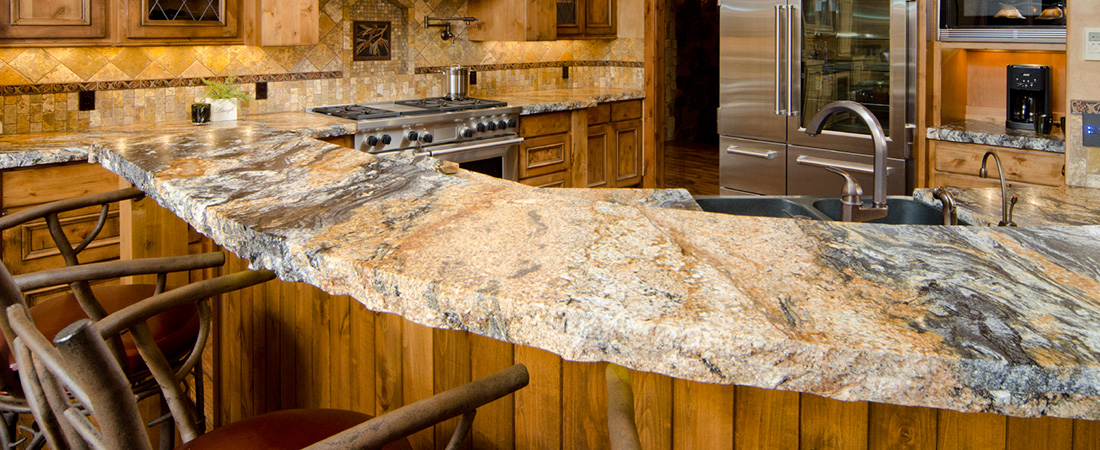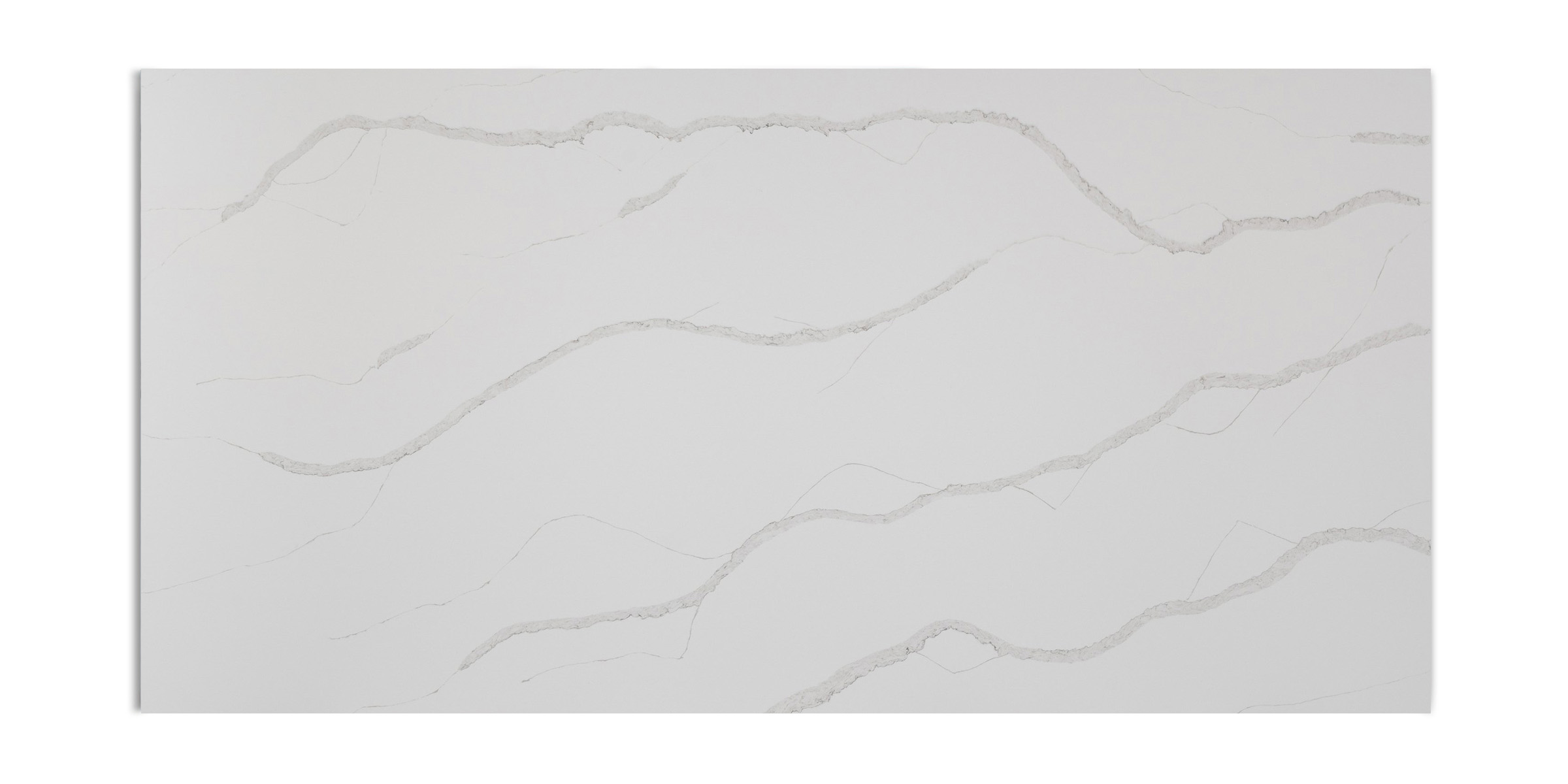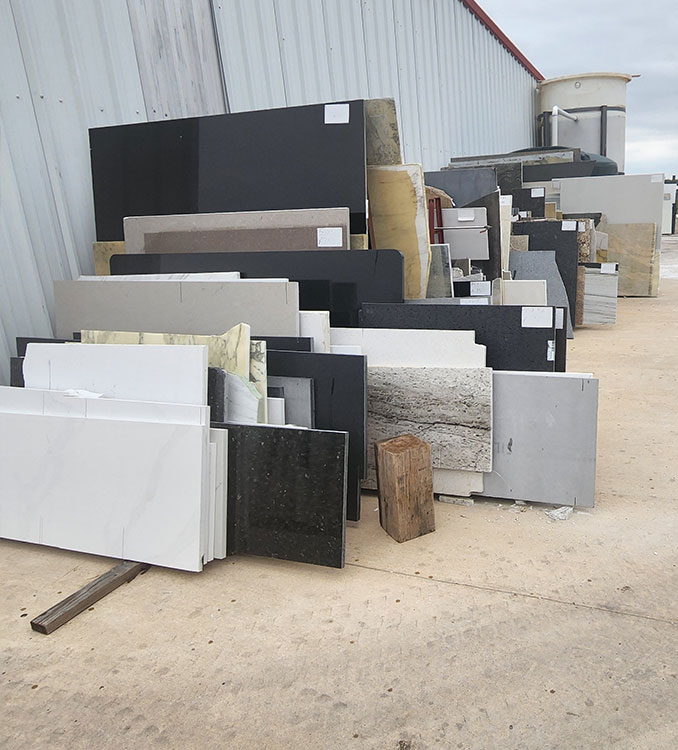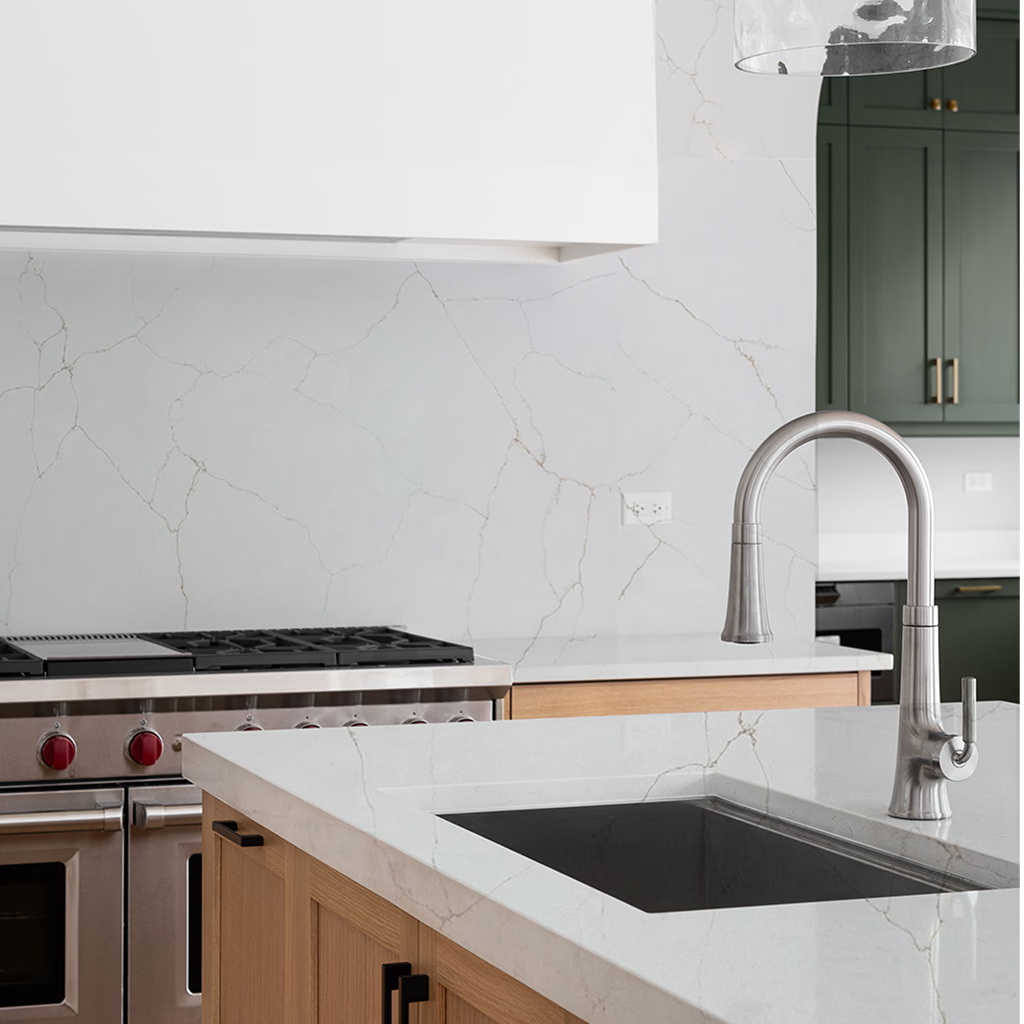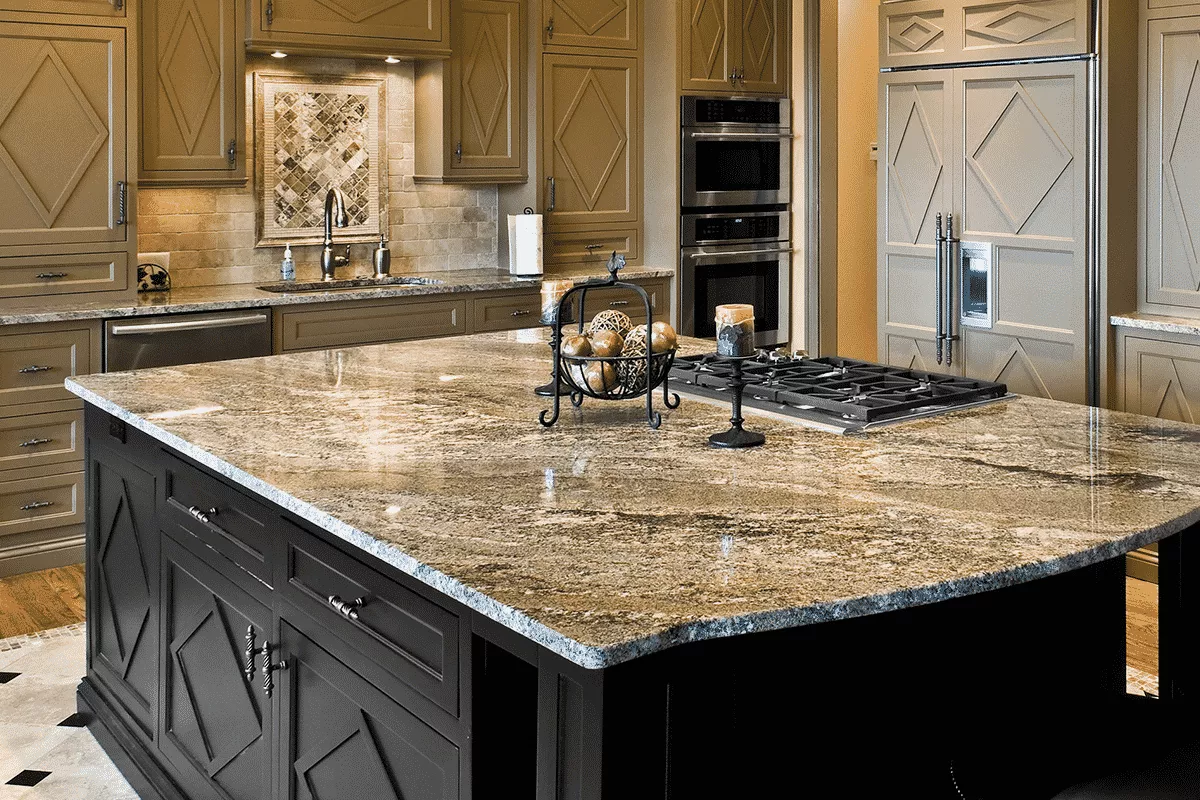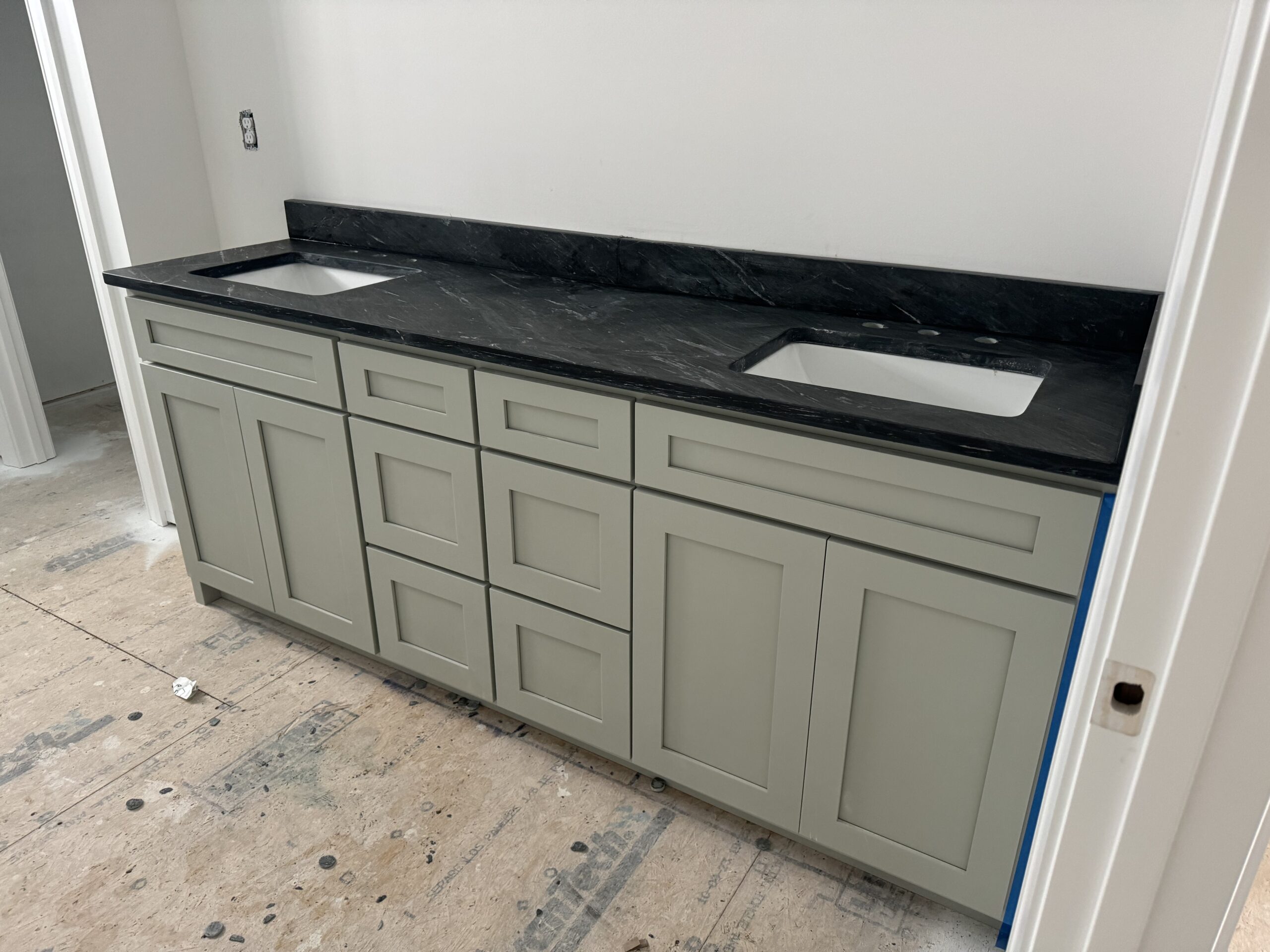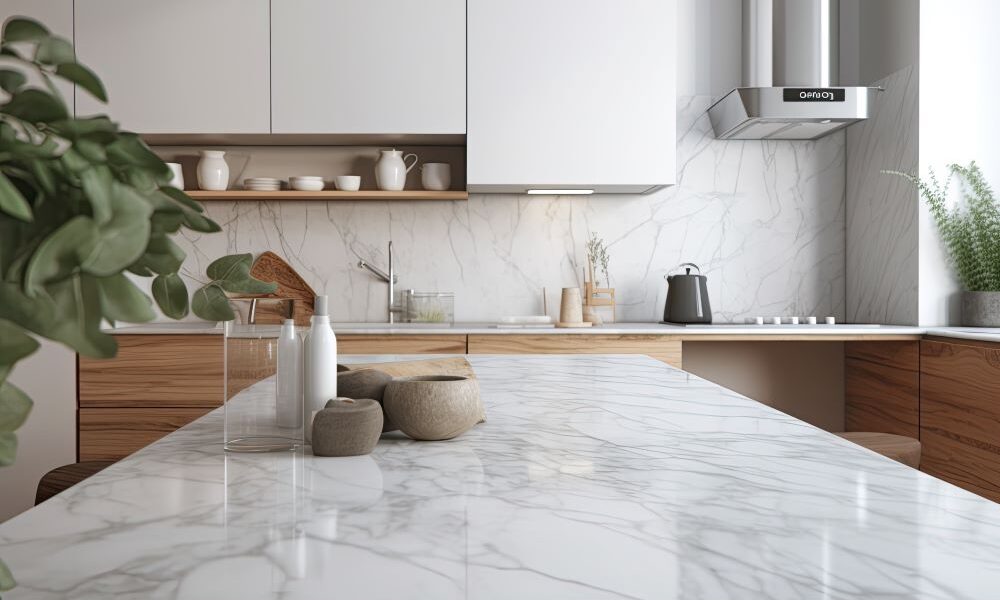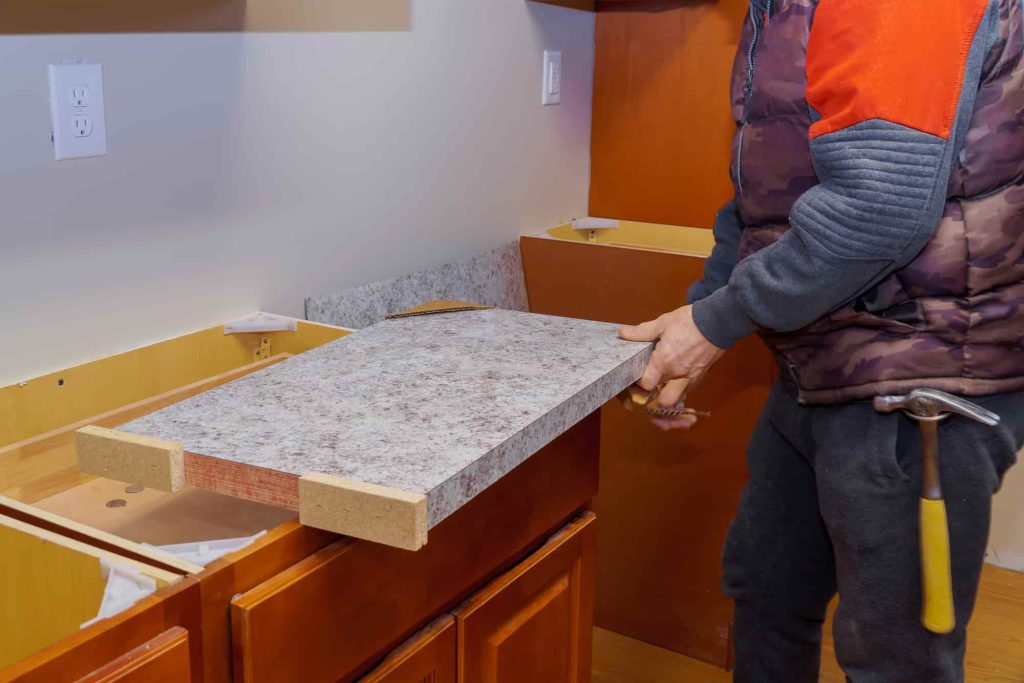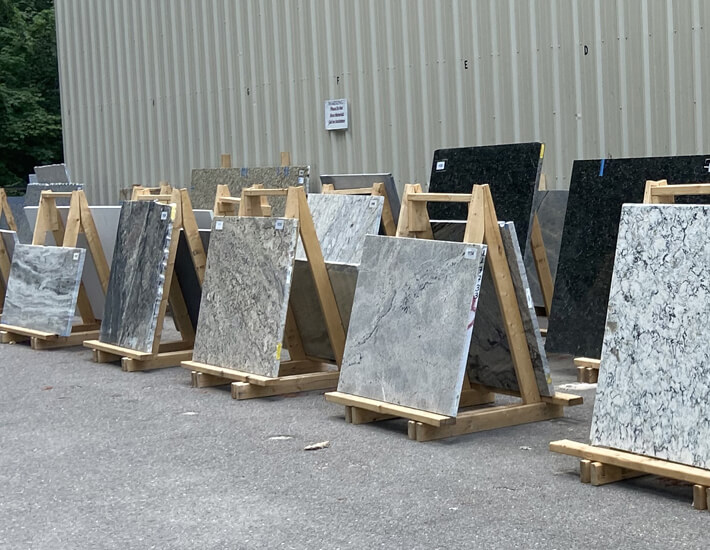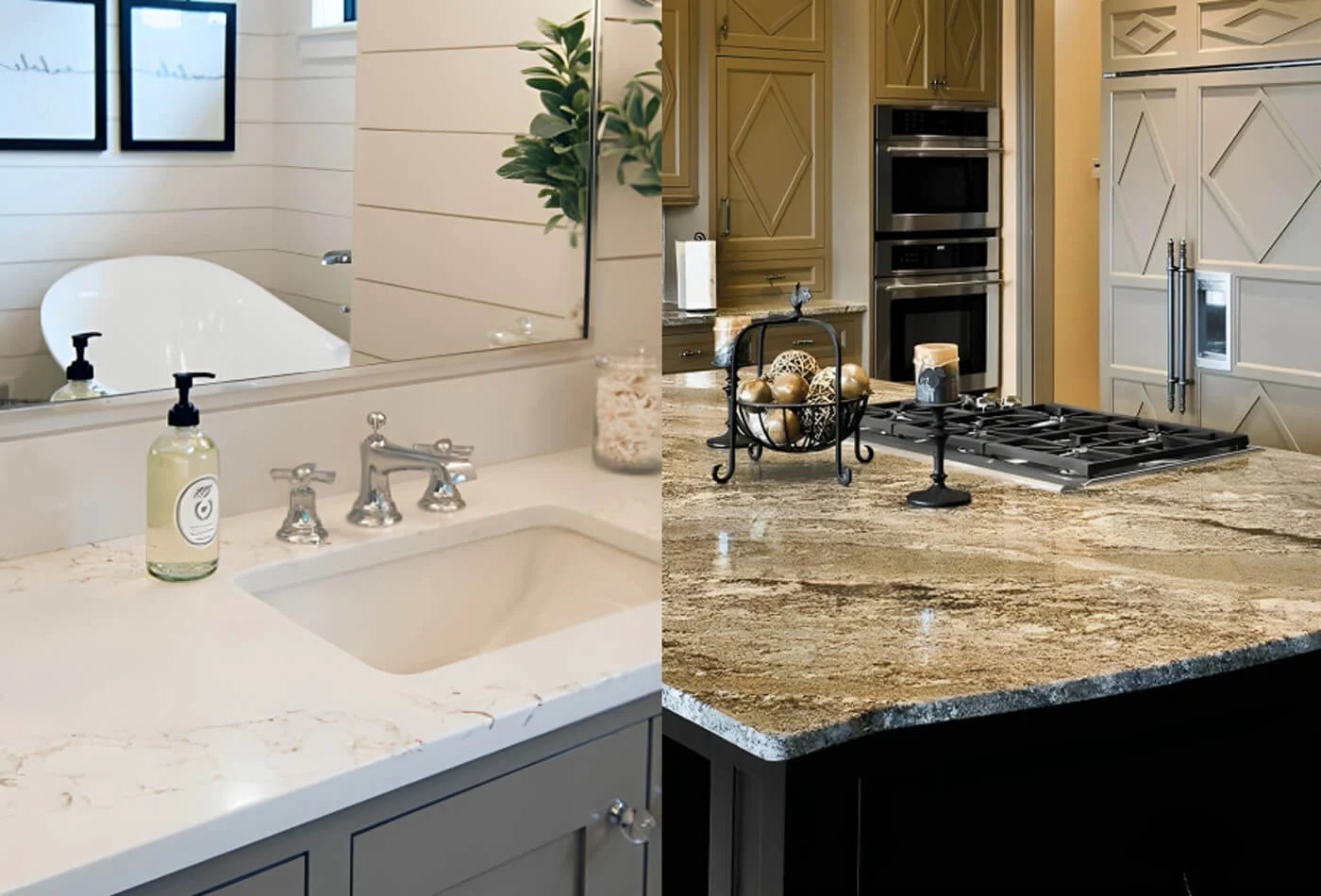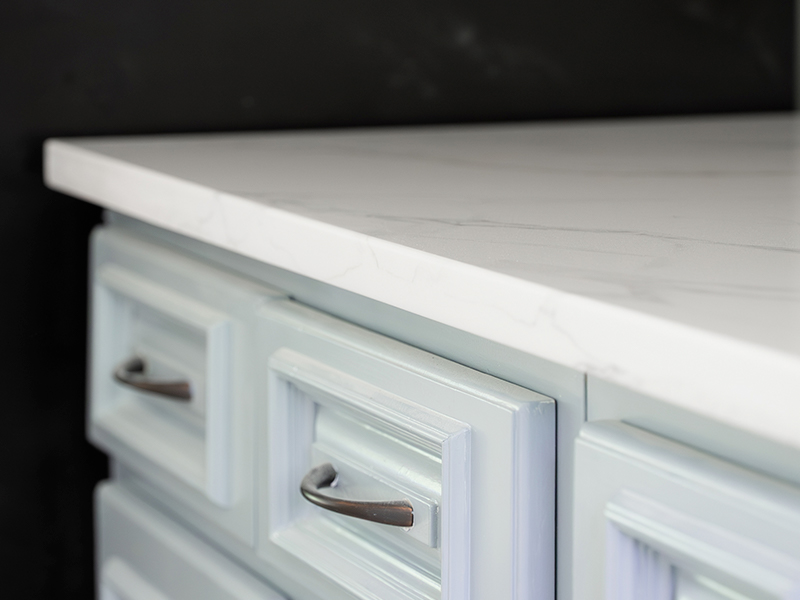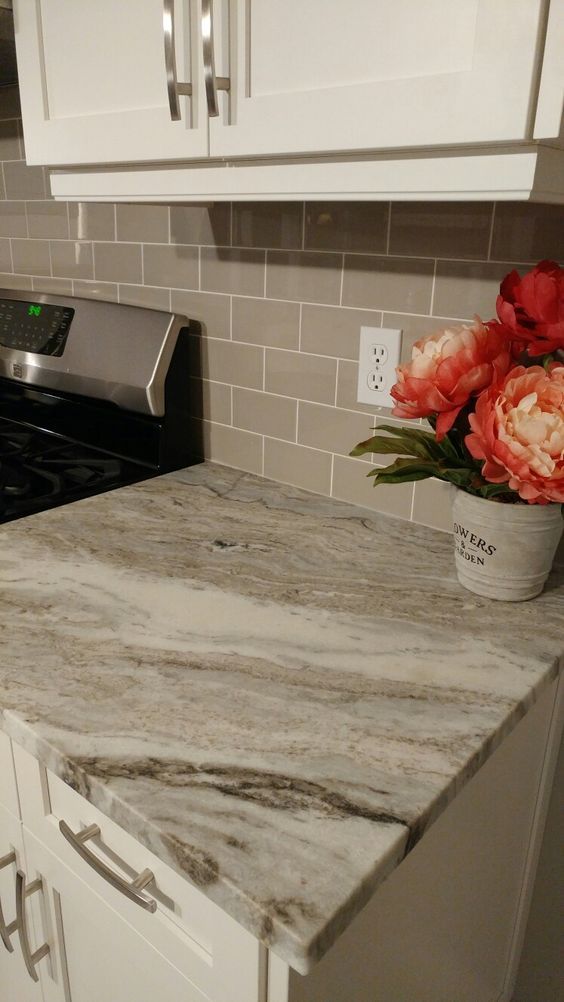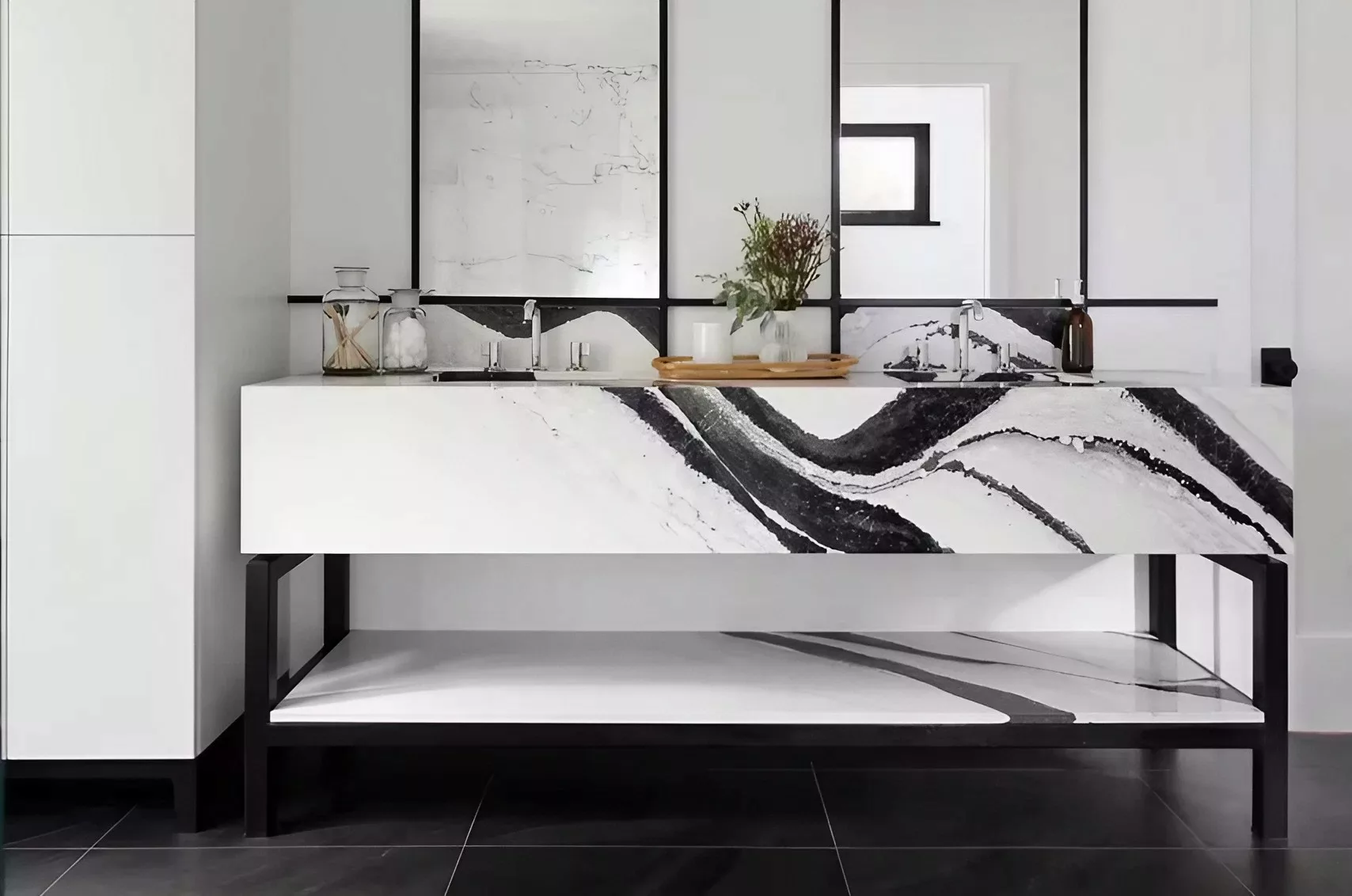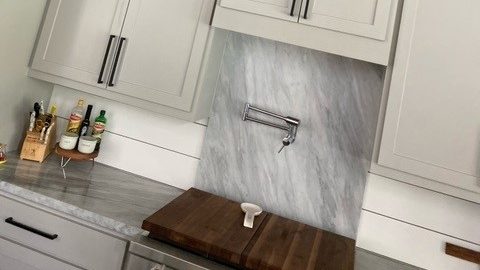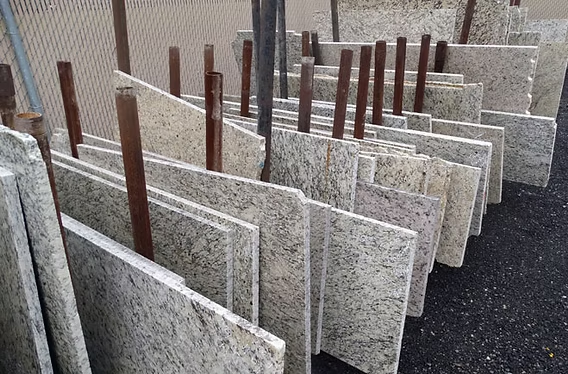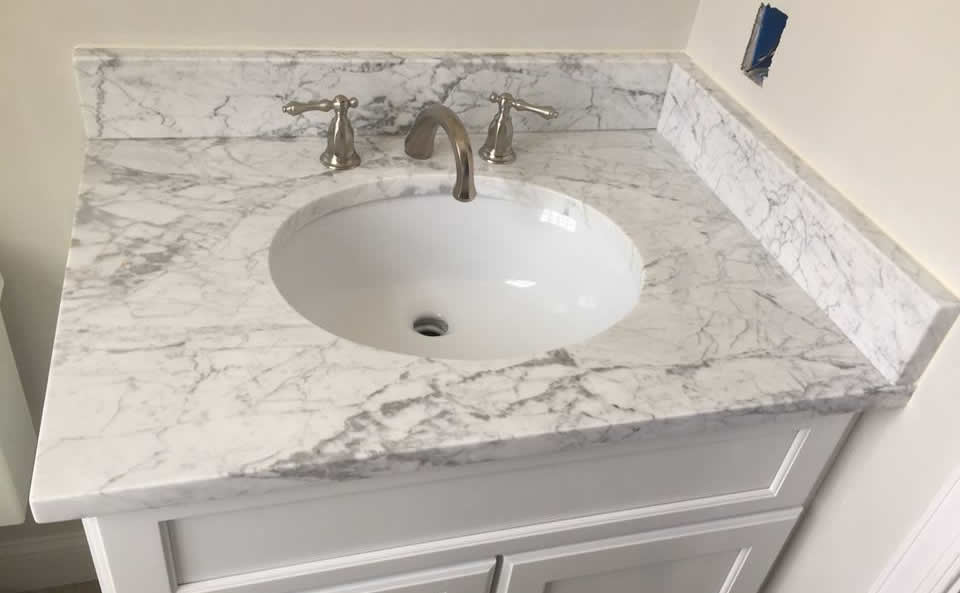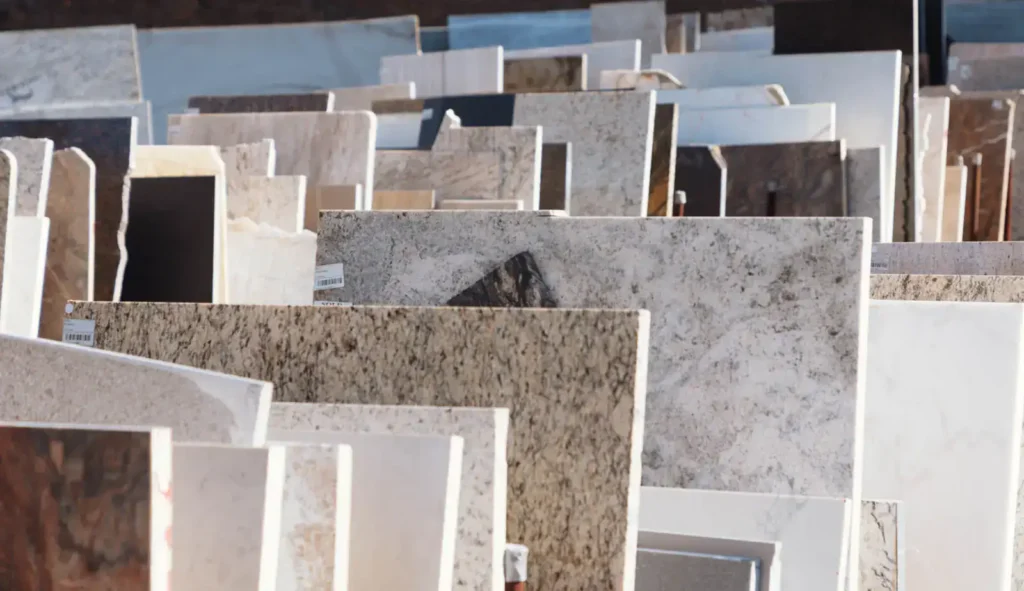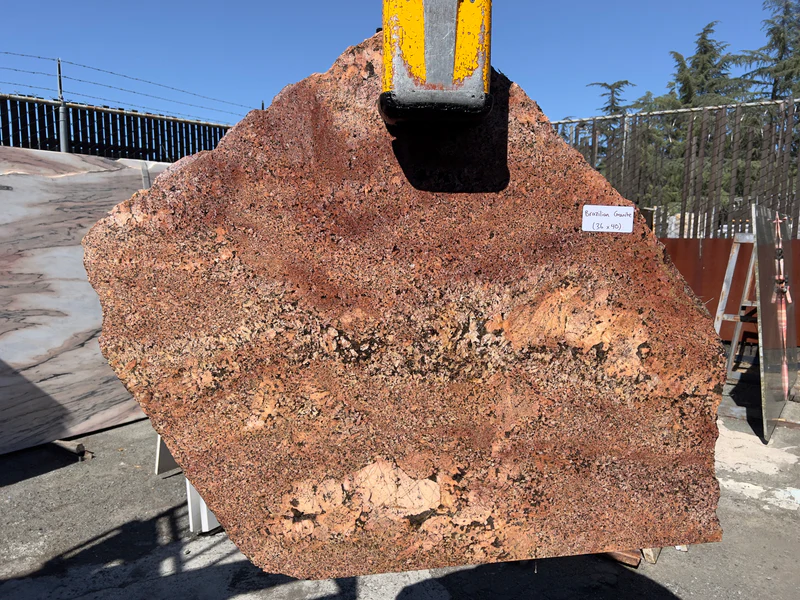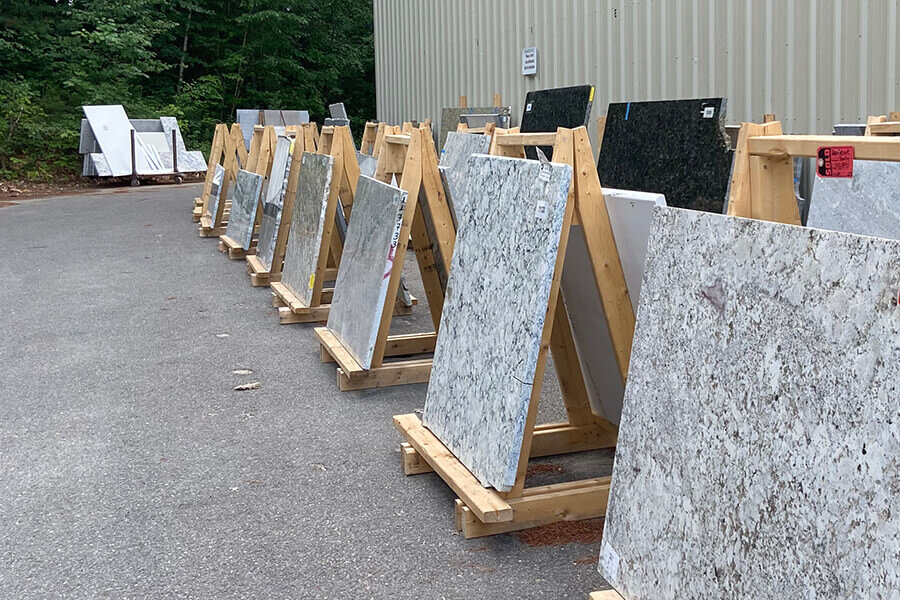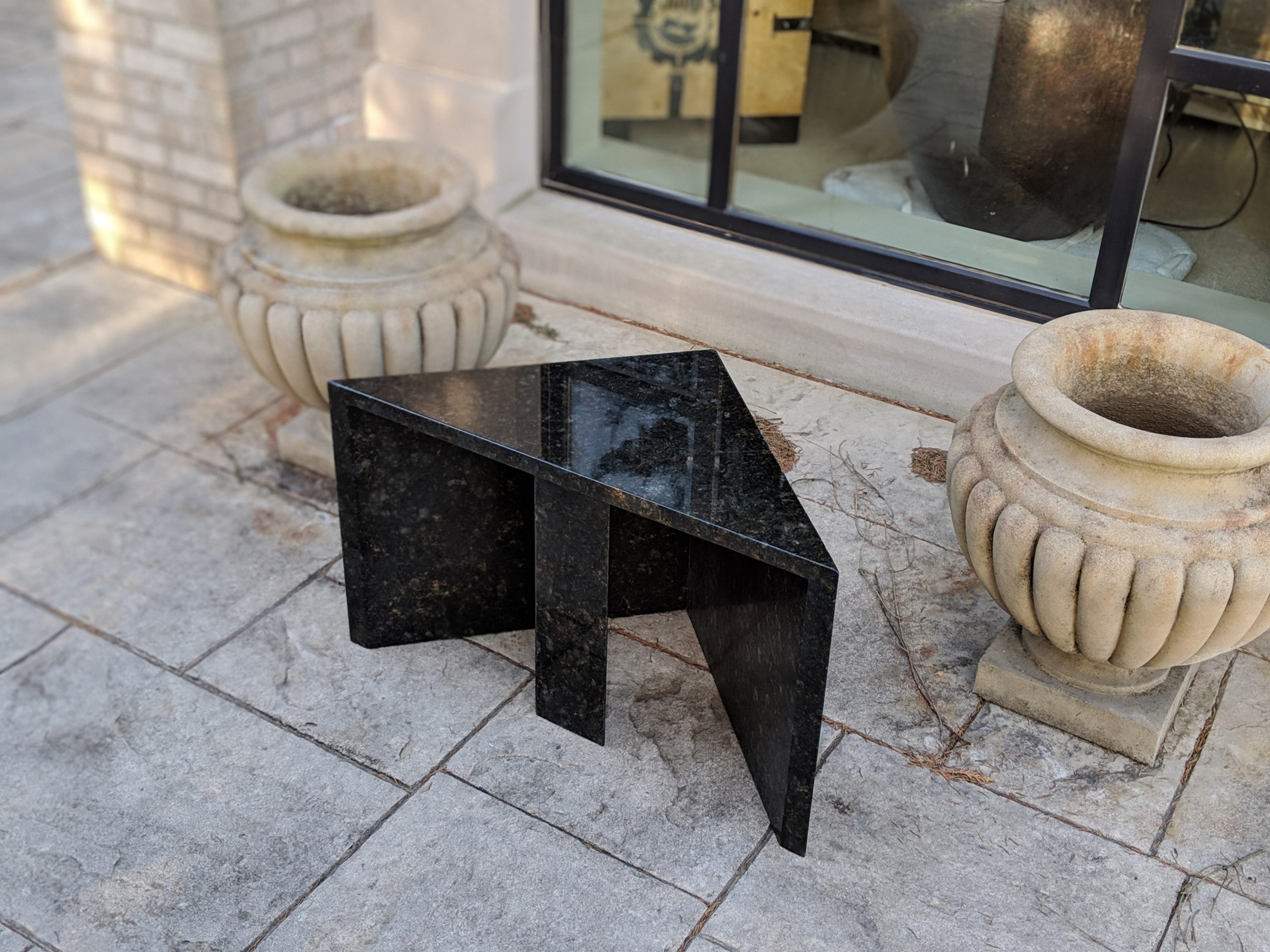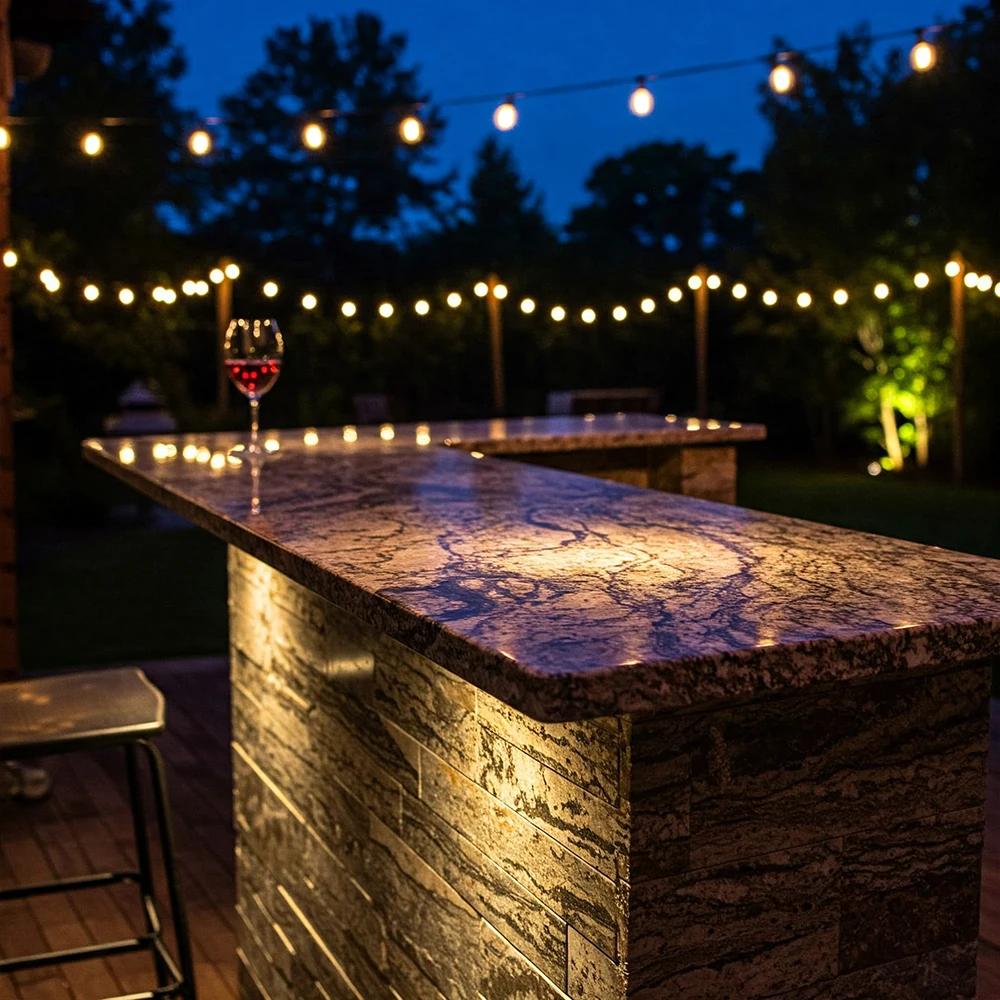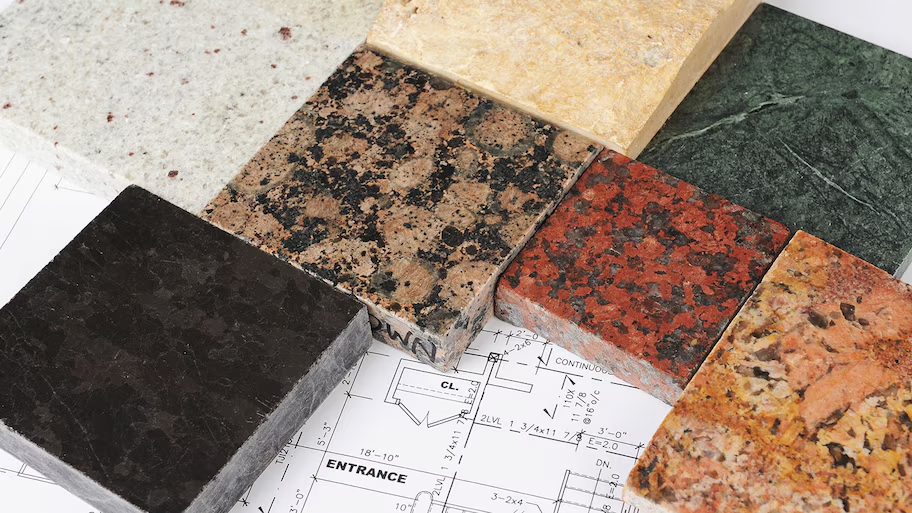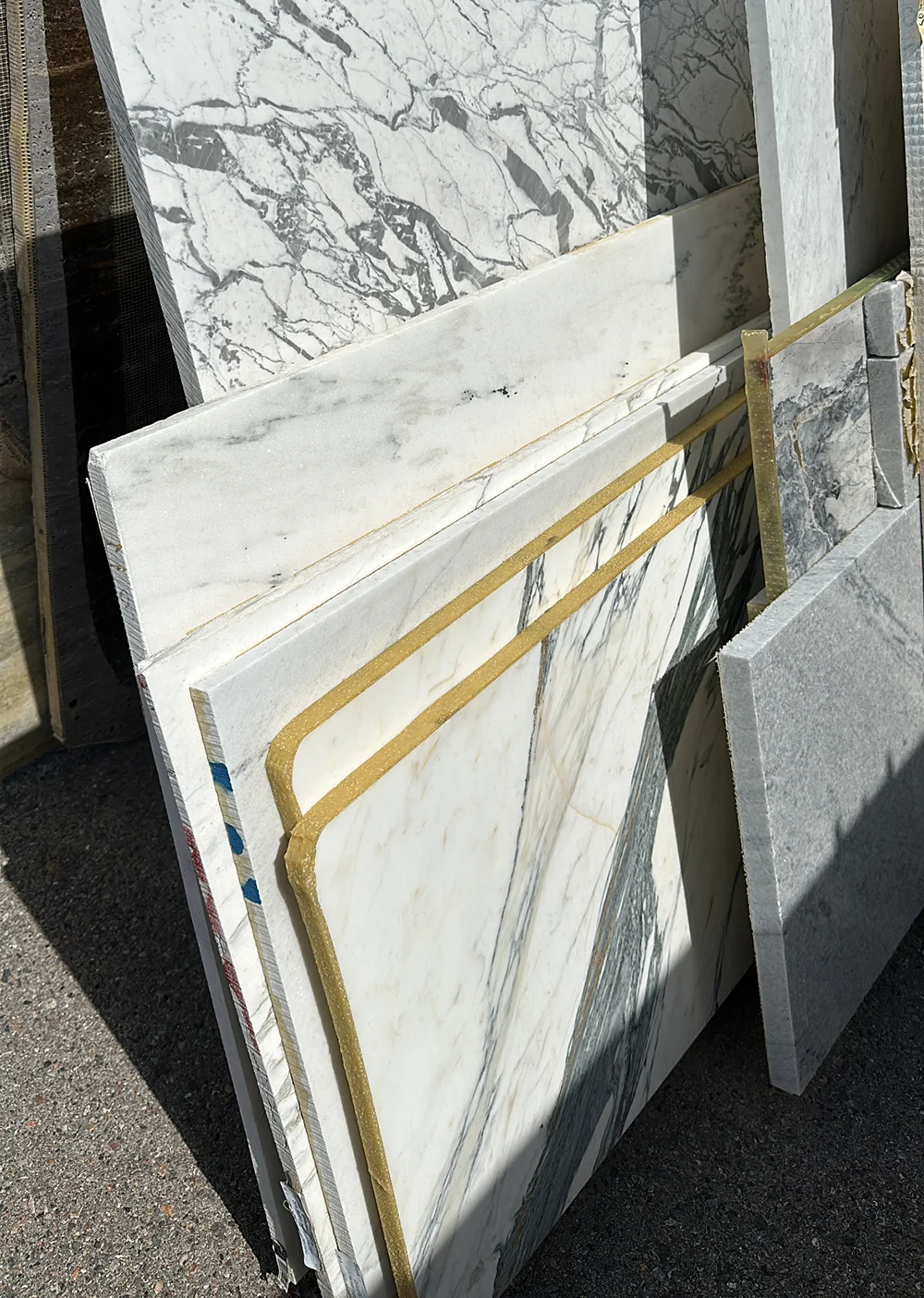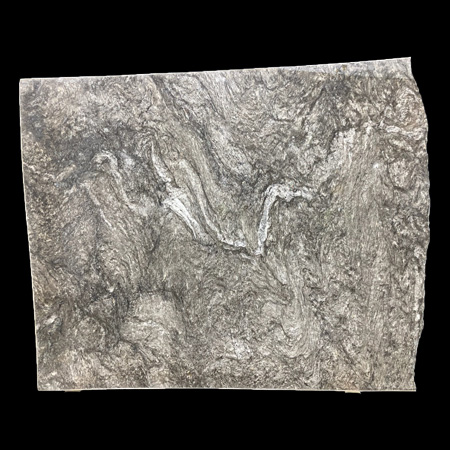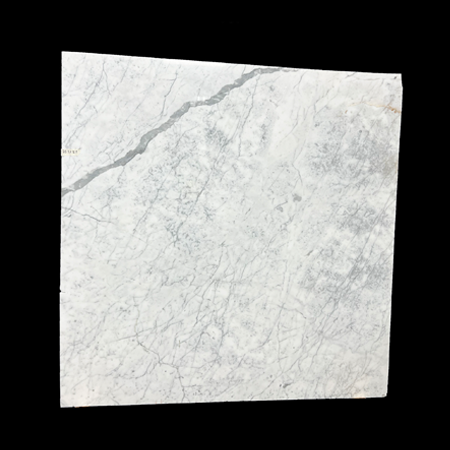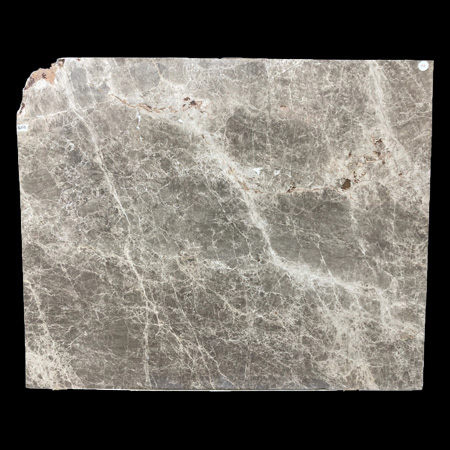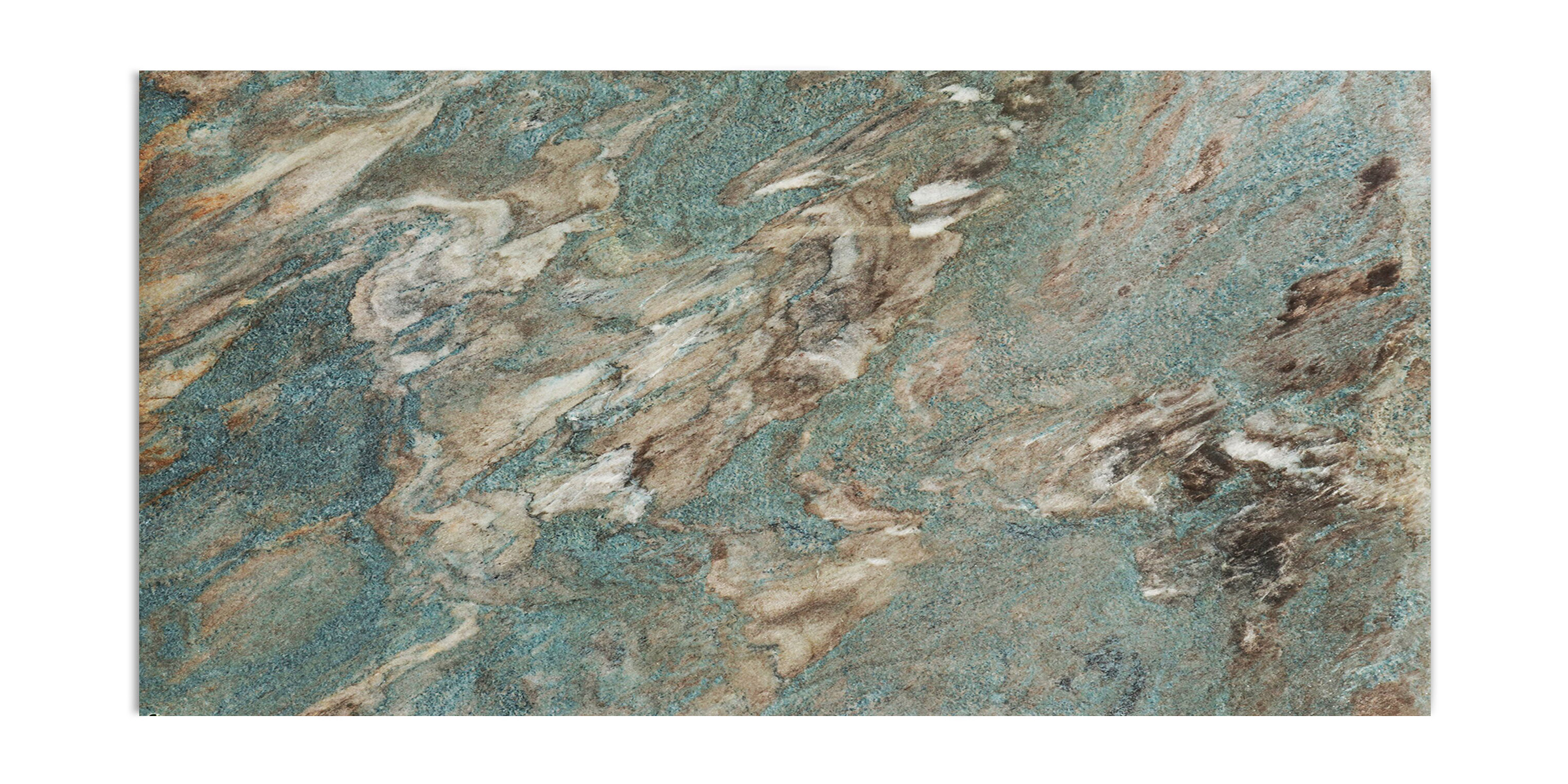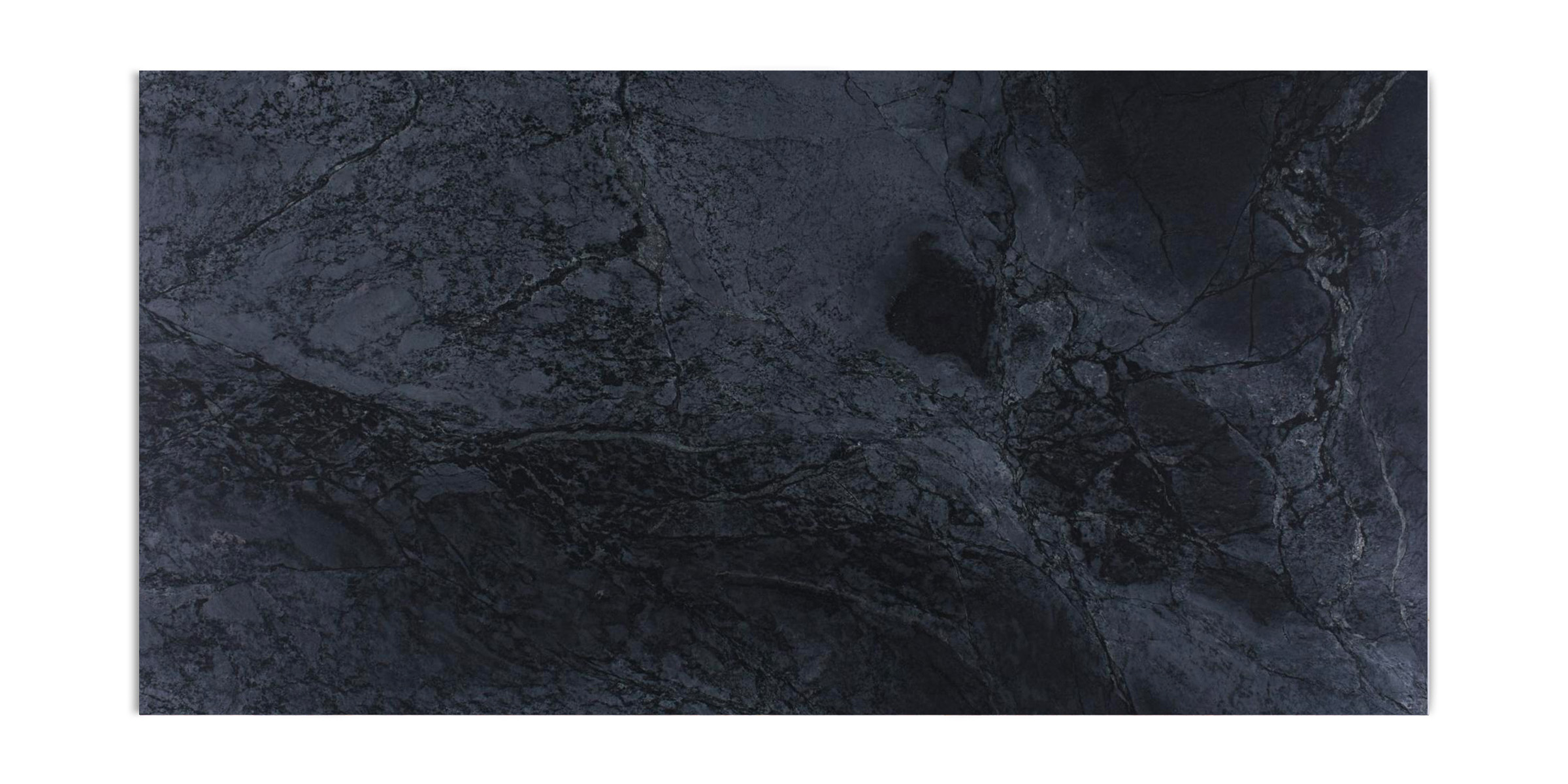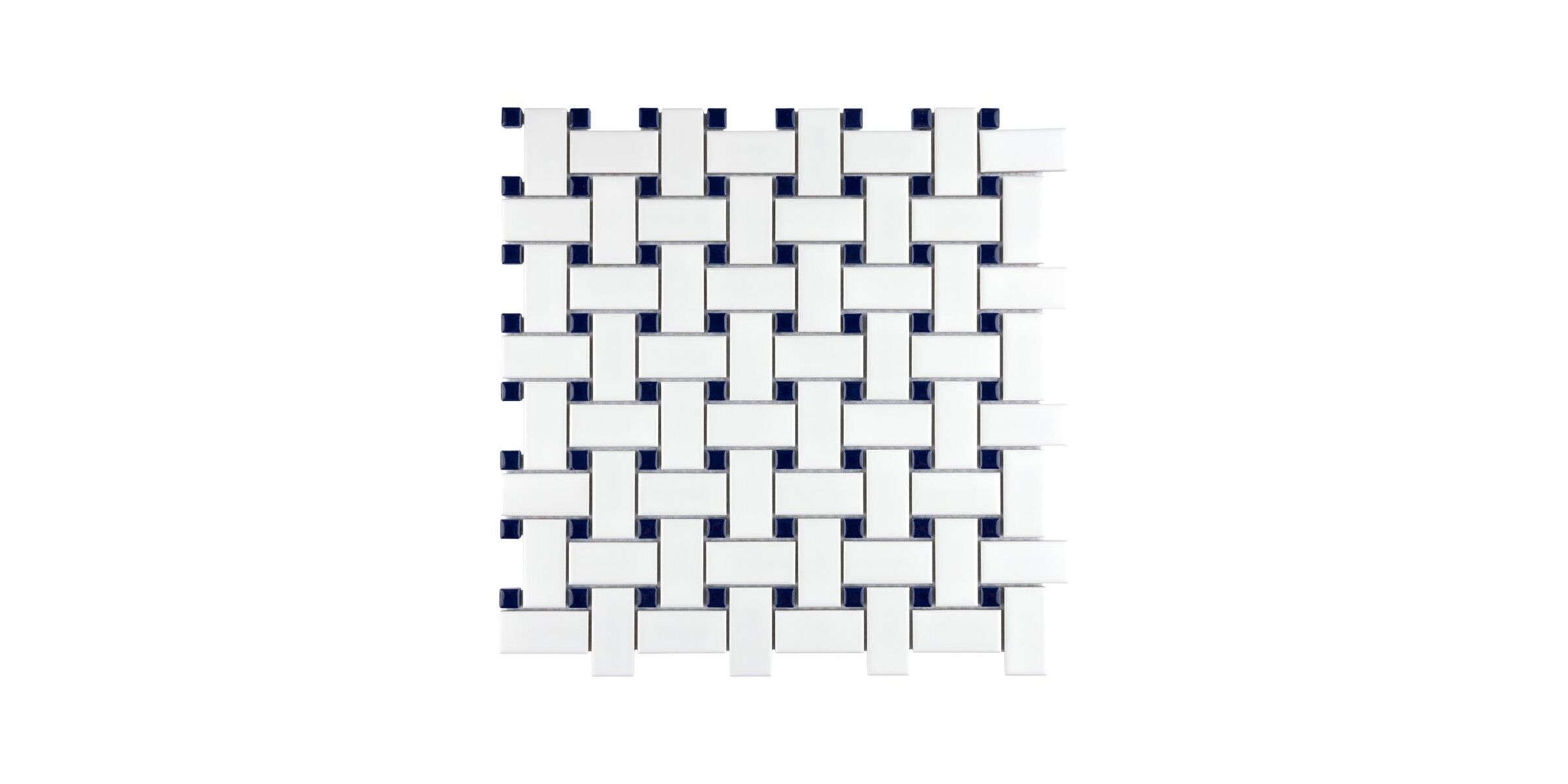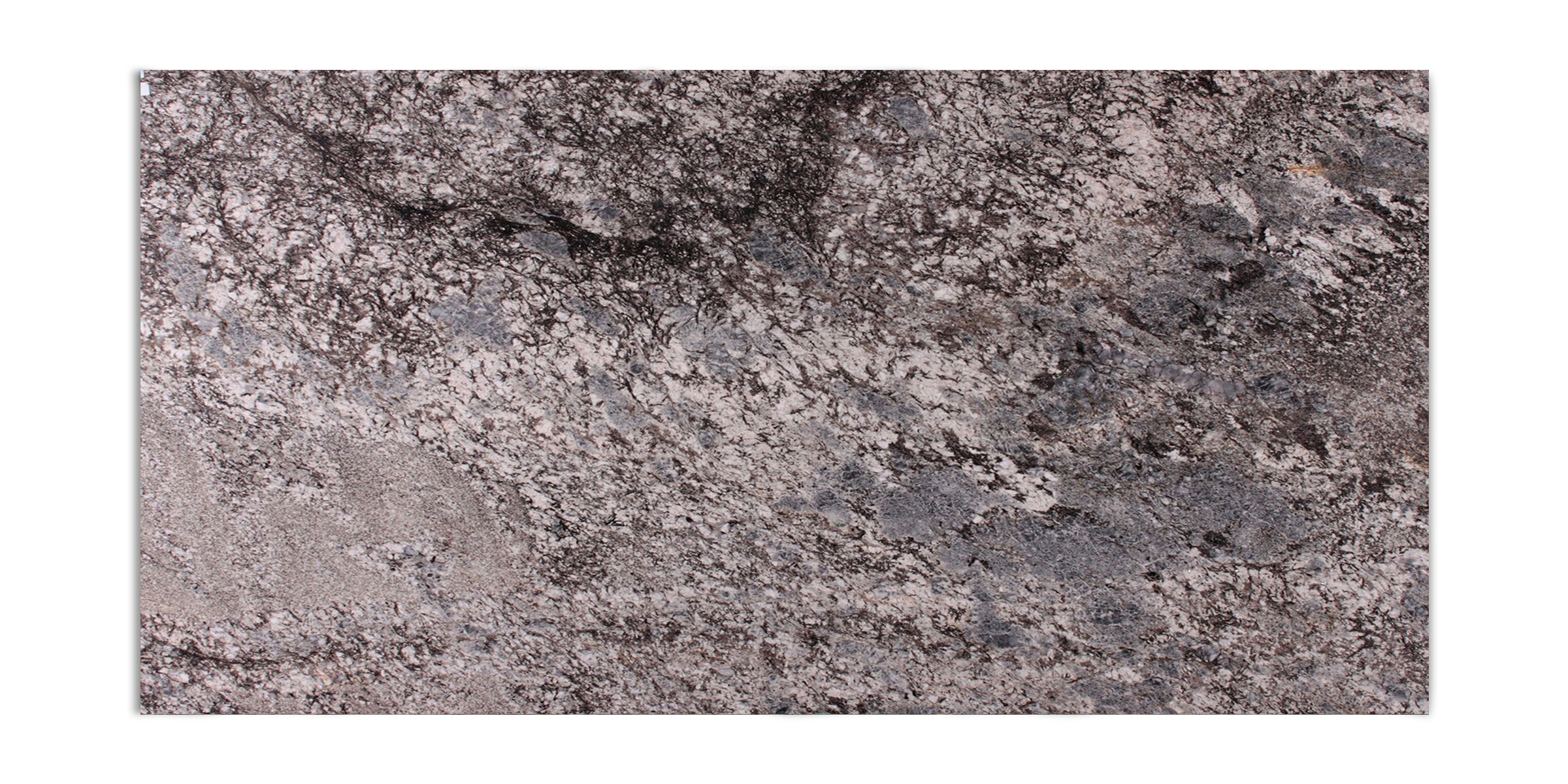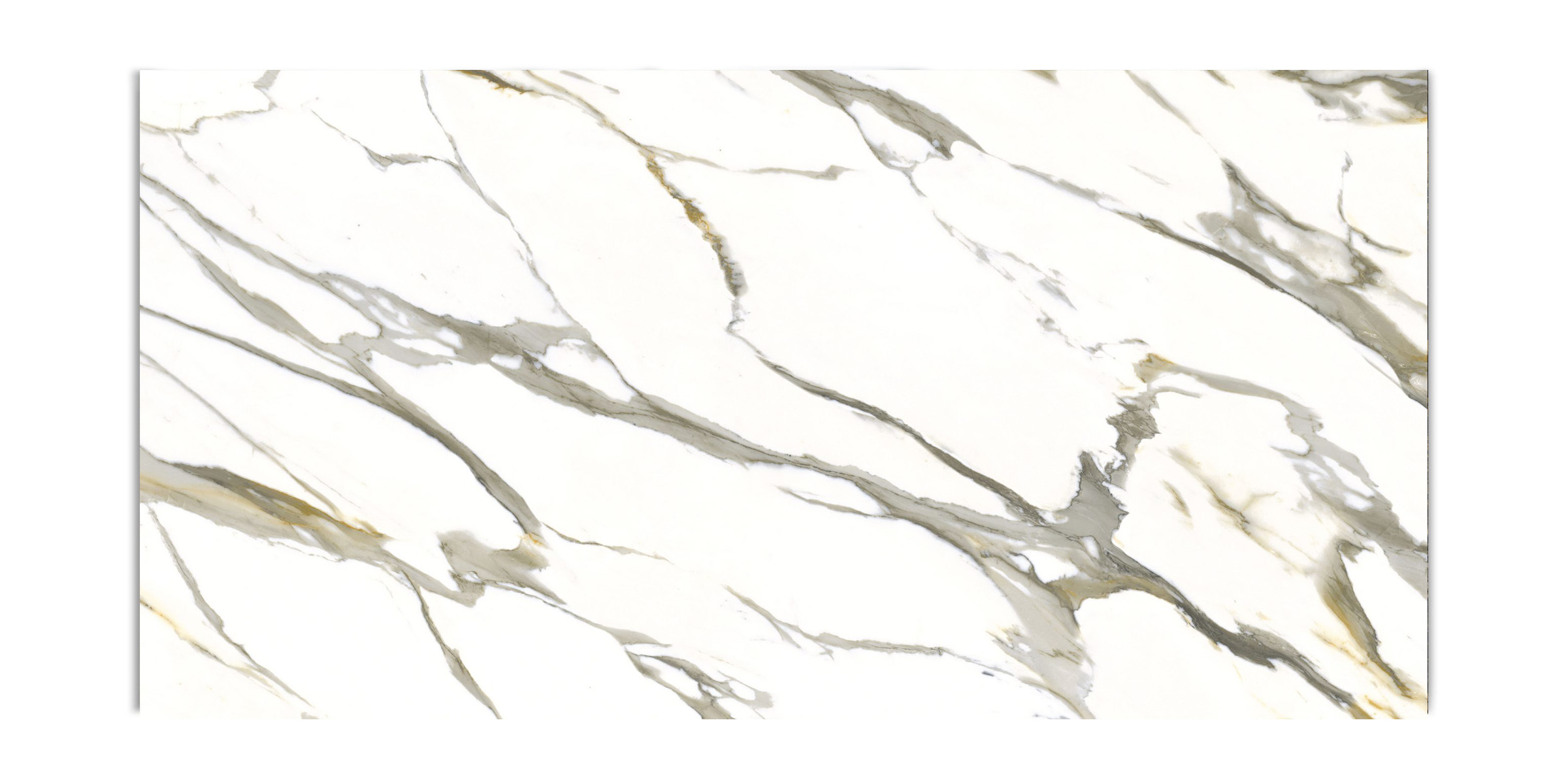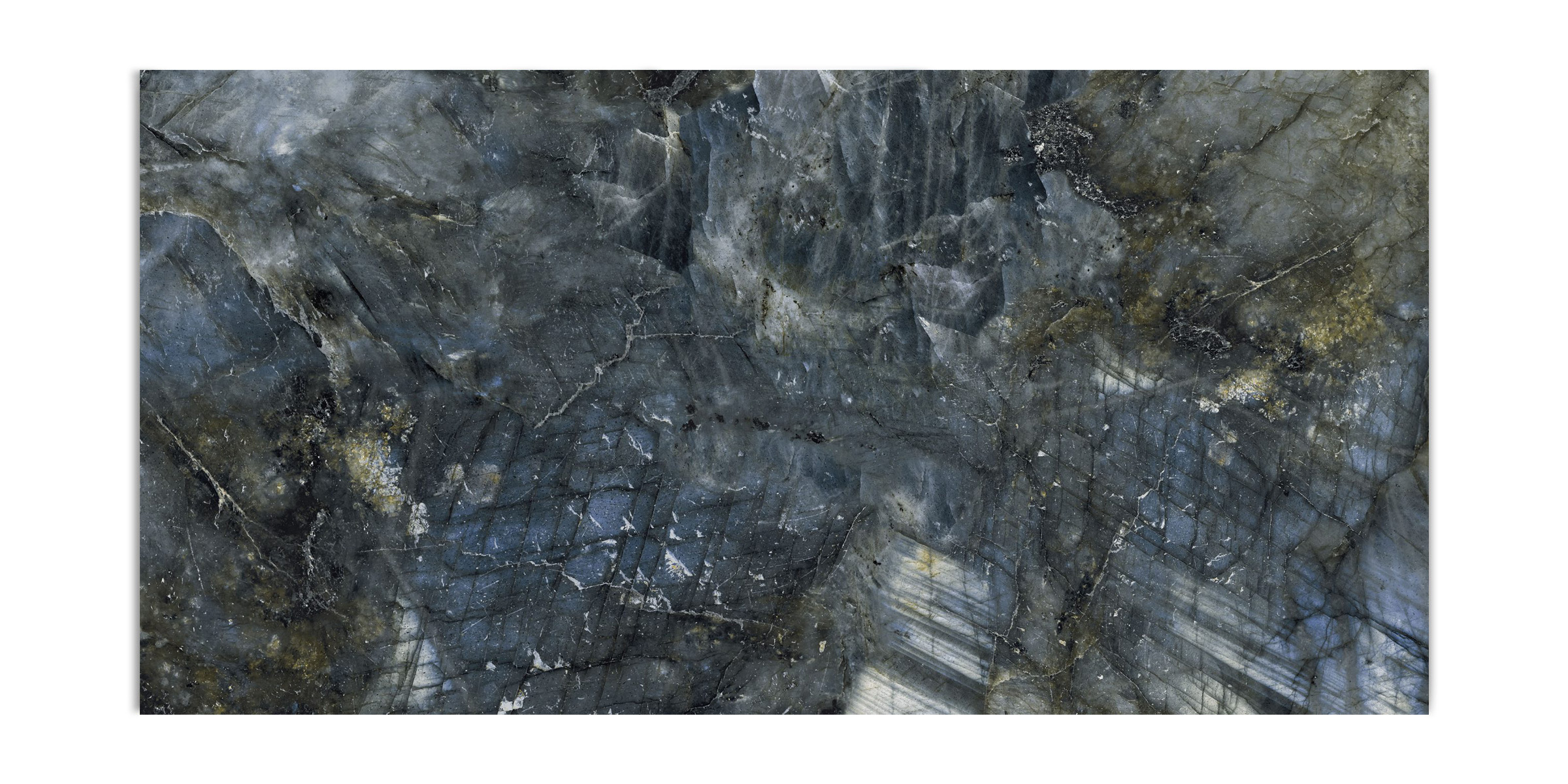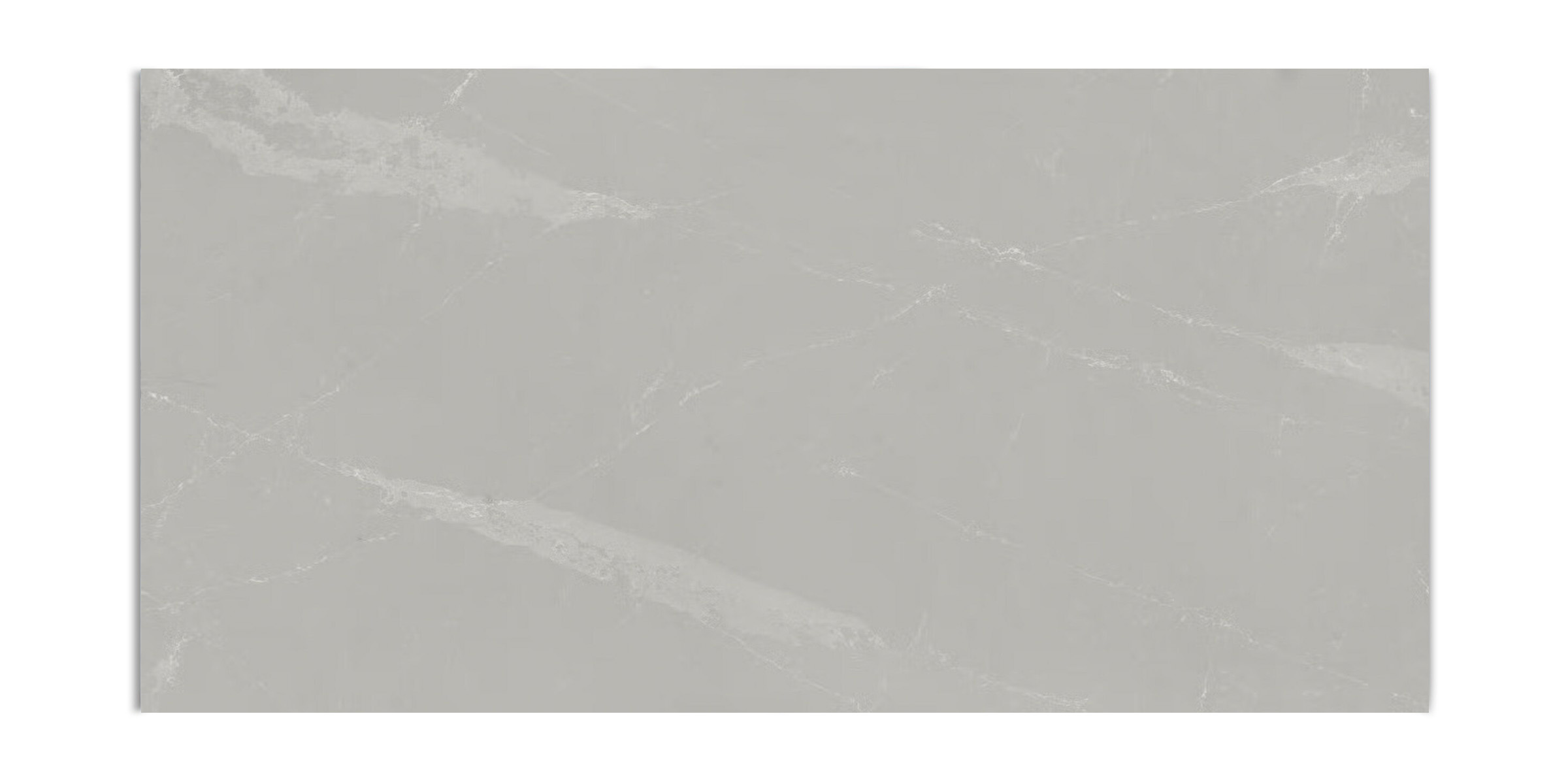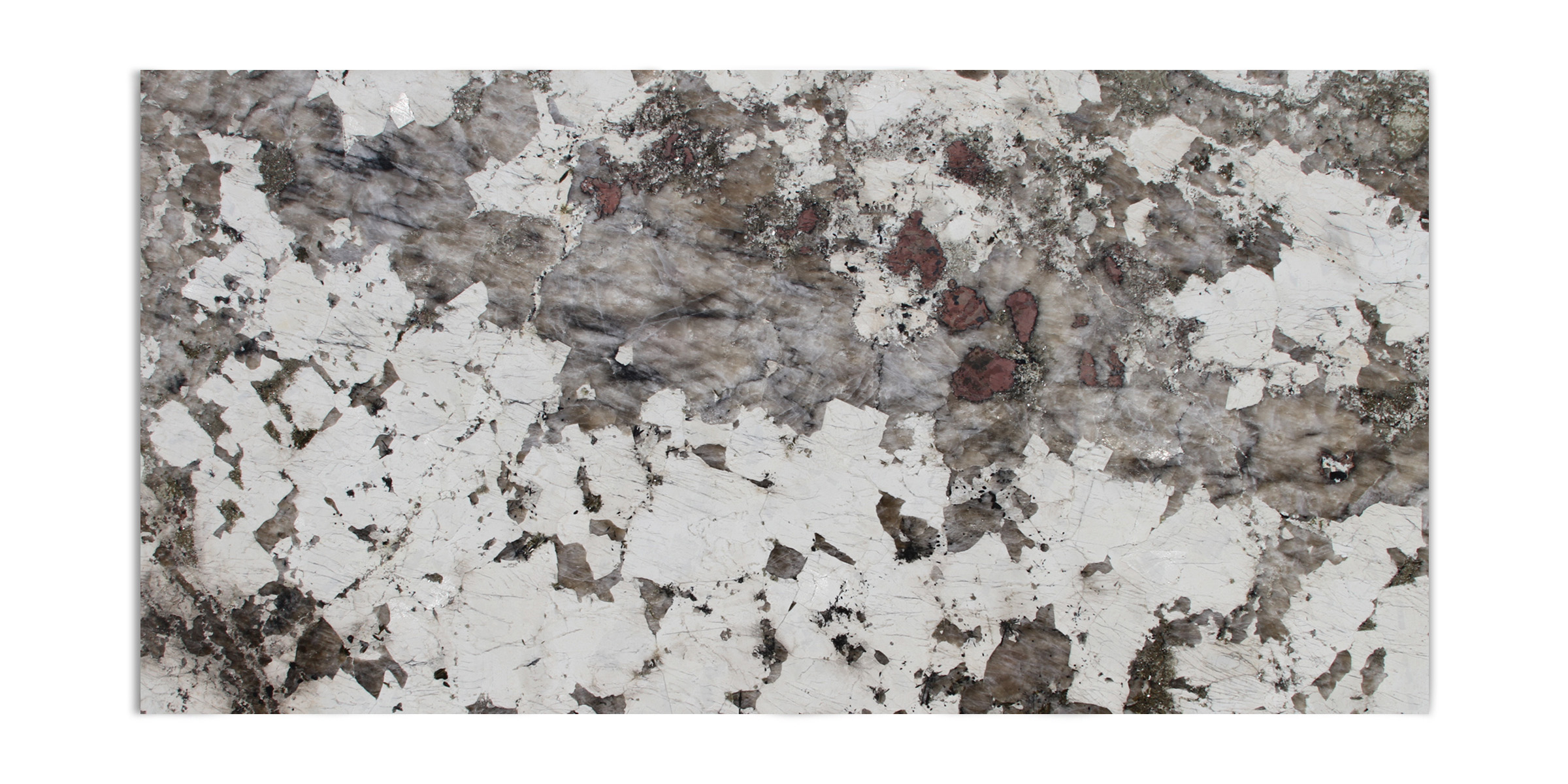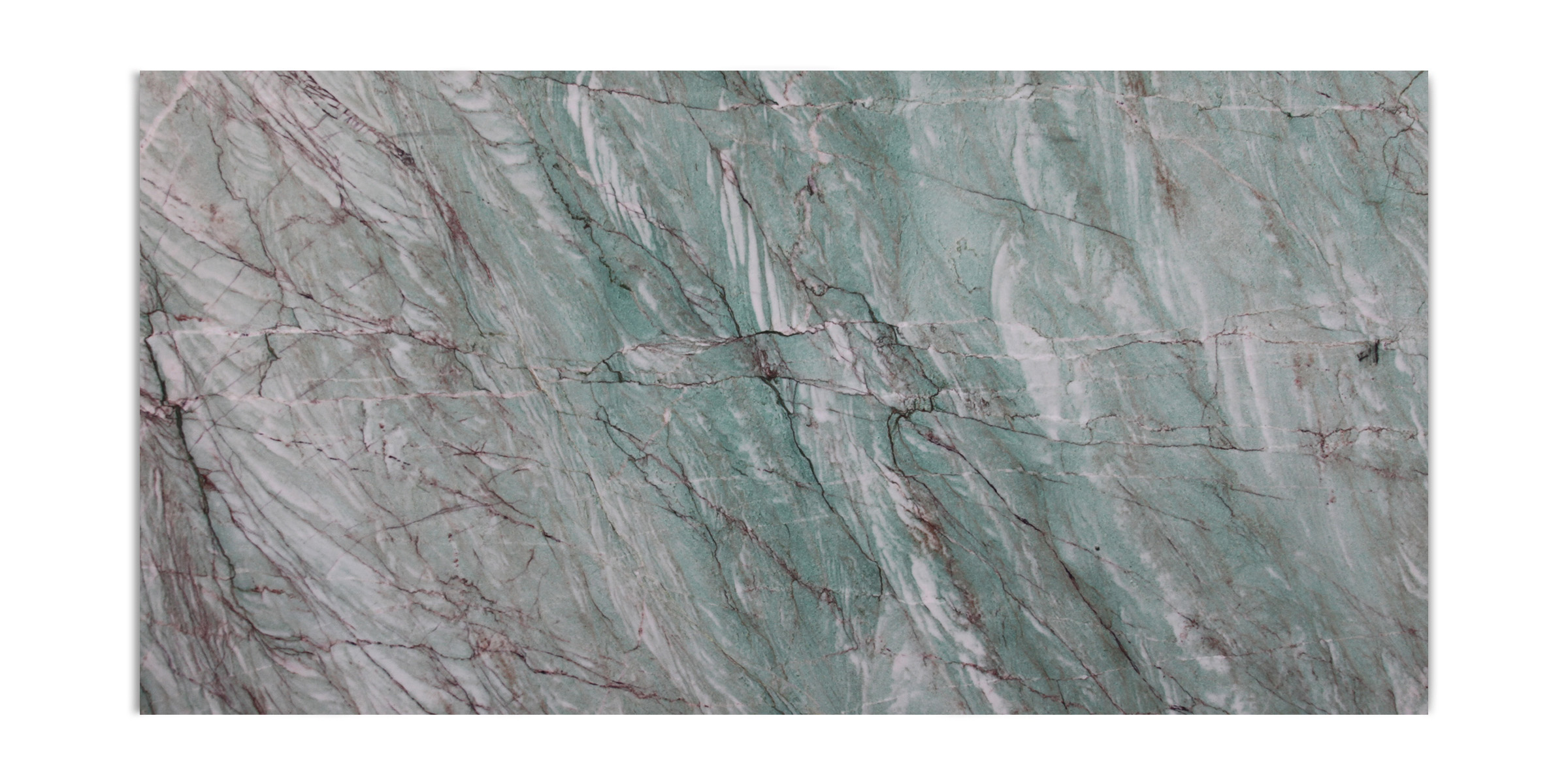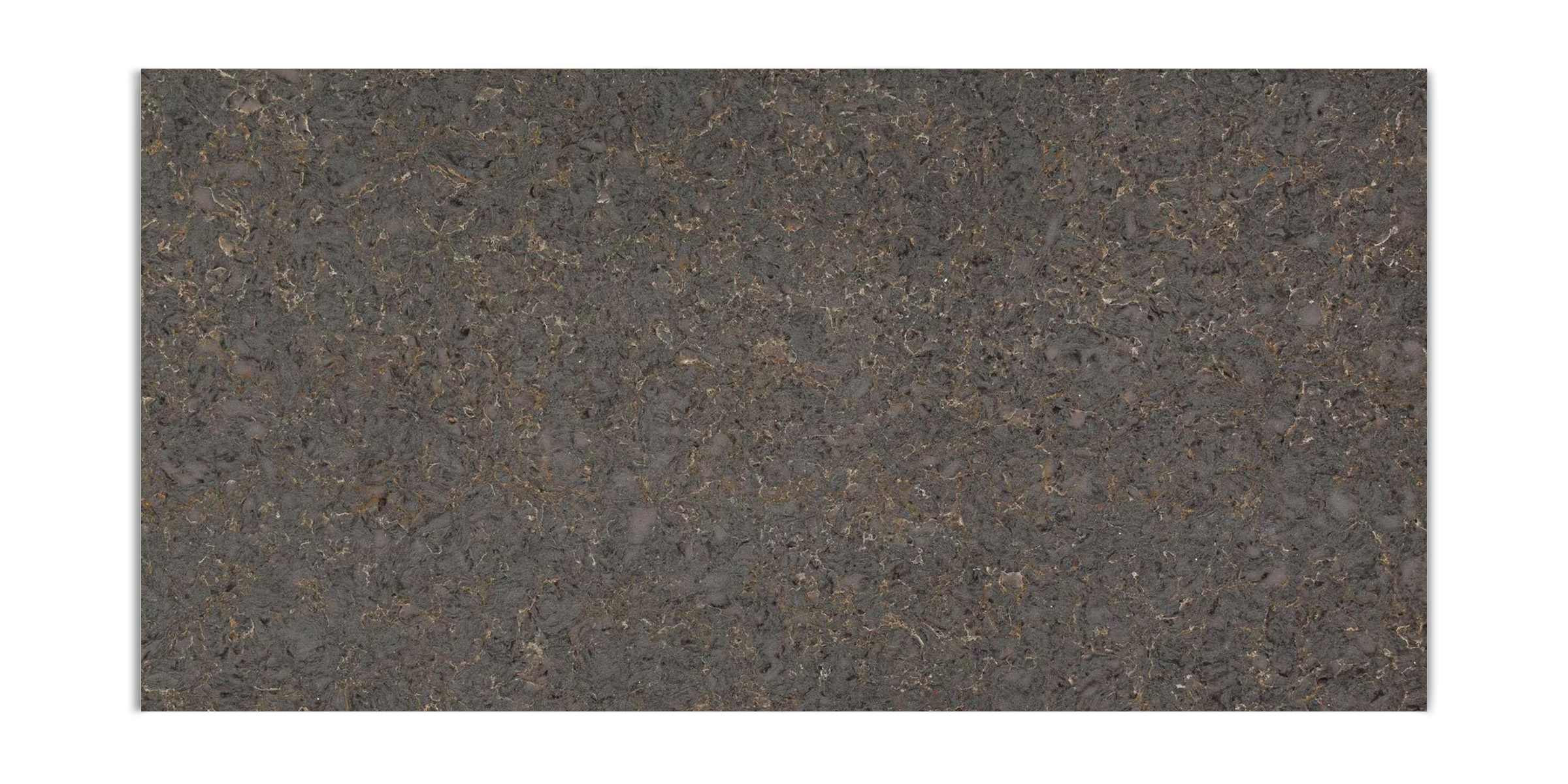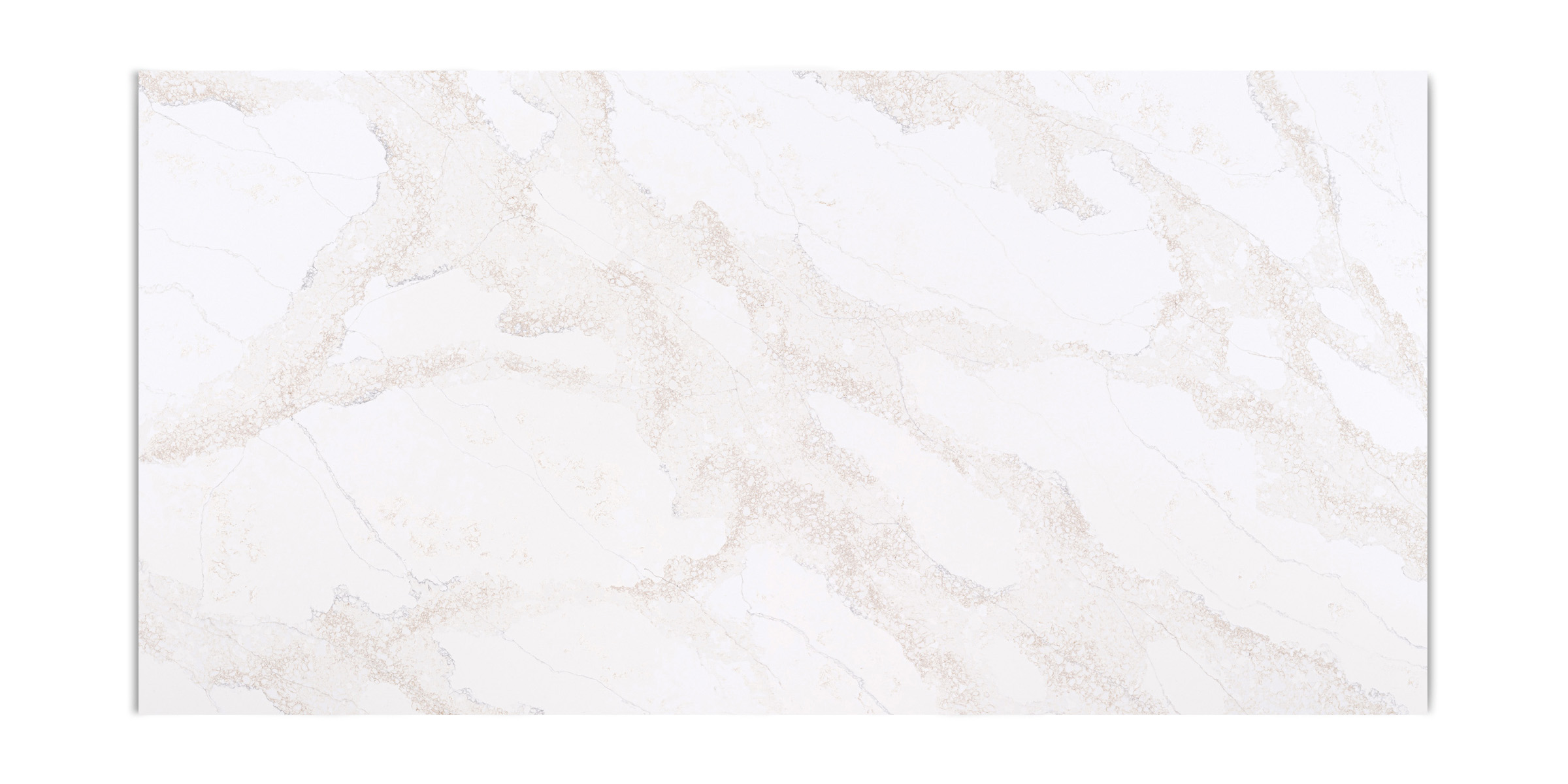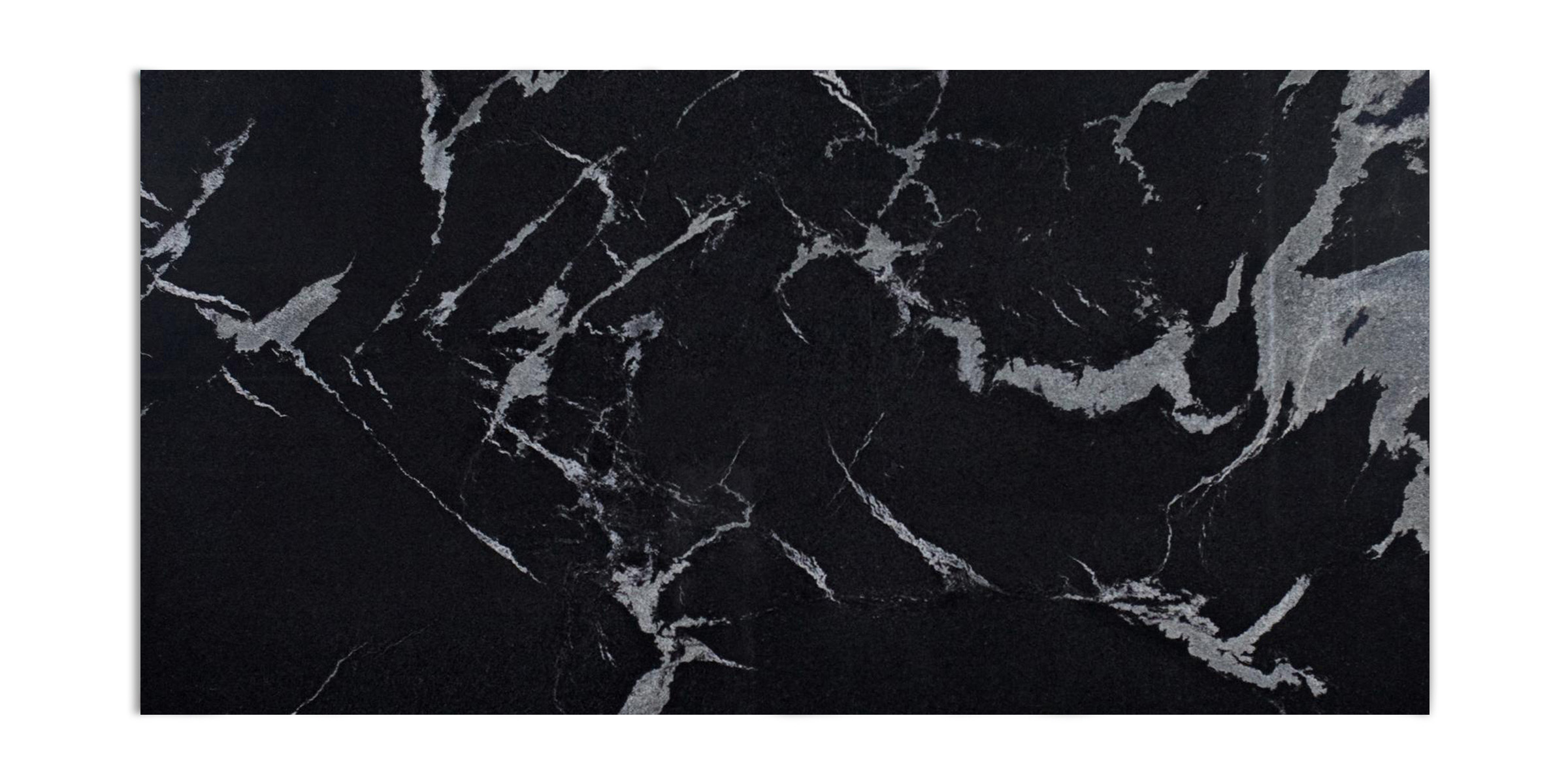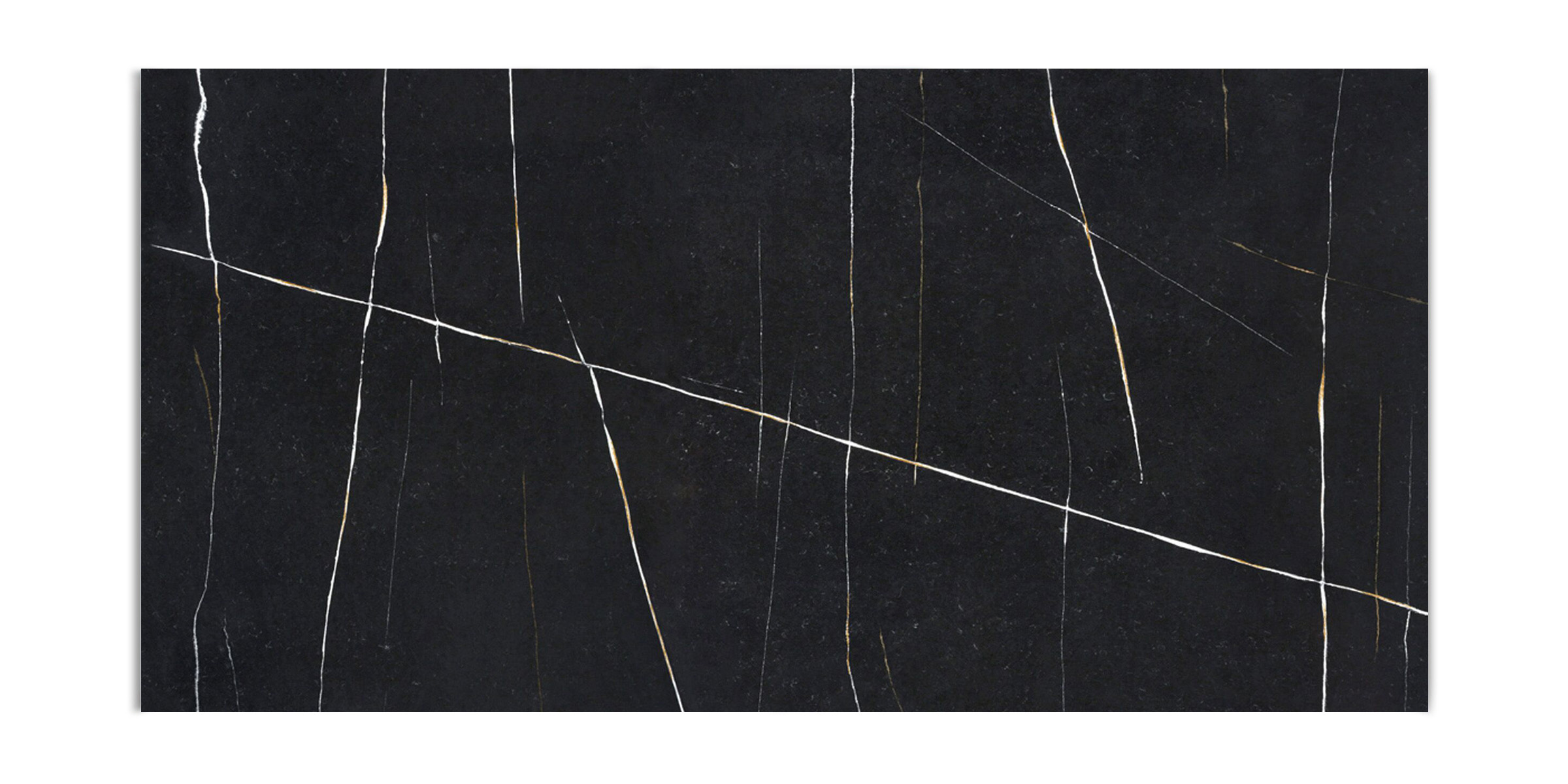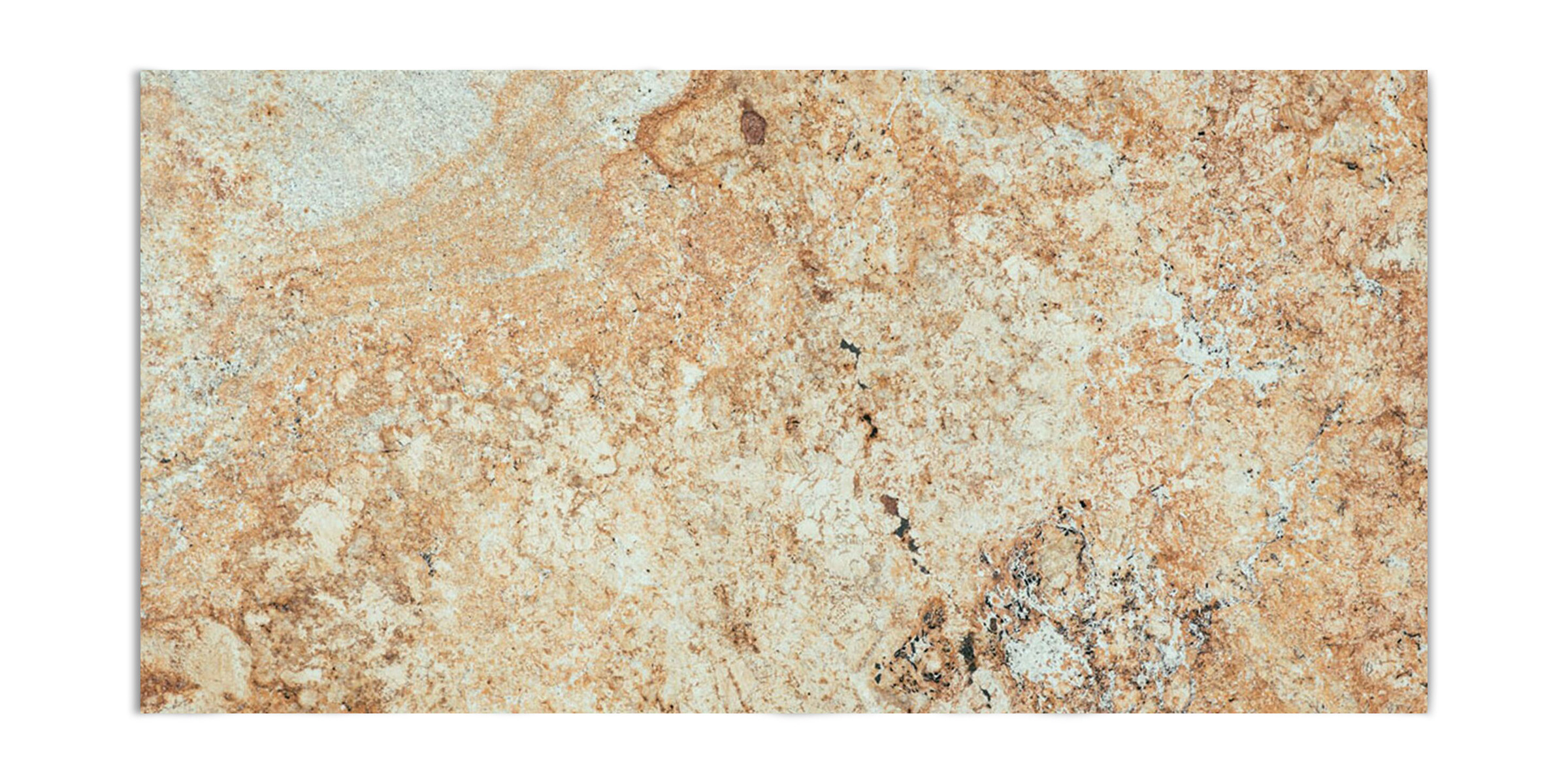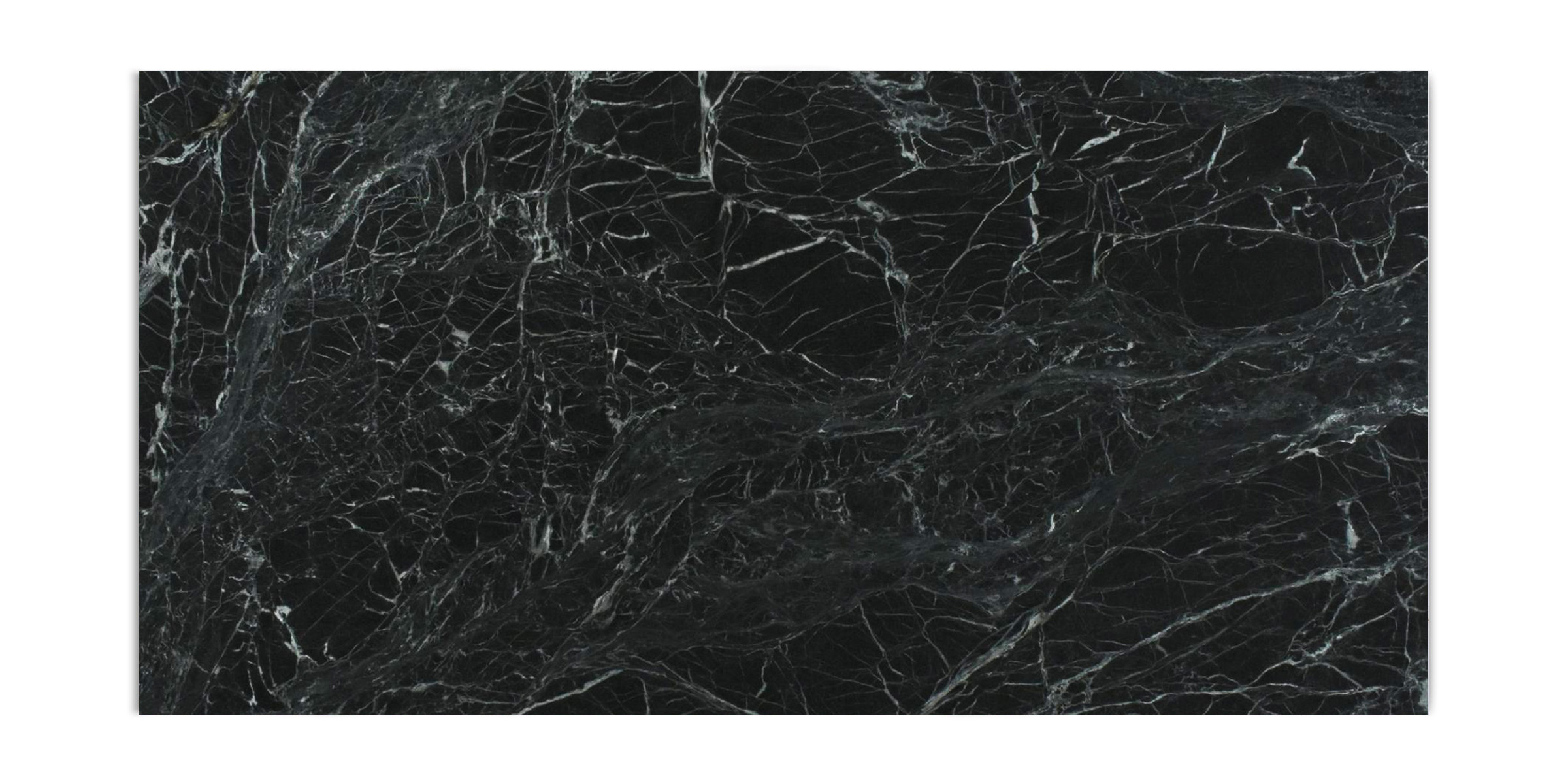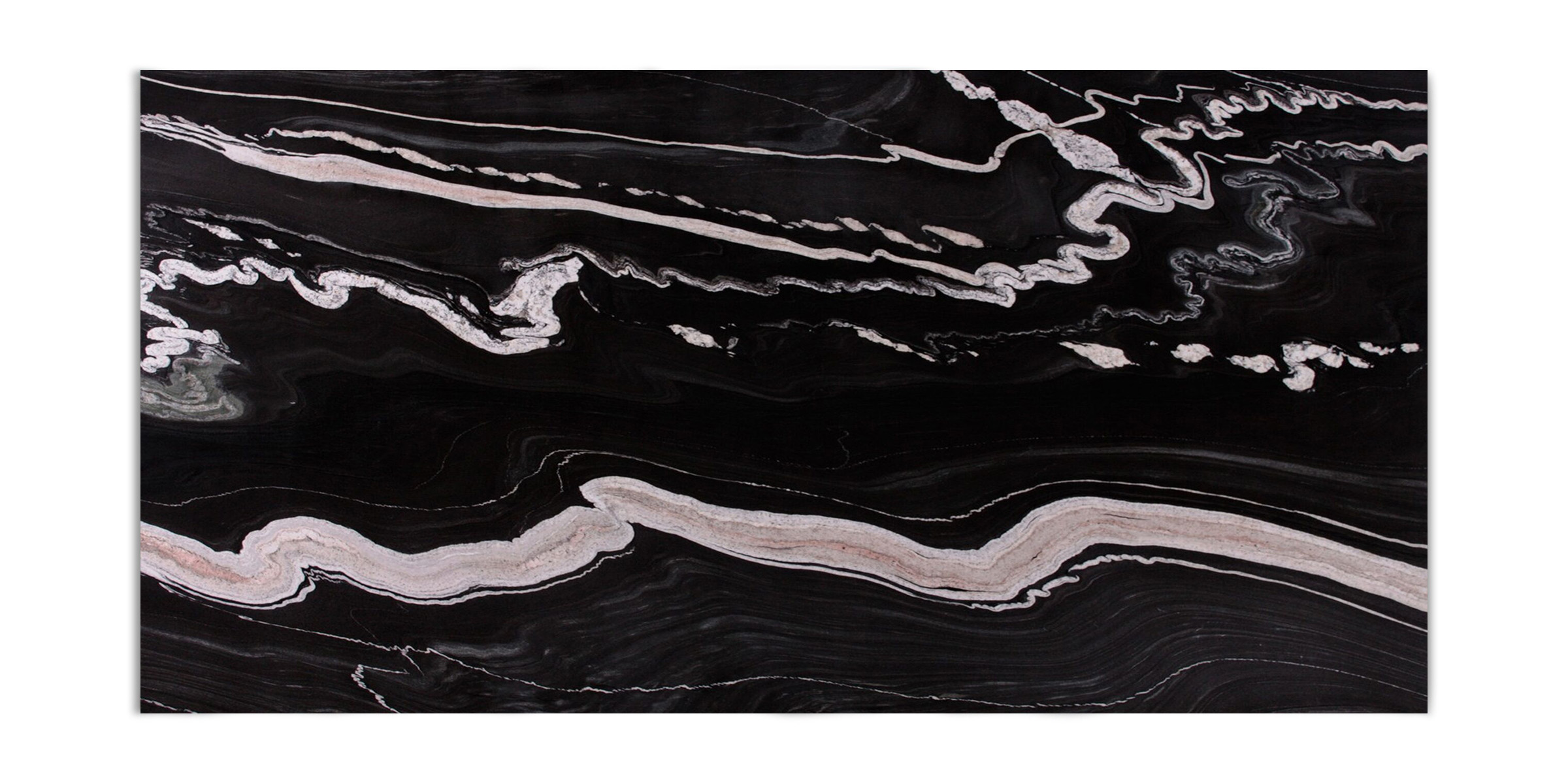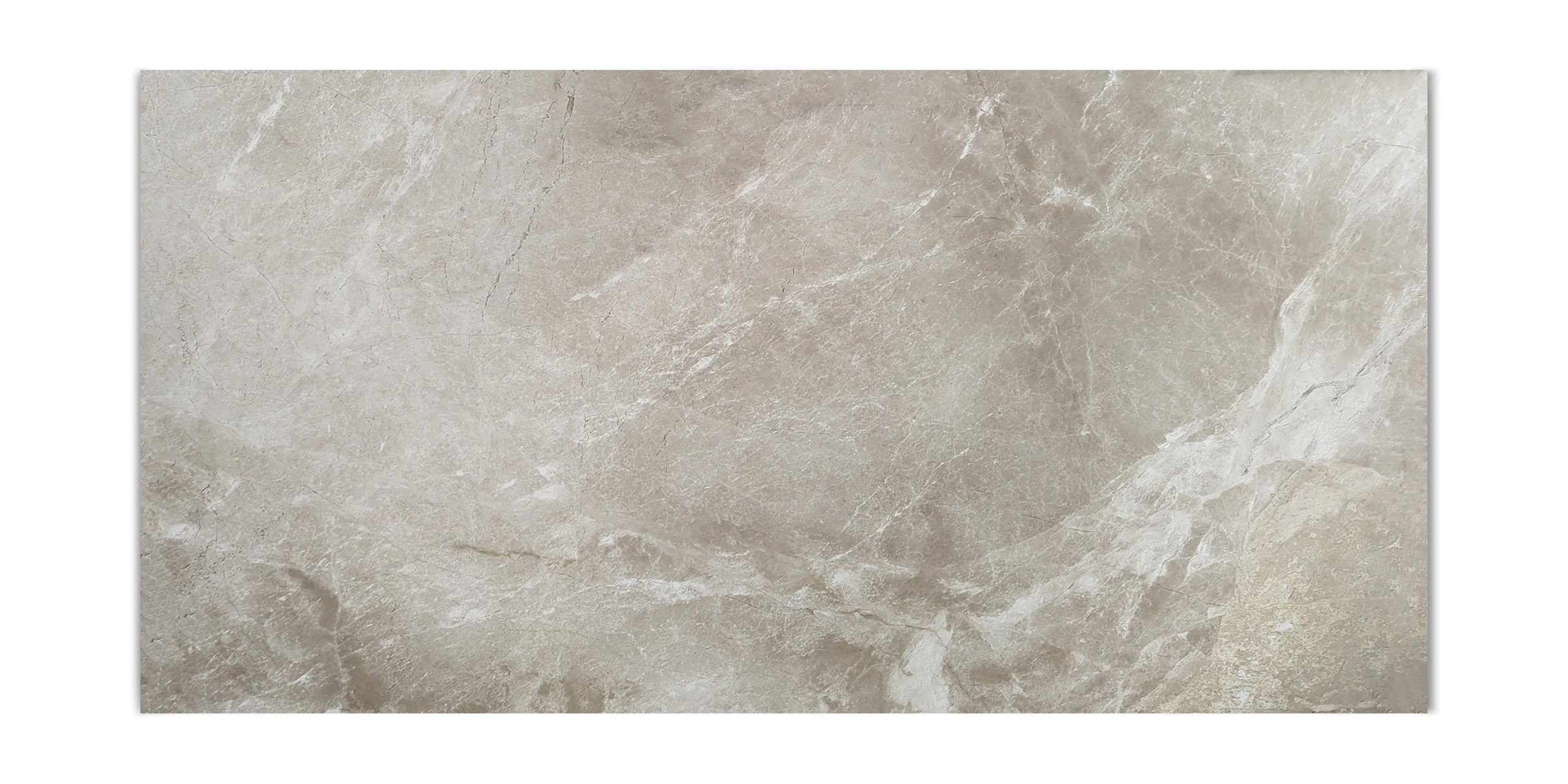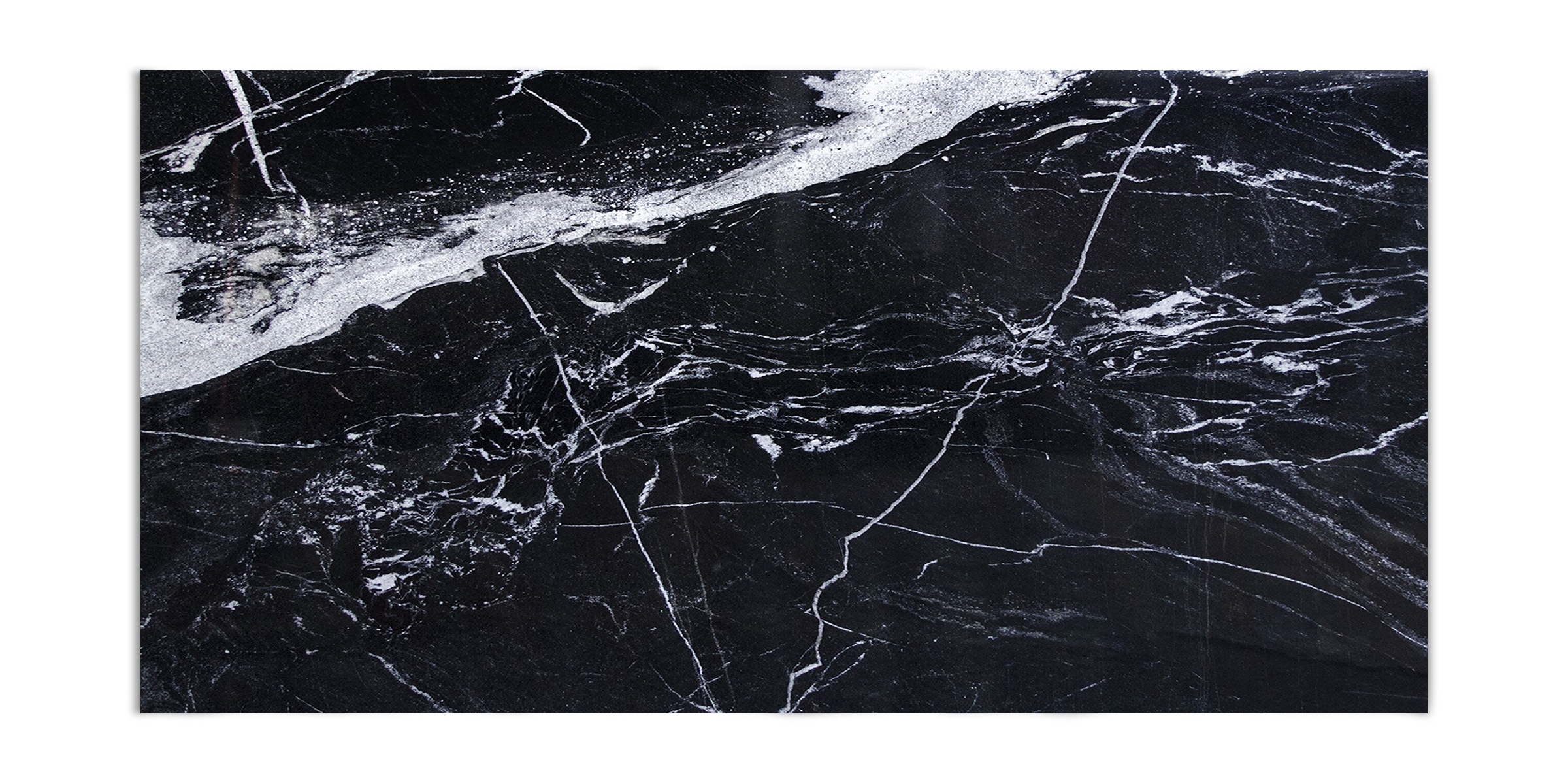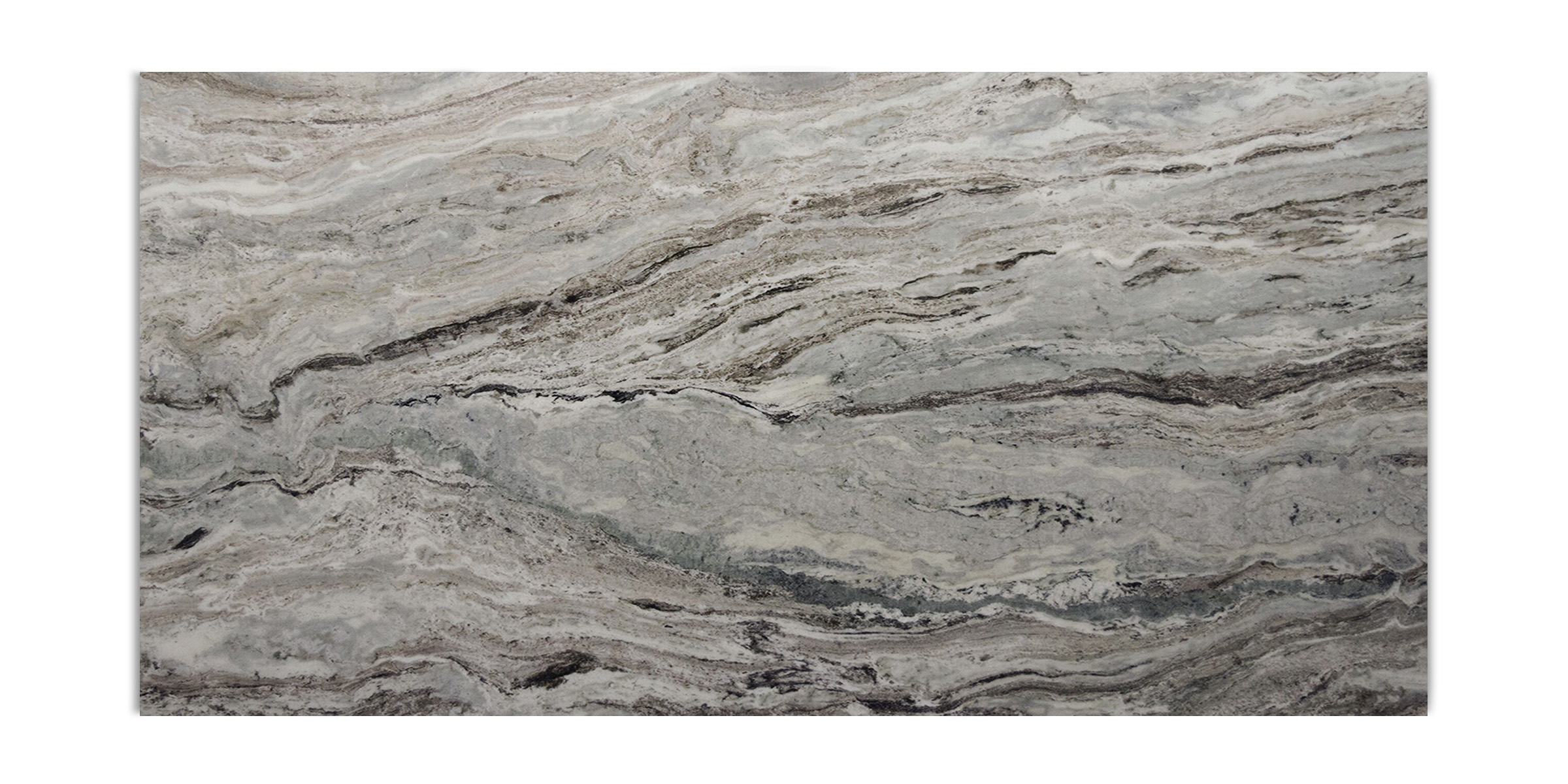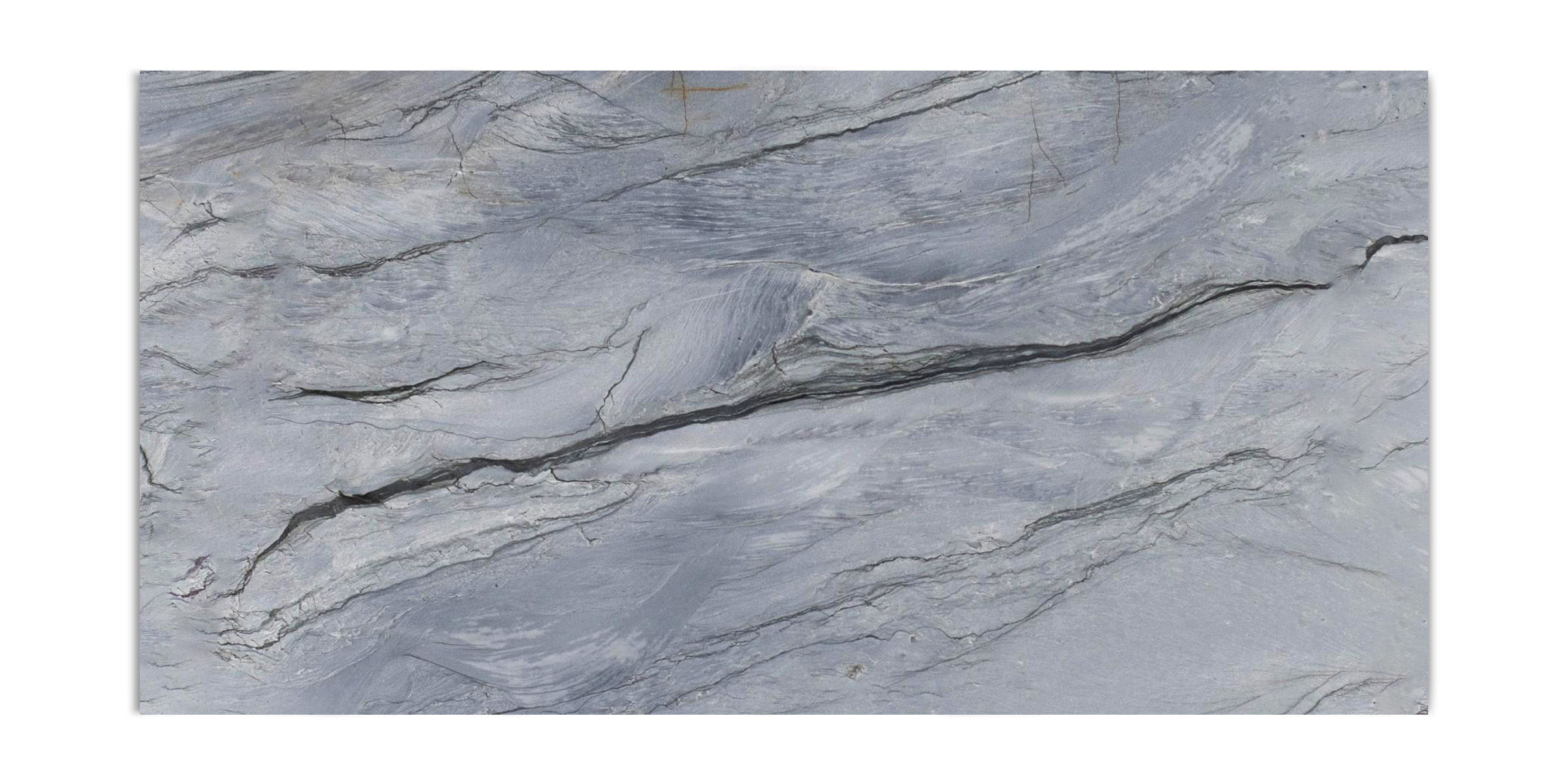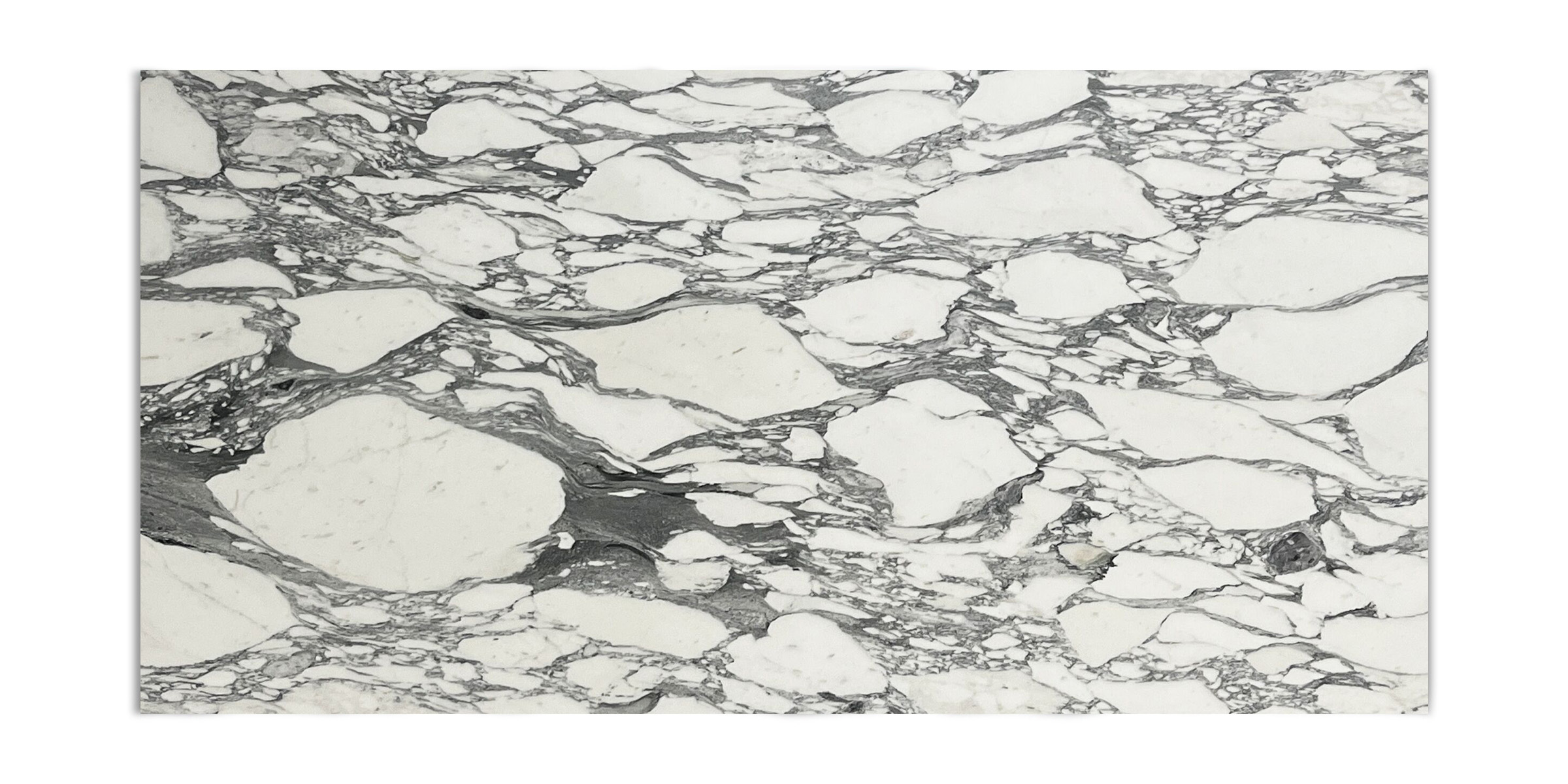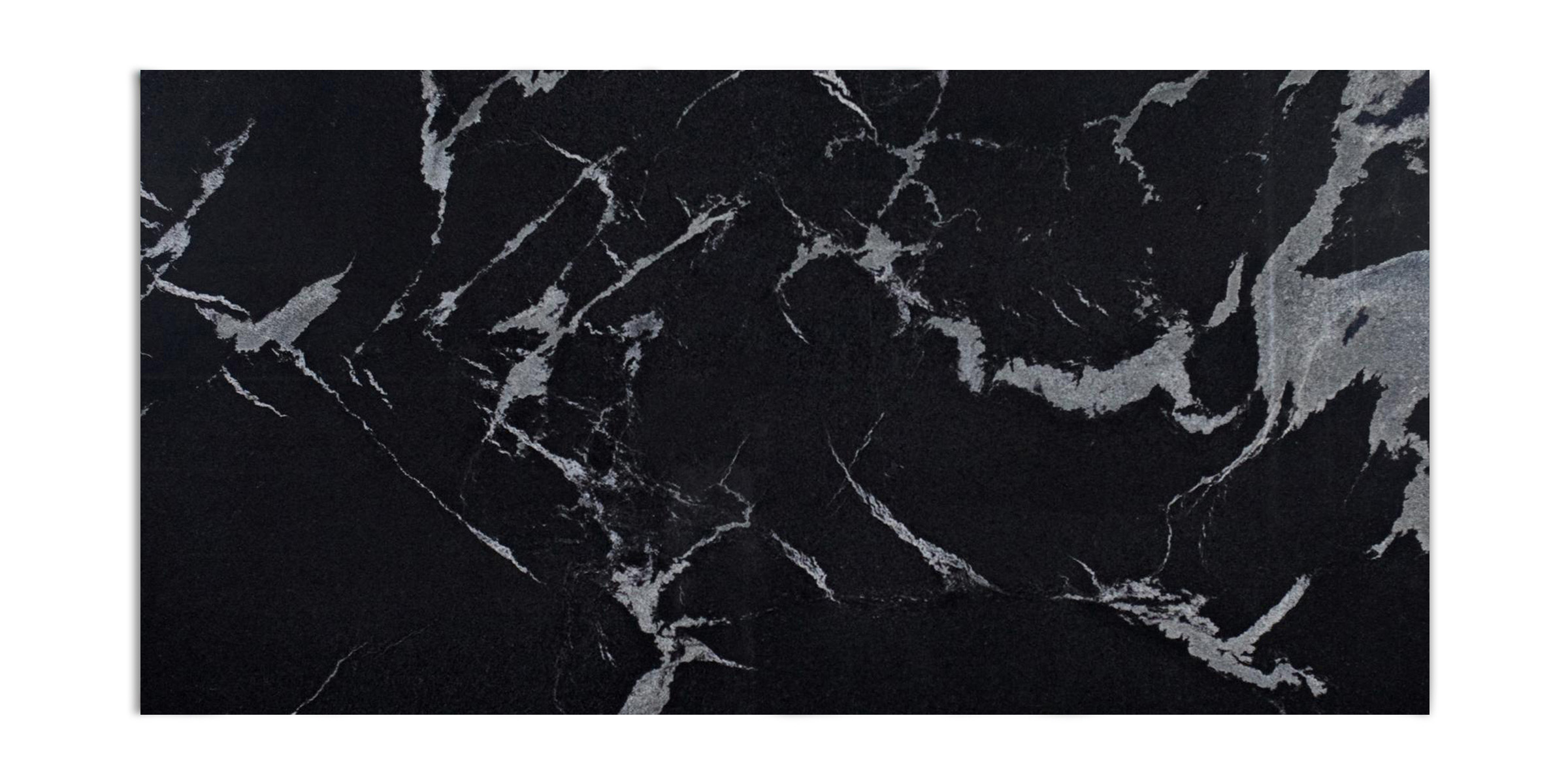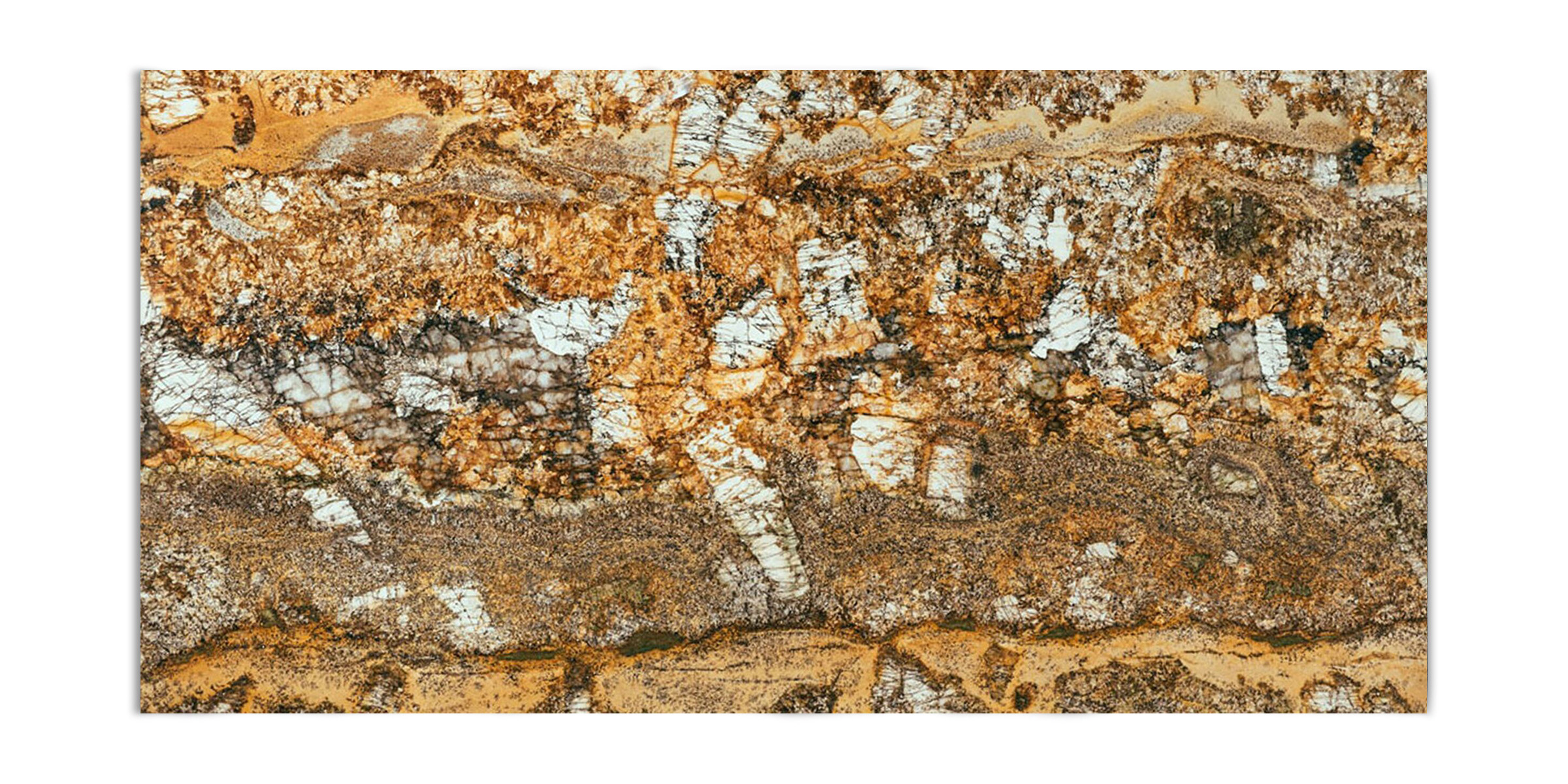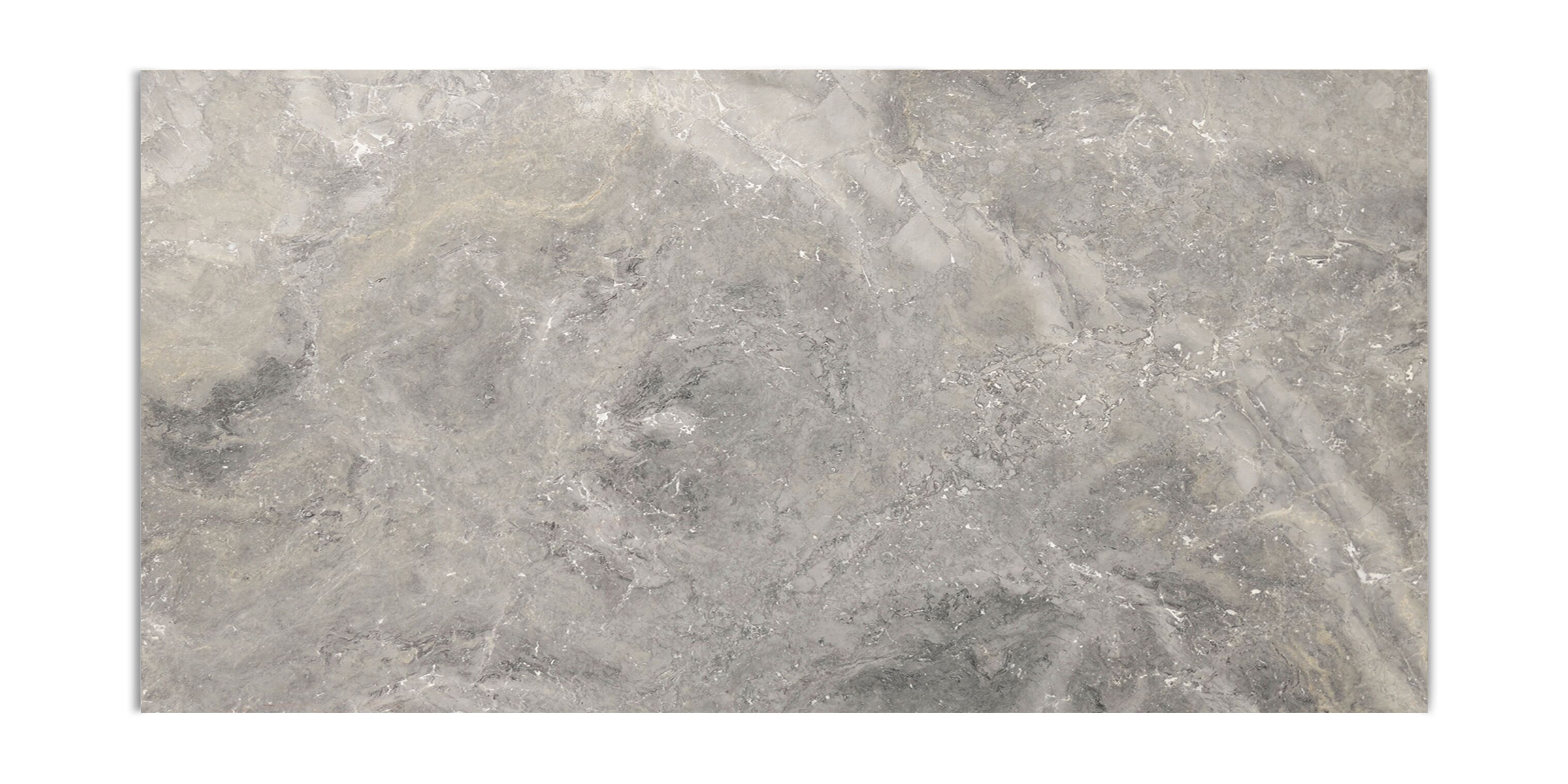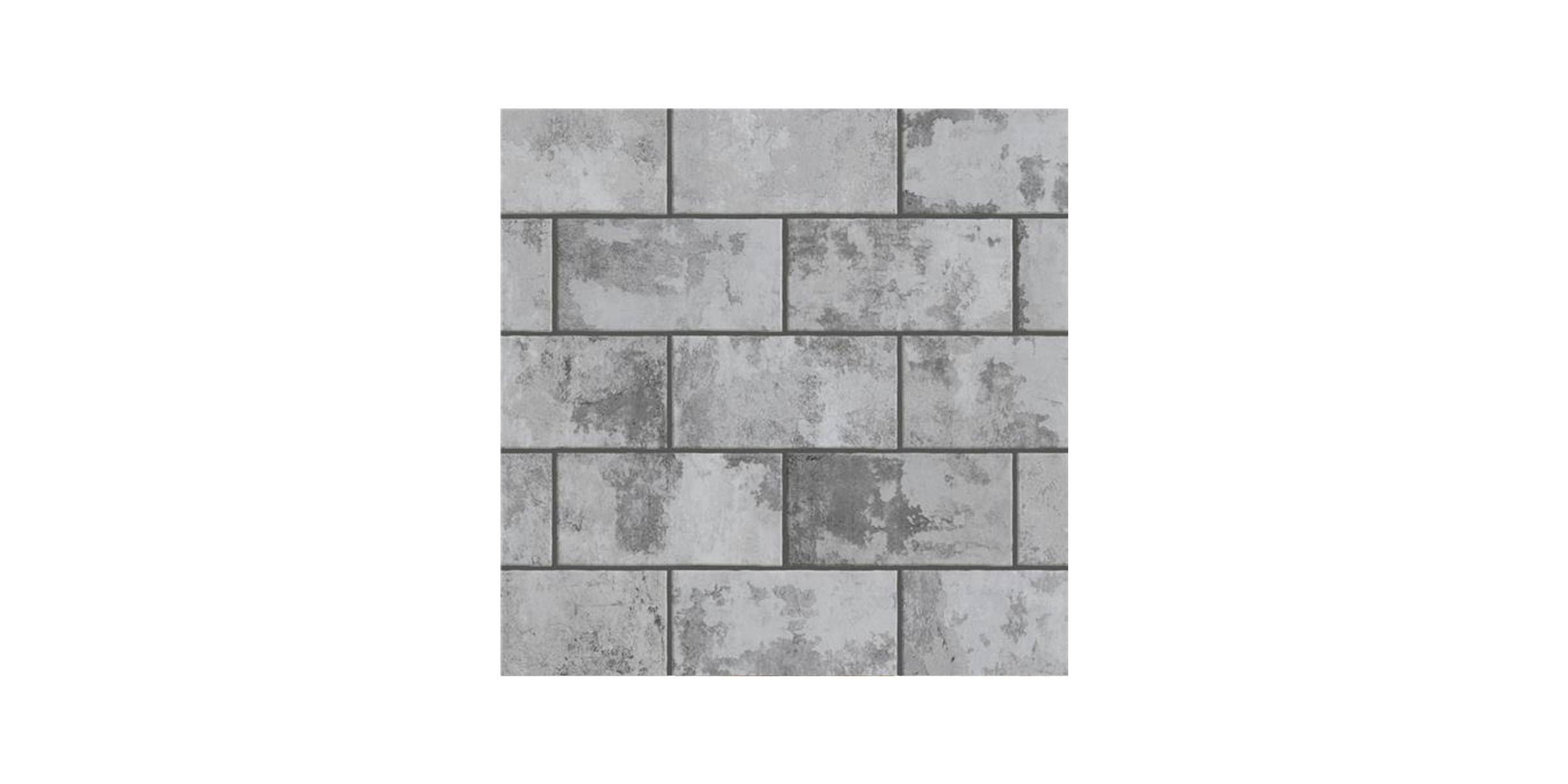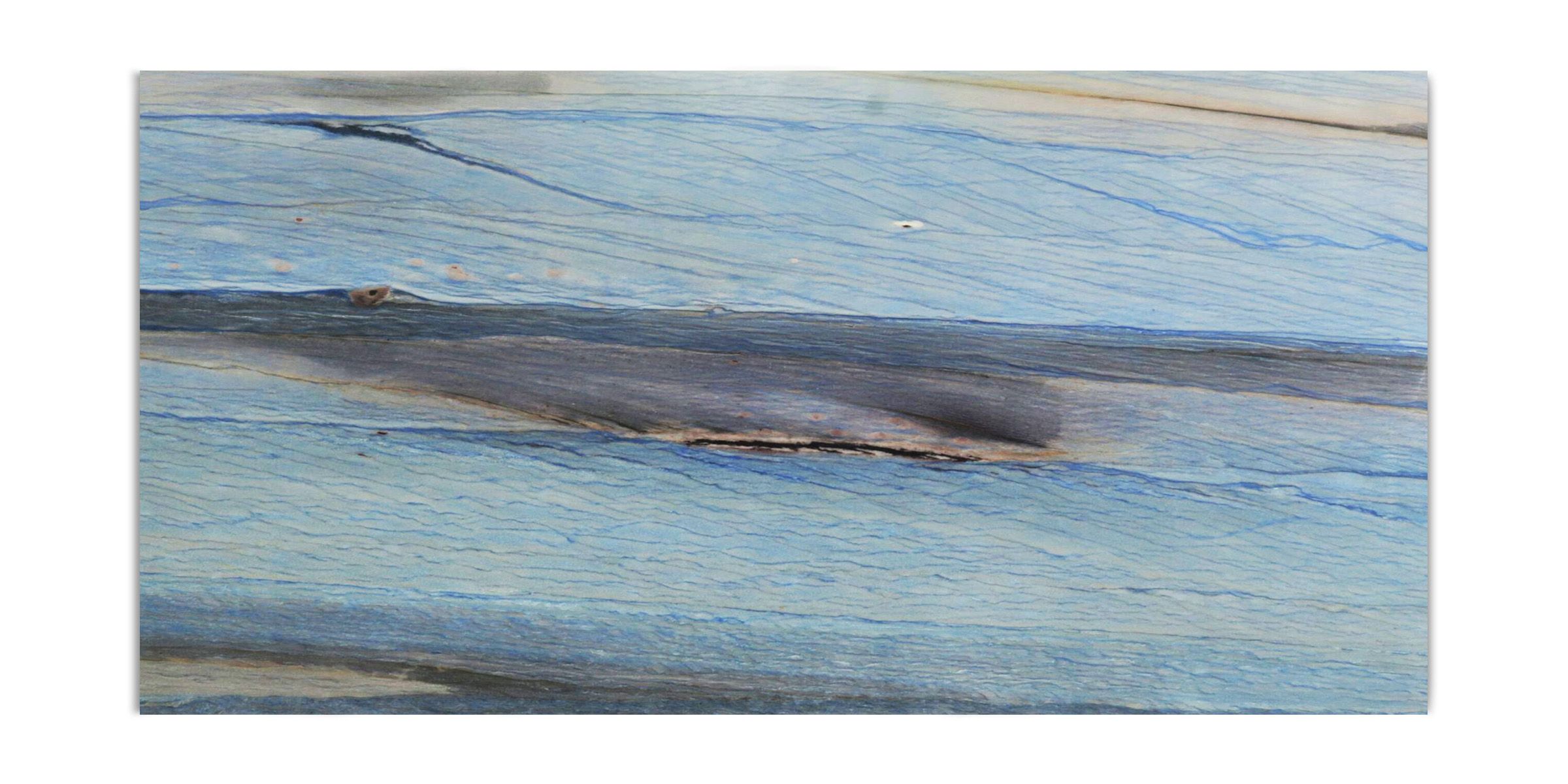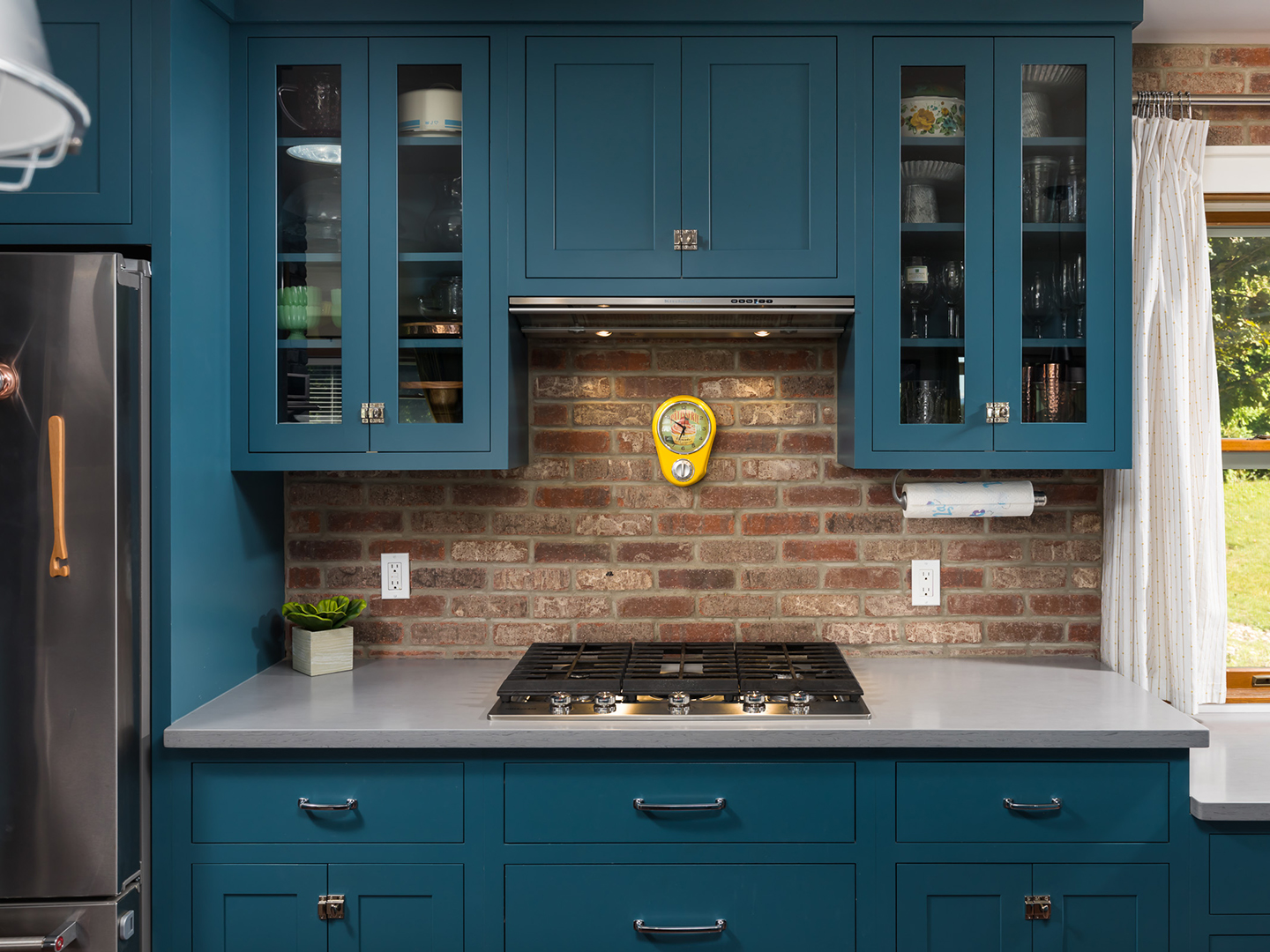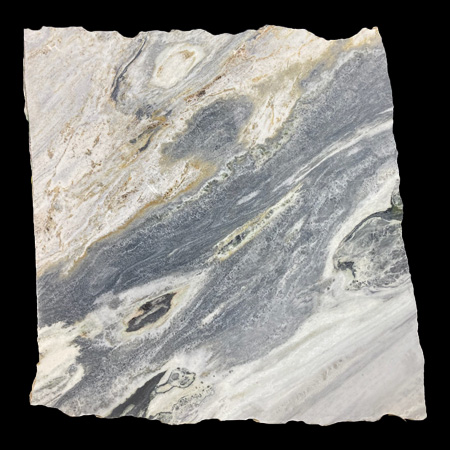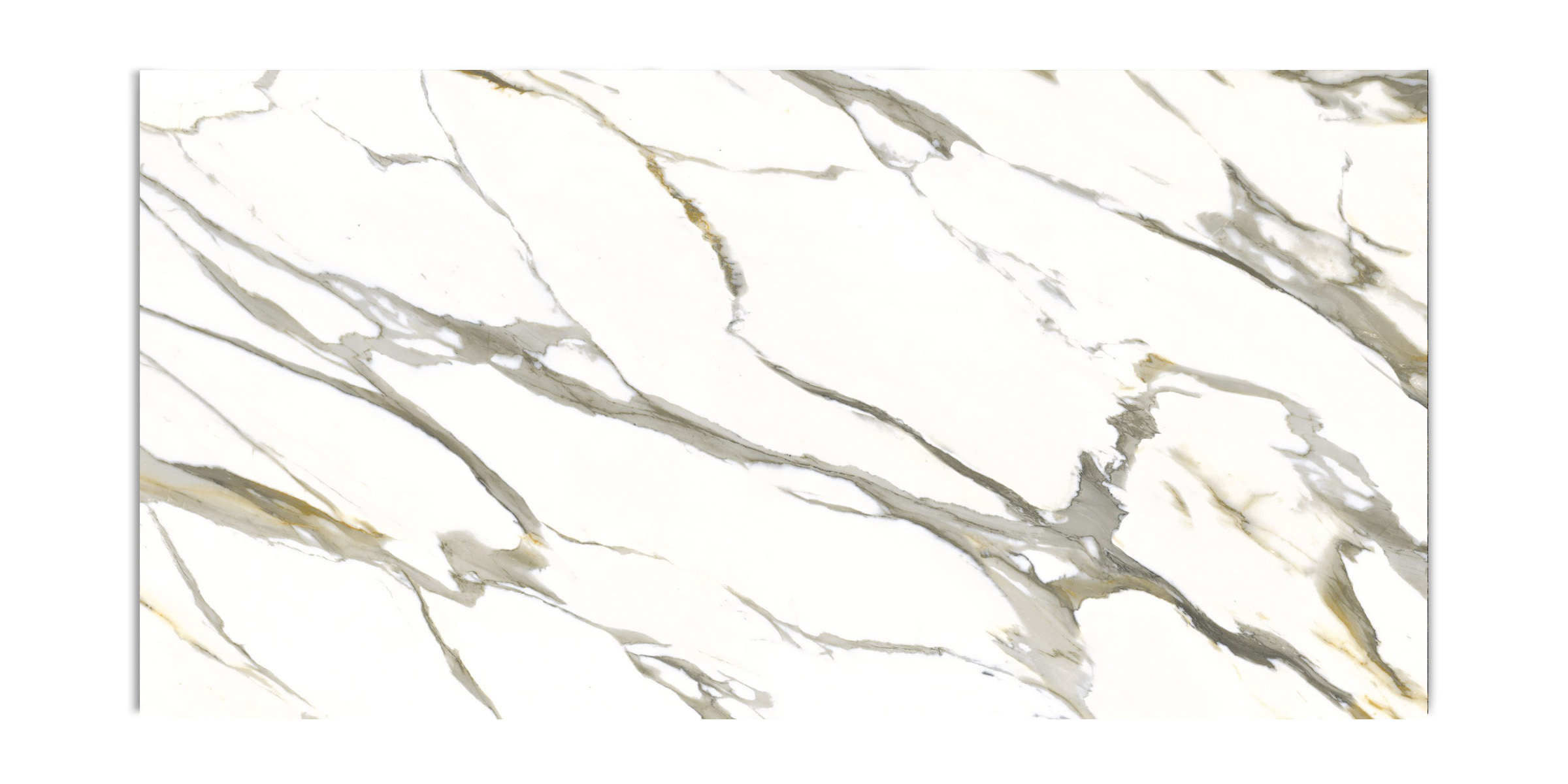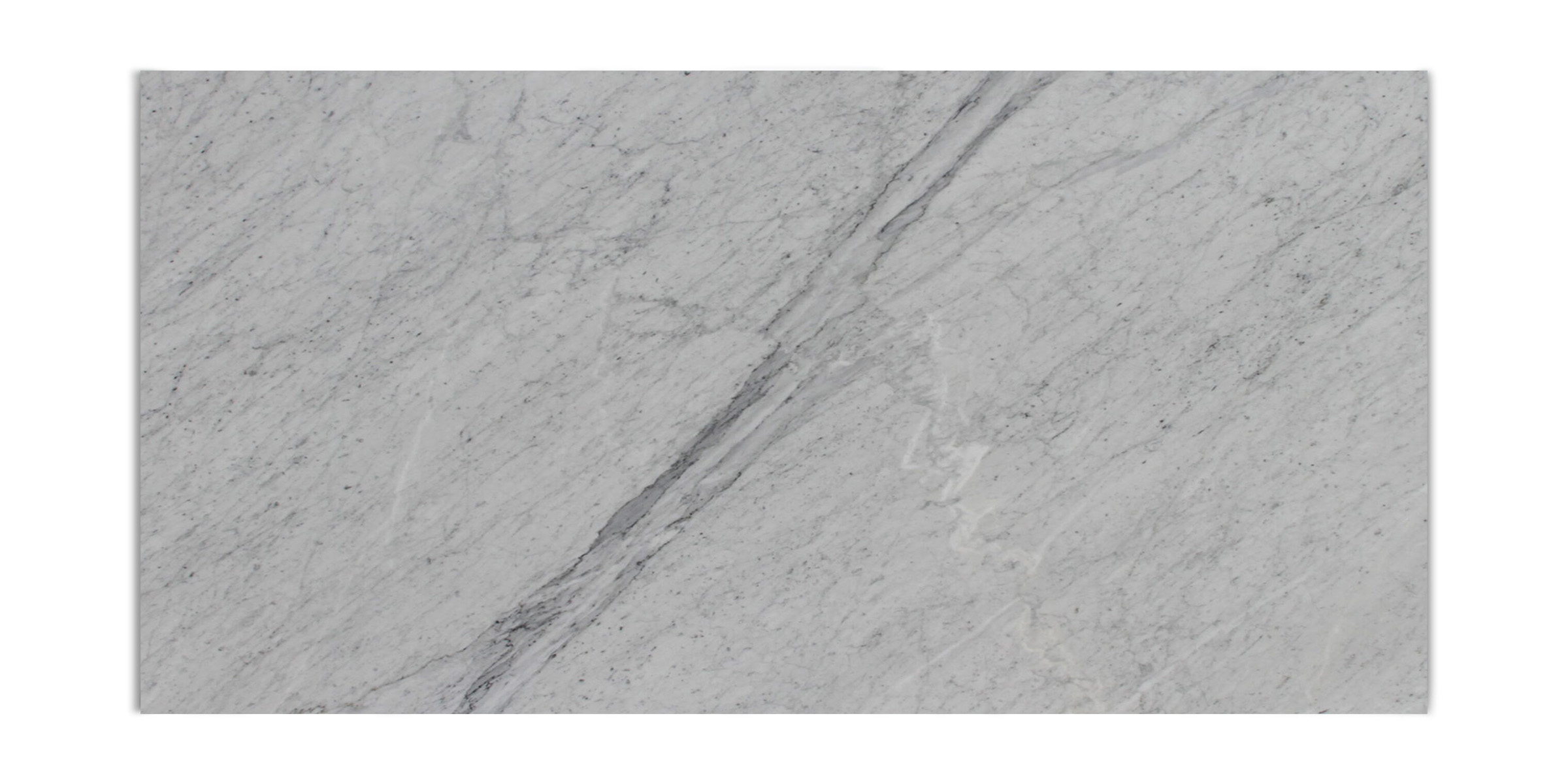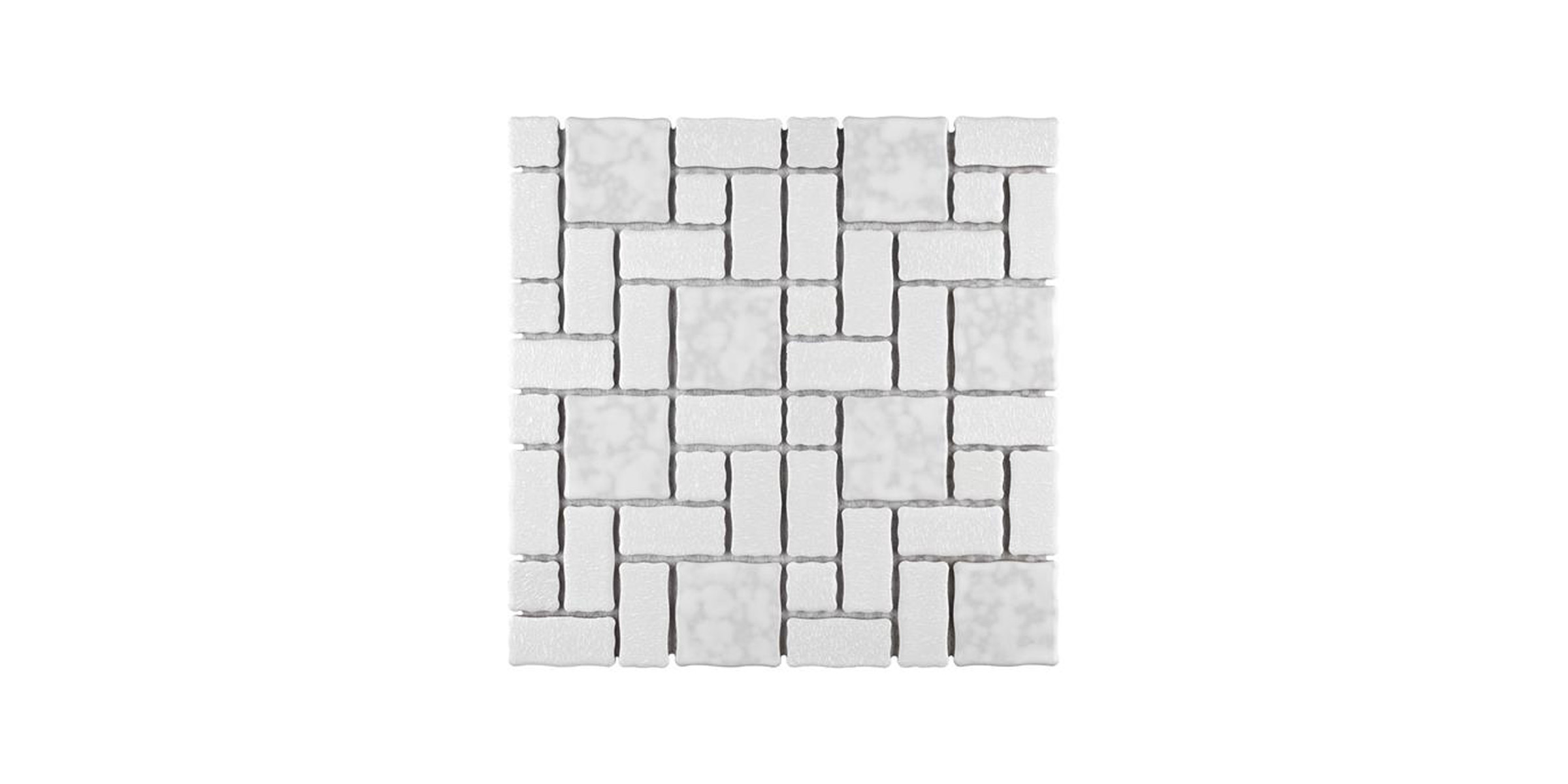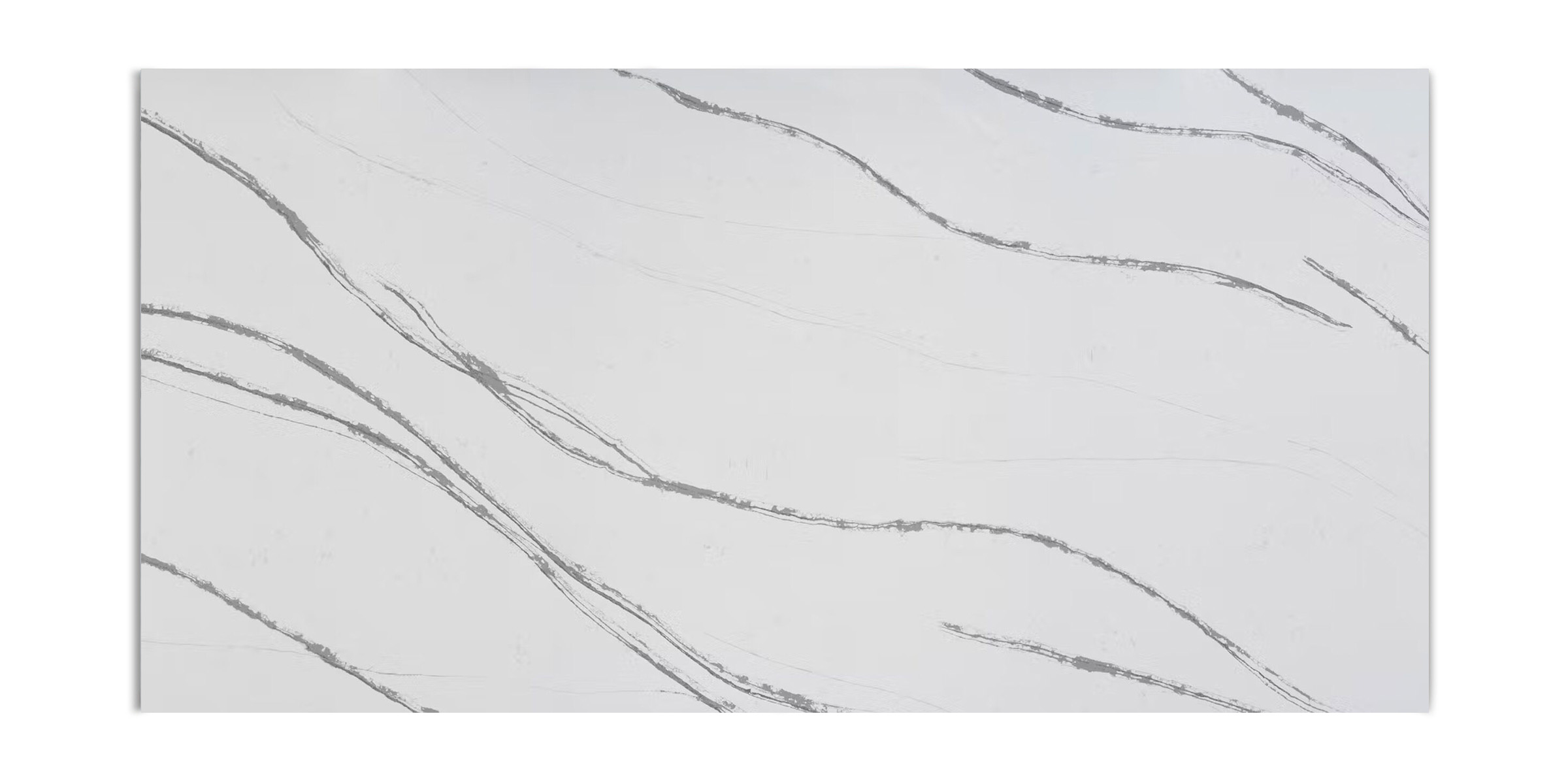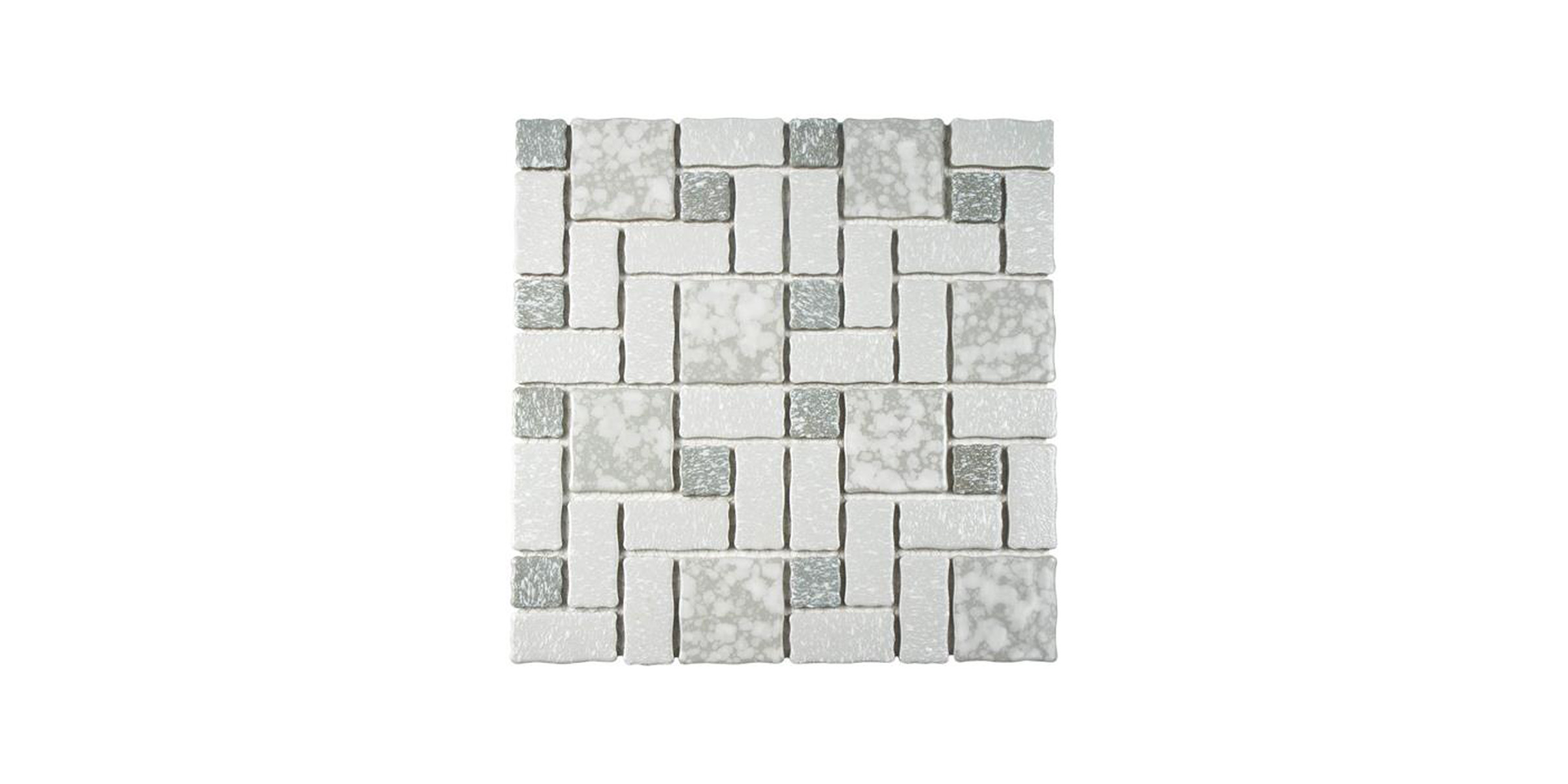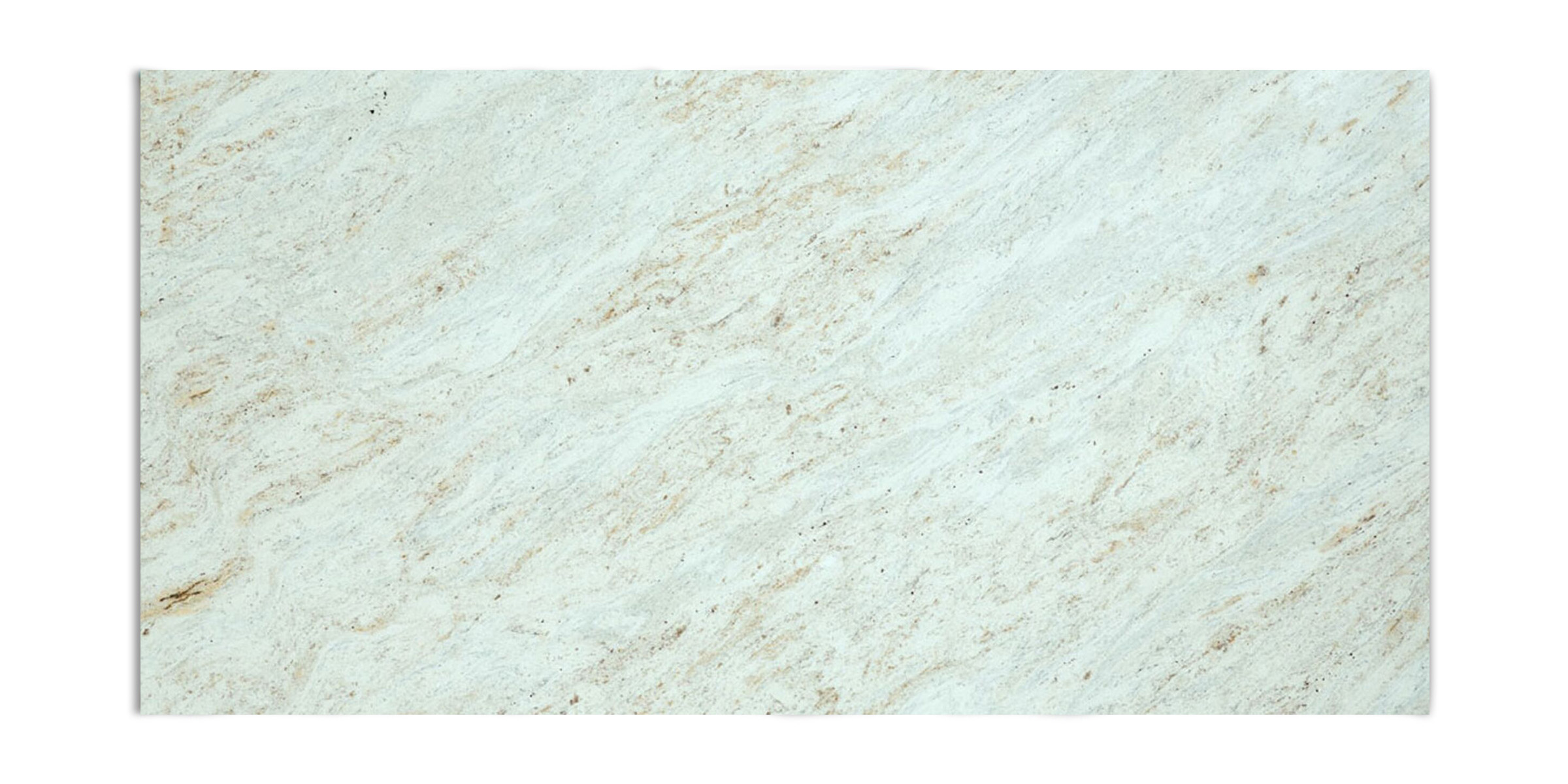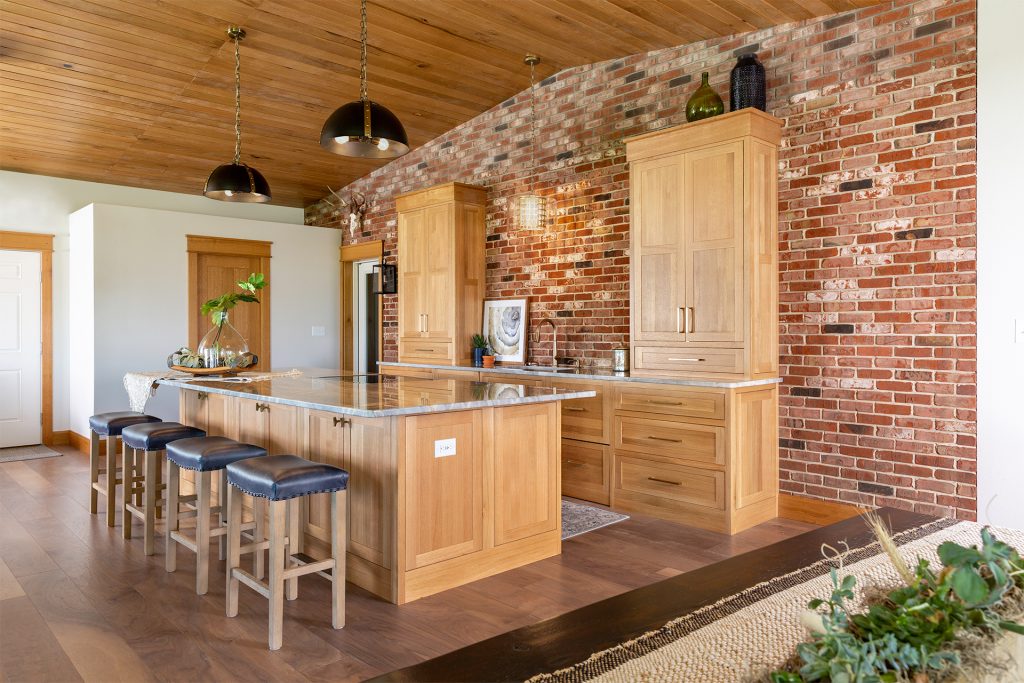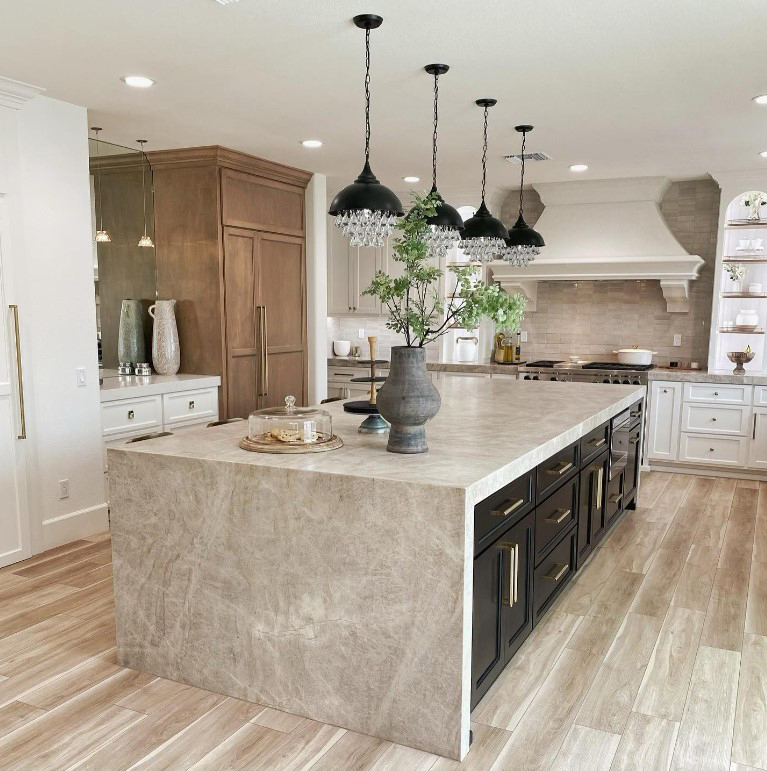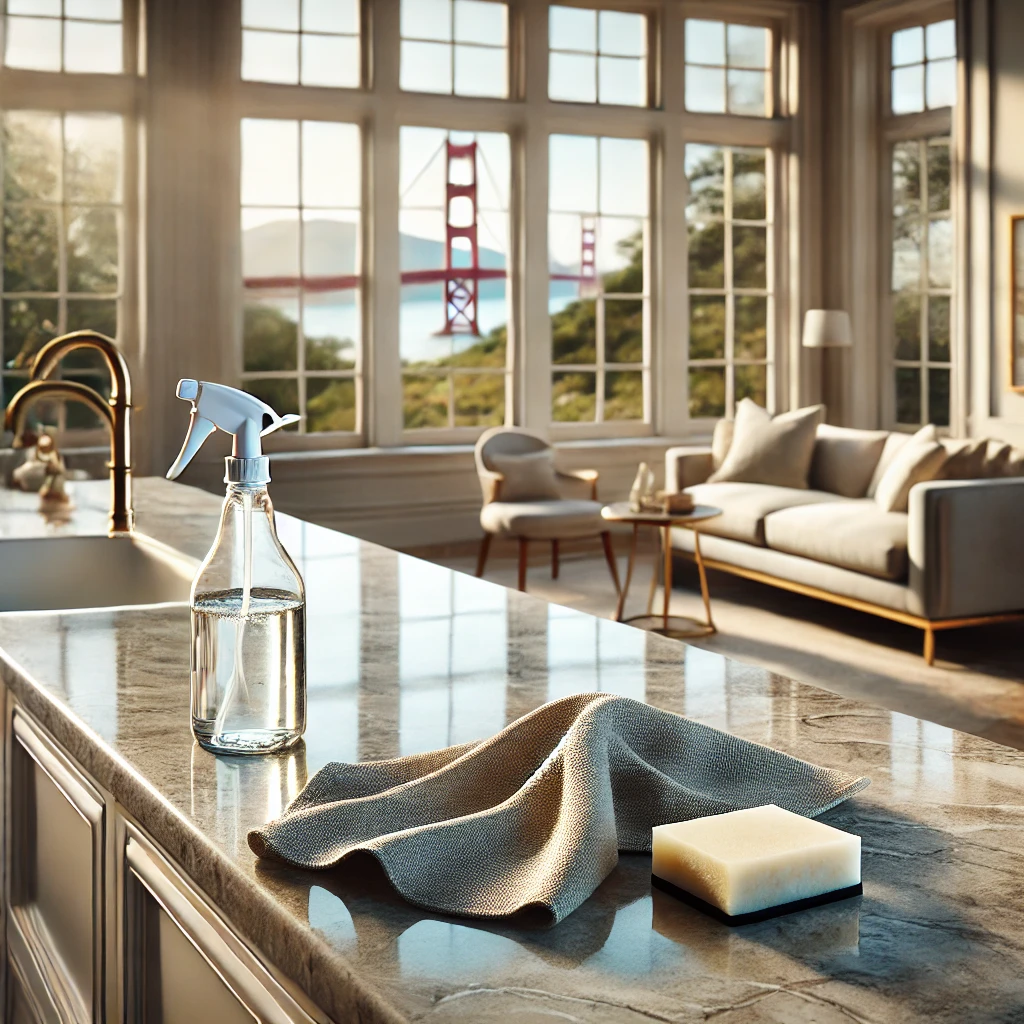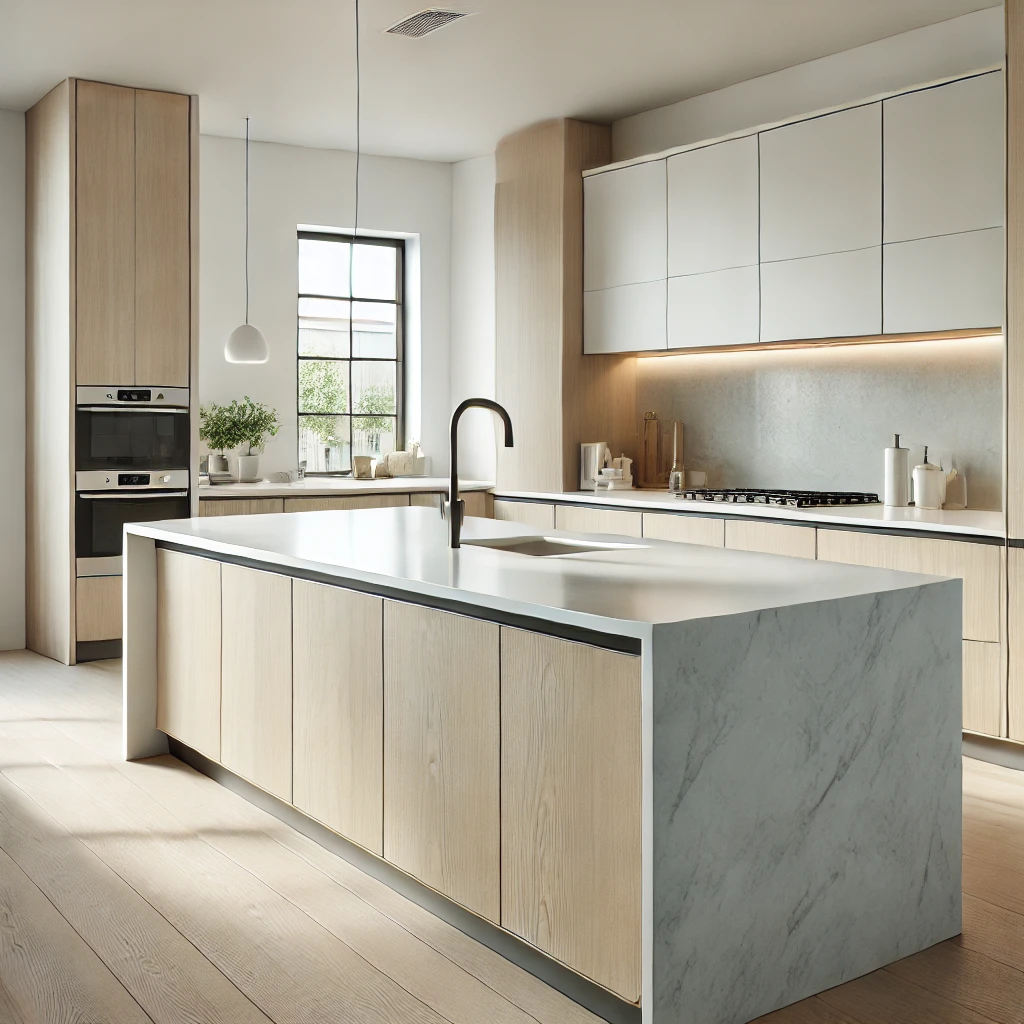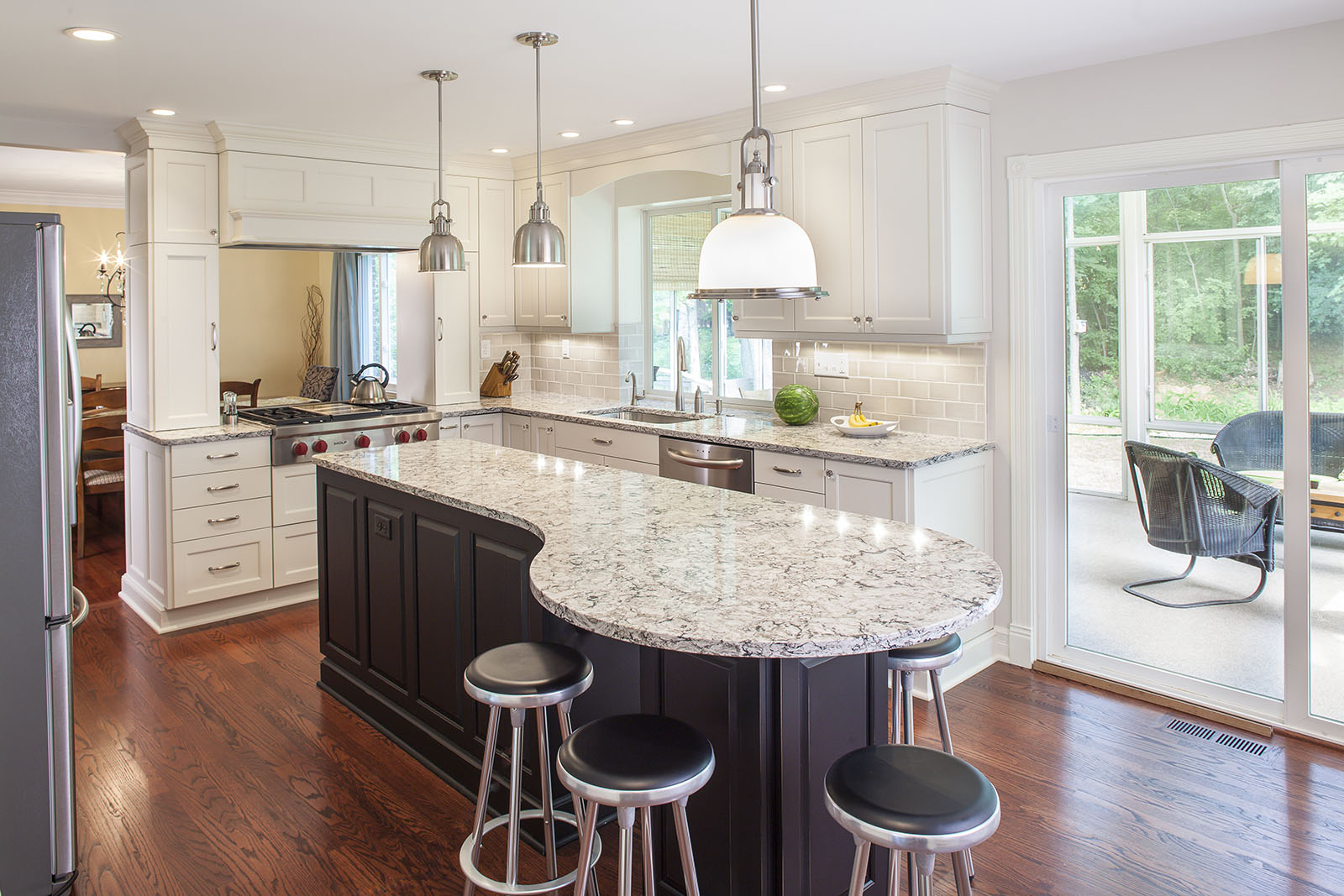Uncategorized
Where to get slab remnants?
Where to get slab remnants? If you're planning a small renovation project or looking to add a touch of luxury to your space without breaking the bank, slab remnants might be the perfect solution. But what exactly are slab remnants—and where can you find them? What Are Slab Remnants? Slab remnants are the leftover pieces of natural stone—like granite, marble, quartzite, or quartz—cut from larger slabs used in bigger projects such as kitchen countertops or large bathroom vanities. These remnants vary in size and shape but are usually high-quality materials that are simply too small for full countertop projects. Since
Can I put a hot cup of coffee on quartz?
If you’ve recently invested in quartz countertops, you’re likely enjoying their sleek look, durability, and low maintenance. But you might still wonder: Can I put a hot cup of coffee on quartz? The short answer is: Yes—but with caution. Quartz Is Heat Resistant, Not Heat Proof Quartz countertops are engineered from natural quartz crystals bound together with resin and pigments. This combination creates a surface that’s non-porous, scratch-resistant, and heat resistant to a point. Most quartz surfaces can handle brief exposure to heat up to around 150°F to 175°F (65°C to 80°C). A freshly brewed cup of coffee typically sits
Saving Money by Using Remnants
If you’ve ever dreamed of adding natural stone to your home but hesitated due to cost, you’re not alone. Marble countertops, granite vanities, and quartzite backsplashes are undeniably beautiful—but the price tag can sometimes be out of reach. That’s where Saving Money by Using Remnants come in. Remnants are leftover pieces of natural stone from larger slabs that have already been cut for other projects. Rather than letting these smaller sections go to waste, they’re sold at a discounted price—giving homeowners, designers, and contractors a budget-friendly way to add luxury finishes to their spaces. Why Consider Remnants? 1. Cost SavingsThe
How to clean slab remnants?
How to clean slab remnants? If you've picked up a remnant slab for a vanity top, table, backsplash, or custom project, congratulations—natural stone remnants are a great way to get high-end material at a fraction of the cost. But just like full-sized slabs, remnant pieces need proper care to maintain their beauty and longevity. Here’s a straightforward guide on how to clean and maintain your natural stone remnant: 1. Know Your Stone Type Before cleaning, make sure you know what kind of stone you’re working with—granite, marble, quartzite, limestone, and soapstone all have different properties. Some are more porous or
Do I have to seal my remnant slabs?
If you’ve recently picked out a beautiful natural stone remnant for a smaller project—like a bathroom vanity, bar top, or laundry room counter—you might be wondering: Do I have to seal my remnant slabs? The short answer is: yes, in most cases, sealing is recommended. Why Sealing Matters Natural stone—whether it’s granite, marble, quartzite, or travertine—is porous to varying degrees. That means liquids, oils, and stains can seep into the surface if it’s left unsealed. Even a smaller piece like a remnant is still vulnerable to discoloration or damage without proper protection. Sealing your remnant slab helps: Prevent stains from water,
Is there such thing as countertop remnants?
Is there such thing as countertop remnants? Yes—countertop remnants are very real, and they’re one of the best-kept secrets when it comes to saving money on natural stone! If you’re working on a smaller project—like a bathroom vanity, laundry room counter, outdoor bar, fireplace surround, or even a custom shelf—you don’t need to buy a full slab. Instead, you can use a natural stone remnant: a leftover piece from a larger slab that was cut for a previous project. What Are Countertop Remnants? Remnants are the unused sections of natural stone slabs (like quartzite, granite, or marble) that are left
Do you have to buy a whole slab?
Do you have to buy a whole slab? If you're considering using natural stone for your next project—whether it's a bathroom vanity, a laundry room countertop, or a fireplace surround—you might be wondering: Do I have to buy a whole slab? The short answer is no, you don’t have to. Many people assume that purchasing natural stone means committing to an entire slab, which can be both expensive and wasteful, especially for smaller projects. But there's a smarter, more affordable alternative: natural stone remnants. What Are Natural Stone Remnants? Remnants are leftover pieces of full slabs that remain after larger
What is an alternative for a full slab?
What is an alternative for a full slab? When it comes to natural stone projects, full slabs are often the go-to option for large surfaces like kitchen islands or expansive countertops. But what if you don’t need a full slab — or don’t want to pay full slab prices? That’s where stone remnants come in. What Are Natural Stone Remnants? Remnants are leftover pieces of full slabs that have been cut down for previous projects. They’re still high-quality natural stone — marble, quartzite, granite, or quartz — just in smaller sections. These pieces vary in size and shape, making them
How big are countertop remnants?
How big are countertop remnants? If you’re planning a smaller home project and considering natural stone, you may have heard about countertop remnants. But how big are these pieces, and are they worth considering? At [Your Company Name], we specialize in natural stone remnants and are here to break it down for you. What Are Countertop Remnants? Countertop remnants are the leftover pieces of natural stone slabs—like granite, marble, or quartzite—that remain after a larger slab has been cut for a custom project. Instead of going to waste, these smaller sections are saved and sold at a discounted price, making
Are slab remnants good for bathrooms?
Are slab remnants good for bathrooms? If you're remodeling a bathroom and looking for high-quality natural stone without breaking the bank, slab remnants might be the perfect solution. Many homeowners are discovering that stone remnants—leftover pieces from larger slabs—are not only cost-effective, but also versatile and stylish. Here’s why slab remnants are a smart choice for bathroom projects. What Are Slab Remnants? Slab remnants are smaller pieces of natural stone—like granite, marble, or quartzite—that are left over after the larger portions of the slab have been used for bigger projects, such as kitchen countertops. These remnants are typically high-quality, just
Are remnants good for kitchen countertops?
Are remnants good for kitchen countertops? If you're planning a kitchen remodel or looking to upgrade your countertops, you may have come across the term stone remnants. But what exactly are they—and are they a good option for kitchen countertops? Spoiler alert: yes, they can be! Especially if you’re looking for high-end materials without the high-end price tag. What Are Natural Stone Remnants? Natural stone remnants are the leftover pieces from larger slabs of materials like granite, marble, quartzite, and soapstone. These pieces are typically cut off during bigger projects and are often sold at a discount—even though they come
How Slab Remnants Can Save You Thousands
How Slab Remnants Can Save You Thousands. When it comes to upgrading your home with natural stone, there’s no denying the beauty and durability materials like granite, marble, and quartz bring to any space. But did you know you can get the same luxurious look for a fraction of the price? The secret: stone slab remnants. What Are Slab Remnants? Slab remnants are the leftover pieces of stone from larger countertop or tile projects. While they may be too small for a full kitchen, these high-quality pieces are perfect for a variety of smaller projects—and they come at a significantly
What is a remnant vanity?
What is a remnant vanity? If you’re planning a bathroom renovation or a small remodel, you may have come across the term remnant vanity. But what exactly does it mean—and why is it an increasingly popular choice for homeowners and designers alike? Defining a Remnant Vanity A remnant vanity refers to a bathroom vanity countertop made from a leftover piece of natural stone, such as granite, marble, quartz, or quartzite. These "remnants" are cut-offs from larger slabs used in bigger projects like kitchen countertops or commercial installations. Rather than discarding these high-quality materials, they’re repurposed into stunning, smaller-scale surfaces—perfect for
Can you buy a half slab of quartzite?
Can you buy a half slab of quartzite? If you're planning a home renovation and have fallen in love with the timeless, natural beauty of quartzite, you may be wondering: Do I really need to buy an entire slab for my project? Whether you're upgrading a bathroom, designing a custom table, or refreshing a laundry room, the answer is: No, you don't need a full slab. You can buy what some refer to as a “half slab”—in the natural stone world, these are known as remnants. What Is a Quartzite Remnant? A quartzite remnant is a leftover portion of a
5 uses for Natural Stone Remnants
5 uses for Natural Stone Remnants 5 uses for Natural Stone Remnants - Natural stone is prized for its beauty, durability, and timeless appeal—but what happens to the leftover pieces after a major project? Often overlooked, stone remnants are the hidden gems of home design. Whether you're a DIY enthusiast or a homeowner looking for unique upgrades, here are five smart and stylish ways to use natural stone remnants. 1. Bathroom Vanity Tops Stone remnants are the perfect size for bathroom vanities. Whether you're updating a powder room or remodeling your master bath, a granite or marble remnant can add
Can you put hot pans on slab remnants?
When remodeling a kitchen or bathroom, using slab remnants—leftover pieces of stone from larger countertop installations—can be a smart and budget-friendly way to add elegance without breaking the bank. But one of the most common questions homeowners have is: Can you put hot pans on slab remnants? The Short Answer: It Depends on the Material Not all slab remnants are created equal. The answer to whether you can safely place a hot pan on them depends largely on the type of material the remnant is made of. 1. Granite Remnants Granite is a natural stone formed under intense heat and
Do countertop remnants increase home value?
When it comes to home improvements that increase property value, kitchens and bathrooms often steal the spotlight. And within those spaces, countertops are a key feature that can make a lasting impression. But what if you could upgrade your counters using high-quality materials—without the high-end price tag? That’s where natural stone remnants come in. We specialize in premium natural stone remnants, and homeowners often ask us: "Do countertop remnants actually increase home value?" The short answer? Yes—and here’s why. What Are Countertop Remnants? - Do countertop remnants increase home value? Remnants are the leftover pieces from larger slabs of granite,
How do you cut granite remnants?
Granite remnants are a cost-effective and sustainable solution for home improvement projects like bathroom vanities, kitchen islands, fireplace surrounds, or even custom furniture pieces. But once you've chosen the perfect remnant, one big question remains: How do you cut granite remnants? In this guide, we’ll walk you through the process of cutting granite remnants, the tools you’ll need, and some essential safety tips. Whether you’re a seasoned DIYer or hiring a fabricator, understanding the process helps you get the best results from your stone. What You’ll Need to Cut Granite Remnants Cutting granite isn’t like cutting wood—this dense natural stone
What is the cheapest countertop?
What is the cheapest countertop? When it comes to upgrading your kitchen or bathroom, countertops are often one of the biggest investments. While materials like granite, marble, and quartz are beautiful and durable, they can also carry a hefty price tag—especially for larger spaces. But what if you could get the same high-end look for a fraction of the cost? The answer: countertop remnants. What Are Countertop Remnants? Countertop remnants are leftover pieces of natural stone—like granite, quartz, and marble—cut from larger slabs used in other projects. These pieces are too small for full kitchen installs, but they’re perfect for
Can you buy a half slab of quartz
When it comes to home improvement, not every project requires a full slab of quartz. Whether you're upgrading a bathroom vanity, adding a laundry room counter, or creating a custom tabletop, you might be wondering: Can you buy a half slab of quartz instead of the whole thing? The answer is yes, and in the stone industry, that’s what we call a remnant. What Exactly Is a Quartz Remnant? A quartz remnant is a leftover piece of a larger slab that was cut for a previous custom job. These pieces can range in size—from small sections suitable for a backsplash to
What to do with remnant granite?
What to do with remnant granite? We know that natural stone remnants—especially granite—are more than just leftovers. These beautiful, high-quality pieces offer endless design possibilities for homeowners, DIYers, and contractors alike. If you’ve ever asked yourself, “What can I do with remnant granite?” — this post is for you. Here are some of the most popular and creative ways to repurpose granite remnants: 1. Bathroom Vanity Tops Granite remnants are the perfect size for bathroom vanities. You get the elegance and durability of natural stone without the cost of a full slab. Whether you're remodeling a powder room or upgrading
What to do with an extra quartzite slab remnant?
What to do with an extra quartzite slab remnant? If you’ve recently completed a renovation or countertop project and find yourself with a leftover quartzite slab remnant, don’t let it go to waste! Quartzite is not only stunning but incredibly durable, making it perfect for a variety of creative and functional uses throughout your home or business. At [Your Company Name], we specialize in natural stone remnants — and quartzite is one of our favorites to repurpose. Here are some inspired ideas for how to use your quartzite slab remnant: 1. Bathroom Vanity Top A quartzite remnant can be the
Are countertop remnants cheaper?
Are countertop remnants cheaper? When planning a kitchen or bathroom remodel, countertops can take a big bite out of your budget. If you've been researching ways to save, you've probably come across the term "countertop remnants." But what exactly are they, and are they really cheaper? Let’s break it down. What Are Countertop Remnants? Countertop remnants are leftover pieces of stone—like granite, quartz, marble, or quartzite—from larger slab cuts used in previous projects. These pieces are typically too small for full-size kitchen countertops but are often perfect for smaller spaces like: Bathroom vanities Kitchen islands Laundry rooms Bar tops Fireplace
What is a leftover countertop piece called?
What is a leftover countertop piece called? If you've ever had new countertops installed, you might have heard your contractor or fabricator mention something called a "remnant." But what exactly is a remnant—and what can you do with one? What Is a Countertop Remnant? A remnant is the leftover piece of stone—like granite, quartz, or marble—that remains after a larger slab has been cut for a custom countertop installation. Since stone slabs come in fixed sizes, cutting them to fit a specific kitchen or bathroom often leaves behind irregular-shaped or smaller sections of material. These remnants are still high-quality stone.
What to do with quartz remnants?
What to do with quartz remnants? Quartz countertops are a beautiful and durable addition to any space—but what happens when you’re left with leftover pieces after an installation? These smaller slabs, often referred to as quartz remnants, are too valuable to toss and too small for full countertops. The good news? There are plenty of creative, stylish, and practical ways to repurpose quartz remnants and give them new life. Whether you're a DIY enthusiast or looking to add small but impactful upgrades to your home, here are some great ideas for what to do with quartz remnants: 1. Bathroom Vanity
Can you repurpose quartz remants?
Can you repurpose quartz remants? Quartz countertops are a favorite in modern homes thanks to their durability, low maintenance, and aesthetic appeal. But what happens to the leftover pieces—those odd-shaped quartz remnants—after a big installation project? You might be surprised to learn that these remnants can be repurposed in creative, cost-effective, and eco-friendly ways. Why Repurpose Quartz Remnants? Quartz is a non-porous, engineered stone made from natural quartz crystals and resin. It's tough, beautiful, and often expensive. Throwing away leftover pieces not only wastes money, but also contributes to unnecessary landfill use. Repurposing quartz remnants is a smart, sustainable alternative
What is the difference between a leftover and a remnant?
What is the difference between a leftover and a remnant? If you’re shopping for granite, marble, quartz, or other natural stone, you’ve probably heard people mention leftovers and remnants. These two words sound similar, but they describe very different things. Knowing the difference helps you save money, avoid waste, and make smarter decisions for your home projects. Leftovers: The Pieces You Already Own When you buy a natural stone slab for a kitchen countertop, bathroom vanity, or fireplace, you pay for the entire slab. After the fabricator cuts the slab to fit your project, you end up with leftover pieces.
How do you use leftover slab remnants?
How do you use leftover slab remnants? If you’ve ever visited a stone yard or countertop showroom, you’ve probably noticed piles of leftover slab remnants — those smaller pieces of granite, quartz, marble, and other natural stones left over from larger projects. Many stone shops sell these remnants at a big discount, which raises the question: what can you actually do with them? Here’s a guide to creative and practical ways you can put stone remnants to use — and why they might be the best-kept secret for budget-friendly home upgrades. 1️⃣ Small Countertops & Vanity Tops While remnants are
What is a leftover countertop called?
What is a leftover countertop called? If you’ve ever shopped for a countertop or walked through a stone yard, you may have seen smaller pieces of granite, quartz, marble, or other stone stacked off to the side. Maybe you’ve asked yourself: what’s the name for these leftover countertop pieces? The answer: they’re called remnants — specifically, slab remnants. Let’s break this down. What Are Slab Remnants? When a stone fabricator cuts a large slab to create a kitchen countertop, bathroom vanity, fireplace surround, or other surface, there are often leftover pieces that are too small for another large job but
How to use granite remnants?
Granite is one of the most durable, elegant, and timeless materials you can bring into your home. But what happens to leftover granite from larger countertop projects? Enter granite remnants—smaller pieces of granite that are perfect for a variety of creative, functional, and cost-effective uses. If you're looking for ways to repurpose these beautiful stone pieces, here are some inspiring ideas to make the most of granite remnants: 1. Small Countertops and Vanity Tops Remnants are often large enough for smaller surfaces like bathroom vanities, laundry rooms, or wet bars. You’ll get the high-end look of granite without the price
What is a remnant countertop?
What is a remnant countertop? When planning a kitchen or bathroom remodel, choosing the right countertop is one of the most important decisions. But have you ever heard of a remnant countertop? If you’re looking to save money without sacrificing quality or beauty, this might be the perfect solution. A Simple Definition A remnant countertop refers to a leftover piece of stone—such as granite, quartz, or marble—from a larger slab used in a previous project. Stone fabricators typically purchase large slabs to cut into custom countertops. After cutting a slab to size, they’re often left with smaller pieces that aren’t
What is remnant marble
If you're planning a home renovation or a small design project, you may have heard the term "remnant marble" tossed around by fabricators or designers. But what exactly does it mean, and why should you consider it for your next project? Defining Remnant Marble Simply put, remnant marble refers to leftover pieces of marble from larger slabs that have been cut for previous projects. When a fabricator cuts a slab of marble for a kitchen countertop or bathroom vanity, there are often unused sections that aren't large enough for another full countertop but are still high-quality, usable stone. These leftover
Are stone remnants cheaper?
Are stone remnants cheaper? If you're planning a kitchen renovation or bathroom upgrade, you've probably looked into stone countertops. Materials like granite, marble, and quartz are incredibly popular—but they can also come with a hefty price tag. One lesser-known way to cut costs without sacrificing quality is by using stone remnants. But are they actually cheaper, and is it a smart move for your project? Let’s dive in. What Are Stone Remnants? Stone remnants are the leftover pieces of full slabs that have already been cut for larger jobs. Think of them as the off-cuts from someone else’s kitchen or
What is an example of a remnant?
When planning a home improvement project, especially involving natural stone, you’ve likely heard the term “slab remnant.” But what exactly is a slab remnant, and how can you use one to save money on your renovation? What Is a Slab Remnant? A slab remnant refers to a leftover piece of natural stone—like granite, quartz, or marble—cut from a larger slab during countertop fabrication. Instead of throwing away these smaller pieces, stone suppliers keep them in stock and sell them at discounted prices. Real-Life Example of a Slab Remnant class="" data-start="710" data-end="940">Imagine a homeowner orders a large granite slab to create
What maintenance does quartzite require?
What maintenance does quartzite require? Quartzite has become a favorite among homeowners and designers thanks to its striking beauty and incredible durability. Often mistaken for marble or granite, quartzite is a natural stone that combines aesthetic appeal with hard-wearing strength — making it ideal for countertops, flooring, and wall applications. However, like any natural material, quartzite needs some maintenance to keep it looking its best. Here's a simple guide to understanding what quartzite maintenance involves. Daily Care for Quartzite The good news? Daily maintenance is easy. To clean quartzite surfaces: Wipe with a soft cloth and mild soap: A mixture
How do I get my granite white again?
How do I get my granite white again? Granite countertops are the crown jewel of many kitchens and bathrooms—especially when they’re pristine white. But over time, even the brightest white granite can lose its luster due to daily wear, spills, and buildup. If your once-glistening surface is now looking a little dull, yellowed, or stained, don’t worry. Here’s how to restore your granite and bring back that bright, clean white look. 1. Start With a Deep Clean Before jumping into special treatments, give your granite a thorough clean: Use a pH-balanced stone cleaner or a mix of mild dish soap
Is soapstone high maintenance?
Is soapstone high maintenance? If you’re dreaming of a cozy, classic kitchen with rich natural stone countertops, soapstone has probably caught your eye. It’s got that timeless charm, soft matte finish, and subtle veining that makes it feel both elegant and lived-in. But one question always comes up: Is soapstone high maintenance? The short answer: Not really. But like any natural material, it has its quirks—let’s dive into what it actually takes to care for soapstone. The Beauty of Low Maintenance Soapstone is non-porous. That means it doesn’t stain like marble or granite, and it doesn’t need to be sealed.
Should backsplash be shiny or matte?
Should backsplash be shiny or matte? When designing or remodeling a kitchen, every detail matters—from cabinet hardware down to the finish on your backsplash. One of the most common design dilemmas homeowners face is whether to go with a shiny (glossy) or matte backsplash. Each finish has its own personality, pros, and cons, so how do you decide which is right for your space? Let’s break it down. The Case for Shiny Backsplashes Glossy finishes reflect light, making them a popular choice for smaller kitchens or those lacking natural light. They can brighten up the room, adding a sense of
What color granite is easiest to clean?
What color granite is easiest to clean? When choosing granite for your kitchen or bathroom, it's not just about beauty and durability—practicality matters too. One key factor to consider is how easy the granite will be to keep clean. The color and pattern of the granite can make a surprising difference in how often you’ll need to wipe it down or how visible stains and crumbs are. So, what color granite is the easiest to clean? The Short Answer: Medium-Toned, Speckled Granite Is the Easiest If you want granite that hides everyday messes, looks great, and doesn’t show every fingerprint
Should I get granite or quartz countertops?
If you're remodeling your kitchen or building your dream home, you've likely asked yourself: Should I get granite or quartz countertops? It's a great question—and one with no wrong answer. Both materials are top-tier choices that bring beauty, durability, and value to your home. The best one for you comes down to your lifestyle, design preferences, and how much maintenance you're willing to do. Let’s break down the pros of each to help you decide which one fits you best. Granite Countertops: Natural Beauty & One-of-a-Kind Appeal Granite is a 100% natural stone that’s mined and cut into slabs. Each
What is the lifespan of porcelain countertops
What is the lifespan of porcelain countertops? When designing or remodeling a kitchen or bathroom, countertops play a huge role in both function and style. Among the many materials available today, porcelain countertops are becoming increasingly popular for their sleek look, durability, and low maintenance. But one of the biggest questions homeowners have is: how long do porcelain countertops actually last? Let’s dive into the lifespan of porcelain countertops and what factors can influence it. So, How Long Do Porcelain Countertops Last? On average, porcelain countertops can last 20 to 50 years or even longer when properly cared for. That’s
Can you scratch granite with a knife?
Granite countertops are a favorite in many kitchens and bathrooms for good reason—they’re durable, beautiful, and hold up well to everyday wear and tear. But one common question people ask is: Can you scratch granite with a knife? Short Answer: It's Unlikely—But Not Impossible Granite is one of the hardest natural materials used in home surfaces. On the Mohs scale of mineral hardness (which goes from 1 to 10), granite typically ranks between 6 and 7, while steel (like most kitchen knife blades) falls between 4 and 5.5. That means, under normal circumstances, a typical kitchen knife shouldn't be able
How often should I seal granite?
How often should I seal granite? Granite countertops are gorgeous, durable, and add serious style to any kitchen or bathroom. But like any natural stone, they need a little TLC to stay looking their best. One of the most common questions people ask is: how often should I seal my granite? Let’s break it down. Why Granite Needs Sealing Granite is a natural stone, which means it’s porous. Without a sealant, water, oil, wine, or even coffee can seep into the surface and leave stains. Sealing your granite helps keep it resistant to spills and makes cleanup a breeze. The
What to avoid on quartzite?
What to avoid on quartzite? Quartzite is a stunning natural stone that brings both beauty and durability to any space, especially kitchens and bathrooms. Its marble-like veining and granite-like strength make it a popular choice among homeowners and designers alike. However, to keep your quartzite surfaces looking flawless for years, it's important to understand what not to do. Here's what you should avoid when caring for quartzite: 1. Avoid Harsh Chemicals and Cleaners While quartzite is tough, it's still a natural stone—and natural stone doesn’t mix well with acidic or abrasive cleaners. Avoid bleach, vinegar, ammonia, and citrus-based cleaners, as
What is a honed finish?
What Is a Honed Finish? Everything You Need to Know If you're exploring natural stone surfaces for your home — whether it's countertops, flooring, or wall features — you've probably come across terms like polished, leathered, and honed. But what exactly is a honed finish, and how does it compare to other options? Let’s break it down. What Does “Honed” Mean? A honed finish refers to a type of surface treatment where the stone is ground down to a smooth, flat, and consistent surface with a matte or satin-like sheen — rather than a high gloss. It’s achieved by stopping
What stains the worst on quartz?
What stains the worst on quartz? Quartz countertops are known for their durability, low maintenance, and sleek, modern look. But as much as we love them for being non-porous and resistant to staining, they’re not completely stain-proof. Certain substances can leave stubborn marks if not cleaned up quickly. So, what stains quartz the worst? Let’s dive in. 1. Permanent Markers and Ink Sharpies, pens, and other inks are some of the toughest culprits. If you’re working on a craft or homework at the kitchen counter, be careful — once ink seeps into the surface, it can be incredibly difficult to
Should you seal black granite?
Should you seal black granite? Black granite is one of the most popular choices for kitchen countertops, bathroom vanities, and even flooring, thanks to its luxurious look, durability, and deep, rich color. But once it's installed, a common question arises: Should you seal black granite? The answer isn’t always straightforward—let’s break it down. What Makes Black Granite Unique? Granite is a natural stone, and like all natural stones, it’s porous to varying degrees. This means liquids can potentially seep into the surface, leading to stains or discoloration. However, not all granite is created equal, and black varieties tend to be
What is the best finish for quartz countertops?
What is the best finish for quartz countertops? Quartz countertops have become a staple in modern kitchens and bathrooms for their durability, low maintenance, and sleek appearance. But once you've chosen the color and pattern, there's another important decision to make—the finish. The finish not only impacts how your countertops look but also how they feel and wear over time. So, what is the best finish for quartz countertops? Let's break it down. 1. Polished Finish: The Classic Choice What it is: A polished finish gives quartz a smooth, glossy surface that reflects light beautifully. This is the most popular
How thick should a granite slab be?
How thick should a granite slab be? When it comes to choosing granite for your countertops, thickness matters more than you might think. It not only affects the appearance and style but also the strength, cost, and installation process. So, how thick should a granite slab be? Let’s break it down. Standard Granite Thicknesses Granite slabs generally come in three standard thicknesses: 2 cm (¾ inch) 3 cm (1¼ inch) 1 cm (⅜ inch) – much less common and often used for wall applications rather than countertops. Among these, 3 cm and 2 cm are the most widely used for
What countertop never goes out of style?
What countertop never goes out of style? When it comes to kitchen and bathroom design, trends come and go—remember avocado green appliances or tile countertops? But if you're investing in a renovation and want a timeless look that adds long-term value, the question becomes: What countertop never goes out of style? The Classic Winner: Natural Stone, Especially Marble and Granite Among the many countertop materials available today, natural stone—especially marble and granite—continues to reign as the timeless choice. These materials have been used for centuries and still feel fresh, elegant, and luxurious. Why Marble and Granite Stay Stylish Natural Beauty:
What happens if you don’t oil soapstone?
What happens if you don't oil soapstone? Soapstone is a beautiful, natural stone often used for countertops, sinks, and other surfaces due to its durability and unique aesthetic. One common practice among soapstone owners is oiling the surface with mineral oil or wax to enhance its color and protect it. But what happens if you choose not to oil your soapstone? Let’s explore the effects. 1. The Natural Aging Process If left unoiled, soapstone will naturally darken over time due to exposure to oils from your hands, cooking ingredients, and general use. However, this darkening will be uneven, leading to
How can you tell if granite is high-quality?
How can you tell if granite is high-quality? Granite is a popular choice for countertops, flooring, and other home improvement projects due to its durability, aesthetic appeal, and resistance to heat and scratches. However, not all granite is of the same quality. If you’re planning to invest in granite, knowing how to distinguish high-quality slabs from lower-grade options is essential. Here are some key factors to consider when evaluating granite quality. 1. Thickness of the Slab High-quality granite typically comes in slabs that are at least 1.25 inches (3 cm) thick. Thinner slabs (around 0.75 inches or 2 cm) are
How do you cut marble?
How do you cut marble? Marble is a stunning and durable natural stone used in various applications, from countertops to flooring. However, cutting marble is an incredibly challenging task that requires precision, patience, and specialized tools. While some DIY enthusiasts attempt it, the process can be complicated and costly without the right expertise. That’s why it's often best to leave it to professional fabricators like us to ensure a flawless finish. Why Cutting Marble Is Difficult Brittle Nature: Despite its durability, marble can crack or chip easily if not cut correctly. Specialized Tools Required: Diamond blades, wet saws, and angle
Does granite change color when wet?
Does granite change color when wet? Granite is one of the most popular natural stones used in countertops, flooring, and outdoor spaces due to its durability and aesthetic appeal. If you’ve ever noticed that granite appears darker when wet, you might wonder if it actually changes color. The answer is both simple and fascinating. Why Does Granite Look Darker When Wet? Granite, like many natural stones, is porous to some extent. This means it has tiny microscopic holes that allow water and other liquids to seep in. When water enters these pores, it changes how light interacts with the stone,
What is the most affordable type of countertop?
What is the most affordable type of countertop? When selecting a countertop for your kitchen or bathroom, natural stone offers both durability and timeless beauty. However, cost is often a major deciding factor. If you're looking for an affordable natural stone countertop, it's important to compare options like granite, quartz, and marble to find the best balance between price and aesthetics. 1. Granite: The Budget-Friendly Classic Granite is one of the most affordable natural stone options available. Prices for granite countertops typically range from $40 to $100 per square foot, depending on the quality, color, and thickness of the slab.
What happens if you don’t seal quartzite?
What happens if you don't seal quartzite? Quartzite is one of the most popular natural stones used for countertops, flooring, and backsplashes. It’s loved for its durability, elegant appearance, and resemblance to marble. But despite its strength, quartzite is still a porous material that requires proper care—especially sealing. So, what happens if you don’t seal your quartzite surfaces? 1. Increased Staining Risk Quartzite is naturally porous, meaning it can absorb liquids if left unsealed. Spilled coffee, wine, juice, or even water can seep into the stone and leave behind stubborn stains that are difficult to remove. 2. Water Damage and
What makes a bathroom look classy?
What makes a bathroom look classy? A bathroom is more than just a functional space; it’s a sanctuary, a place of relaxation, and an area that can exude elegance when designed thoughtfully. Creating a classy bathroom involves a combination of materials, colors, and design elements that work harmoniously to bring out sophistication and style. Two key materials that can elevate a bathroom’s aesthetic are natural stone and high-quality tiles. The Elegance of Natural Stone Natural stone is synonymous with luxury. Whether it’s marble, granite, travertine, or slate, these materials bring a unique, organic beauty to any bathroom. Here’s why natural
What are 5 facts about granite?
What are 5 facts about granite? Granite is one of the most popular and durable natural stones used in construction and design. From kitchen countertops to towering monuments, its beauty and strength make it a favorite among homeowners and architects alike. But beyond its polished surface, granite has a rich geological history and some surprising characteristics. Here are five fascinating facts about granite that you may not know! 1. Granite Is One of the Hardest Natural Stones Granite is composed primarily of quartz, feldspar, and mica, giving it an impressive hardness rating of around 6 to 7 on the Mohs
What is the best countertop for your money?
What is the best countertop for your money? When it comes to upgrading your kitchen or bathroom, natural stone countertops offer a blend of beauty, durability, and long-term value. With various options available, finding the best one for your budget can be challenging. Here’s a breakdown of the top natural stone countertops and their value for your money. 1. Granite: A Natural Beauty with Lasting Value Price Range: $40 - $100 per square foot Granite remains a popular choice due to its natural beauty and durability. Each slab is unique, offering a variety of colors and patterns. Although it requires
How is dolomite manufactured?
How is dolomite manufactured? Dolomite slabs dominate the construction and interior design industries because of their durability, aesthetic appeal, and resistance to heat and scratches. These slabs start as dolomite, a carbonate mineral composed of calcium magnesium carbonate (CaMg(CO3)2). The manufacturing process transforms raw dolomite into refined slabs, ready for installation in homes and commercial spaces. Let’s break down each step of the process. 1. Extracting Dolomite The process kicks off with extracting dolomite from natural deposits. Dolomite occurs in sedimentary rock formations, and miners extract it using traditional quarrying methods, including: Open-pit mining – Large-scale excavation exposes dolomite deposits
What are the golden rules of tiling?
What are the golden rules of tiling? Tiling can transform any space, adding durability, functionality, and aesthetics. However, a successful tiling project requires careful planning, precision, and adherence to key principles. Whether you're a DIY enthusiast or a professional, following these golden rules will ensure a flawless and long-lasting finish. 1. Plan Before You Start Before laying a single tile, take the time to plan the layout. Measure the area, determine your starting point, and consider how the tiles will align with walls, corners, and fixtures. A dry layout can help visualize the final look and minimize awkward cuts. 2.
Is it hard to replace countertops yourself?
Is it hard to replace countertops yourself? If you're considering a kitchen or bathroom upgrade, replacing your countertops might be high on your list. With countless DIY tutorials available, you may be wondering: Can I replace my countertops myself? Technically, yes. But should you? Probably not. Here’s why leaving it to the professionals—like us—is your best bet. The Challenges of DIY Countertop Replacement 1. Heavy and Hard to Handle Countertops aren’t just a simple swap-out. Materials like granite, quartz, and marble are incredibly heavy, requiring specialized lifting techniques and multiple people to maneuver them safely. Without the proper equipment and
What is the rule of thumb for backsplash?
What is the rule of thumb for backsplash? A backsplash is a functional and aesthetic element in kitchen and bathroom design, protecting walls from moisture, grease, and spills while adding a stylish touch. If you're planning to install a backsplash, here are some essential rules of thumb to follow: 1. Height Matters The standard height for a backsplash is between 4 inches and the bottom of the upper cabinets. However, many homeowners opt for a full-height backsplash, extending all the way to the ceiling for a more dramatic effect, especially behind ranges and sinks. 2. Proportion and Balance Ensure the
What are countertop remnants?
If you’re planning a home renovation or a small project that requires a beautiful yet cost-effective surface, you may have come across the term "countertop remnants." But what exactly are they, and why should you consider them for your next project? In this blog post, we’ll explore what countertop remnants are, their benefits, and how you can use them to enhance your space. What Are Countertop Remnants? Fabricators create countertop remnants when they cut larger slabs of stone, quartz, granite, marble, or other solid surfaces for projects. After installing countertops in kitchens and bathrooms, they often have smaller sections of
How to pick out a countertop?
How to pick out a countertop? Choosing the right countertop for your home is an essential decision that impacts both functionality and aesthetics. Whether you're remodeling your kitchen or upgrading your bathroom, selecting the perfect countertop requires careful consideration of materials, durability, cost, and style. Here’s a guide to help you make the best choice. 1. Consider Your Needs Before choosing a countertop, assess your lifestyle and how you use the space. If you frequently cook or entertain, durability and maintenance might be your top concerns. For bathrooms, aesthetics and water resistance take priority. 2. Explore Different Materials Countertops come
Can you cut a countertop slab yourself?
Can you cut a countertop slab yourself? Cutting a countertop slab might seem like a great way to save money, but in reality, it’s a job best left to professionals. While DIY projects can be rewarding, working with materials like quartz, granite, marble, or porcelain requires specialized tools, expertise, and precision that most homeowners simply don’t have. The Challenges of Cutting a Countertop Slab Specialized Tools Required Cutting a stone slab isn’t as simple as using a standard saw. It requires industrial-grade tools such as wet saws, diamond-tipped blades, and polishing equipment to ensure smooth edges and precise cuts. Risk
Can you put a backsplash directly on drywall?
When updating a kitchen or bathroom, installing a backsplash is a great way to enhance the aesthetic appeal and protect walls from moisture and stains. One common question homeowners ask is whether they can install a backsplash directly on drywall. The answer is yes, but there are some important factors to consider. When You Can Install a Backsplash on Drywall Yes, you can apply a backsplash directly to drywall, provided that the drywall is clean, smooth, and in good condition. Most backsplash materials, such as ceramic, porcelain, glass, or peel-and-stick tiles, can adhere well to drywall with the right adhesive
How to prepare a kitchen for new countertops?
How to prepare a kitchen for new countertops? Upgrading your kitchen countertops is an exciting way to refresh your space and add value to your home. However, the installation process can be a bit daunting if you’re not properly prepared. From clearing out cabinets to ensuring a smooth installation day, proper preparation can make the whole experience faster, easier, and less stressful. In this guide, we’ll walk you through the steps to get your kitchen ready for those beautiful new countertops. 1. Clear Off the Old Countertops Before anything else, you’ll need to completely clear off your existing countertops. This
What not to do with kitchen backsplash?
Your kitchen backsplash is not only a practical feature that protects walls from splashes and stains, but it also serves as a key design element. A well-chosen backsplash can tie your kitchen together, adding character and flair. However, even the most well-intentioned choices can go wrong if you're not careful. To help you avoid costly or unsightly mistakes, here are some things you should not do with your kitchen backsplash. 1. Don’t Ignore Your Countertops and Cabinets Your backsplash should complement your countertops and cabinets, not clash with them. Choosing a backsplash without considering the color, material, or style of
What goes under countertops?
What goes under countertops? When planning a kitchen or bathroom remodel, most of the attention goes to choosing the perfect countertop material—be it quartz, marble, granite, or porcelain. However, what goes under your countertops is just as crucial for ensuring they are both durable and functional. In this guide, we’ll explore the essential components that go beneath your countertops to provide the necessary support and enhance their longevity. 1. Cabinets: The Foundation of Your Countertops The primary element supporting your countertops is the cabinetry. Cabinets need to be level, sturdy, and correctly installed to bear the weight of heavy materials
What do you put behind a backsplash?
What do you put behind a backsplash? When designing a kitchen or bathroom, the backsplash serves as both a functional and aesthetic element. It protects walls from moisture, stains, and heat while offering a chance to infuse personality into the space. However, an often-overlooked aspect of backsplash installation is what goes behind it. In this guide, we'll explore the essential materials and considerations to ensure your backsplash is durable, safe, and long-lasting. 1. Backer Board: The Essential Foundation One of the most common materials behind a backsplash is backer board, often made of cement or fiber-cement. Unlike drywall, which is
The Benefits of Using Natural Stone for Kitchen Remodels in the SF Bay Area
The Benefits of Using Natural Stone for Kitchen Remodels in the SF Bay Area Meta Description: Discover why natural stone is the best choice for kitchen remodels in the SF Bay Area. Learn about the benefits of using granite, marble, and quartzite in your kitchen renovation. When planning a kitchen remodel in the SF Bay Area, choosing the right materials is crucial. One of the most popular choices for homeowners is natural stone. From granite countertops to luxurious marble and durable quartzite, natural stone offers a blend of beauty and functionality that is unmatched by other materials. In this guide,
7 Essential Tips for Stone Surface Care in the SF Bay Area
7 Essential Tips for Stone Surface Care in the SF Bay Area Meta Description: Learn the best practices for stone surface care in the SF Bay Area. Our guide helps you maintain and protect marble, granite, quartzite, and limestone surfaces for lasting beauty. Proper stone surface care in the SF Bay Area is crucial for maintaining the beauty and longevity of your marble, granite, quartzite, and limestone surfaces. With the right care routine, you can protect your investment and keep your stone surfaces looking as stunning as the day they were installed. Table of Contents Understand Your Stone Type Seal
10 Essential Tips for a Successful Kitchen Remodel in the SF Bay Area
Photo by Yancy Interior Design 10 Essential Tips for a Successful Kitchen Remodel in the SF Bay Area Embarking on a kitchen remodel in the SF Bay Area is an exciting yet challenging endeavor. With so many factors to consider, from selecting the right materials to maximizing space, careful planning is crucial. Whether you’re looking to modernize your kitchen, increase its functionality, or simply update its aesthetic, following these essential tips can help you achieve the kitchen of your dreams. Table of Contents Start with a Solid Plan Set a Realistic Budget Choose Quality Materials Optimize Your Kitchen Layout Incorporate
How to Choose the Perfect Stone for Your Bay Area Home Renovation
When it comes to renovating your home, choosing the right materials is key to achieving a beautiful, functional, and lasting design. In the SF Bay Area, where style meets practicality, natural and engineered stones are popular choices for countertops, flooring, backsplashes, and more. But with so many options available, how do you choose the perfect stone for your renovation project? At Stone Empire Fabrication, we understand that every home and homeowner is unique. That’s why we’ve put together this guide to help you select the ideal stone for your Bay Area home renovation. 1. Consider Your Lifestyle and Needs The

